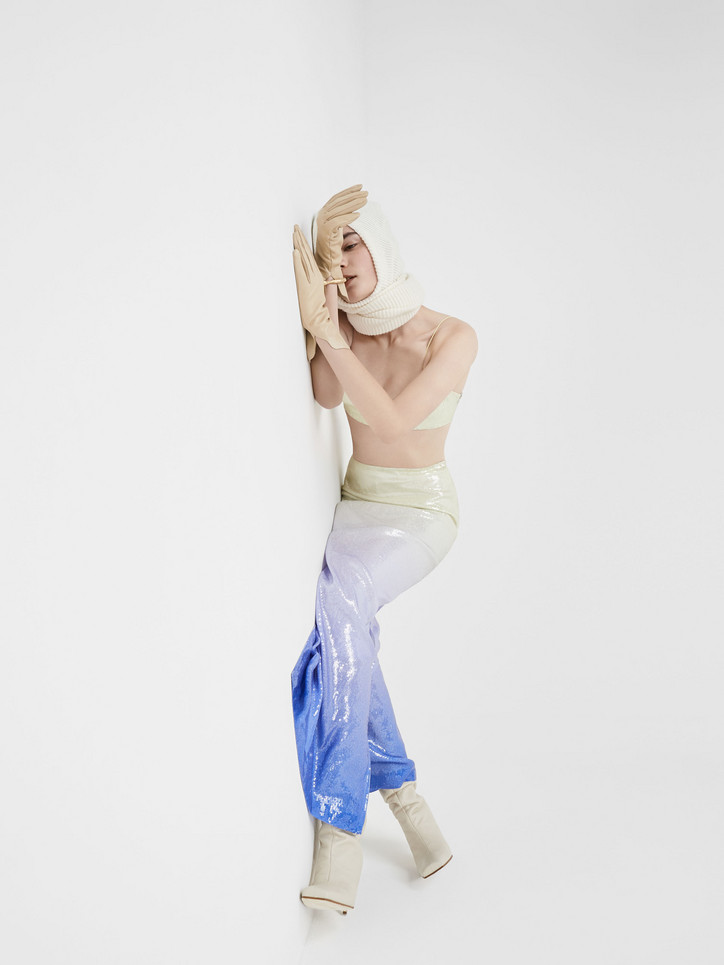Check out the collection below.
Stay informed on our latest news!
Stay informed on our latest news!

Hi, Gabe! The show was so amazing.
Thanks for being there!
Of course. Let’s go in reverse chronological order. What’ve you been up to since your show?
After the show I went to Fire Island. With Timothy Gibbons, who helped design the collection, to take a breather. Now I’m back and feeling stressed again. It’s market week. But I’m still feeling good.
How was your party? A lot of NYFW parties are kind of boring — they can feel like air coming out of a balloon slowly. But your party was cute — a real family affair!
It felt really good. My uncle has a soda brand called Gus, so he sponsored the party and I got to design drinks with his soda. It felt close to home.
As a designer, do you do other things during New York Fashion Week — go to other shows, parties — or are you really locked in on your show?
Just locked in. I really wanted to go to Gauntlett Cheng’s show — I used to work with them. They came to mine, which was really nice.
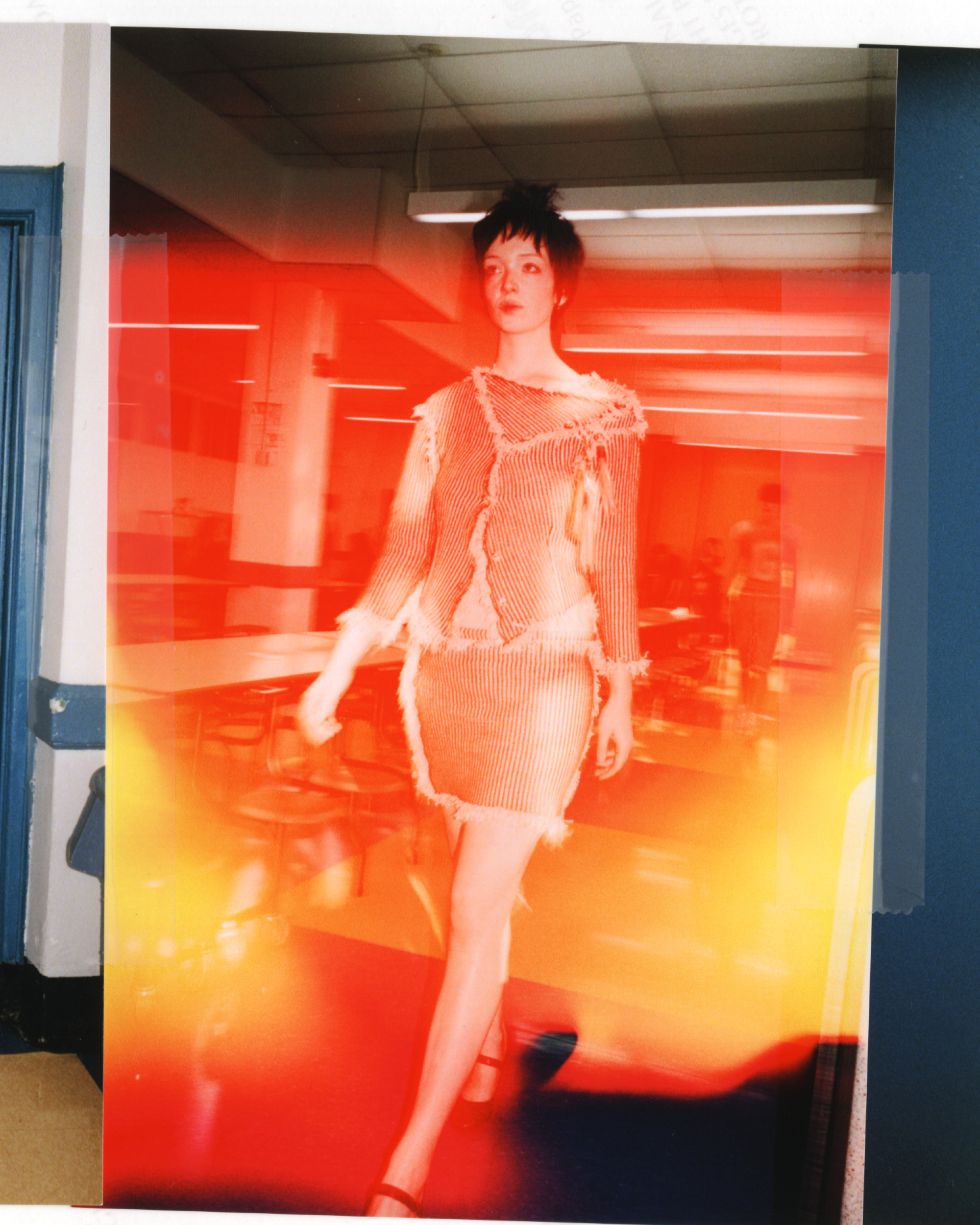
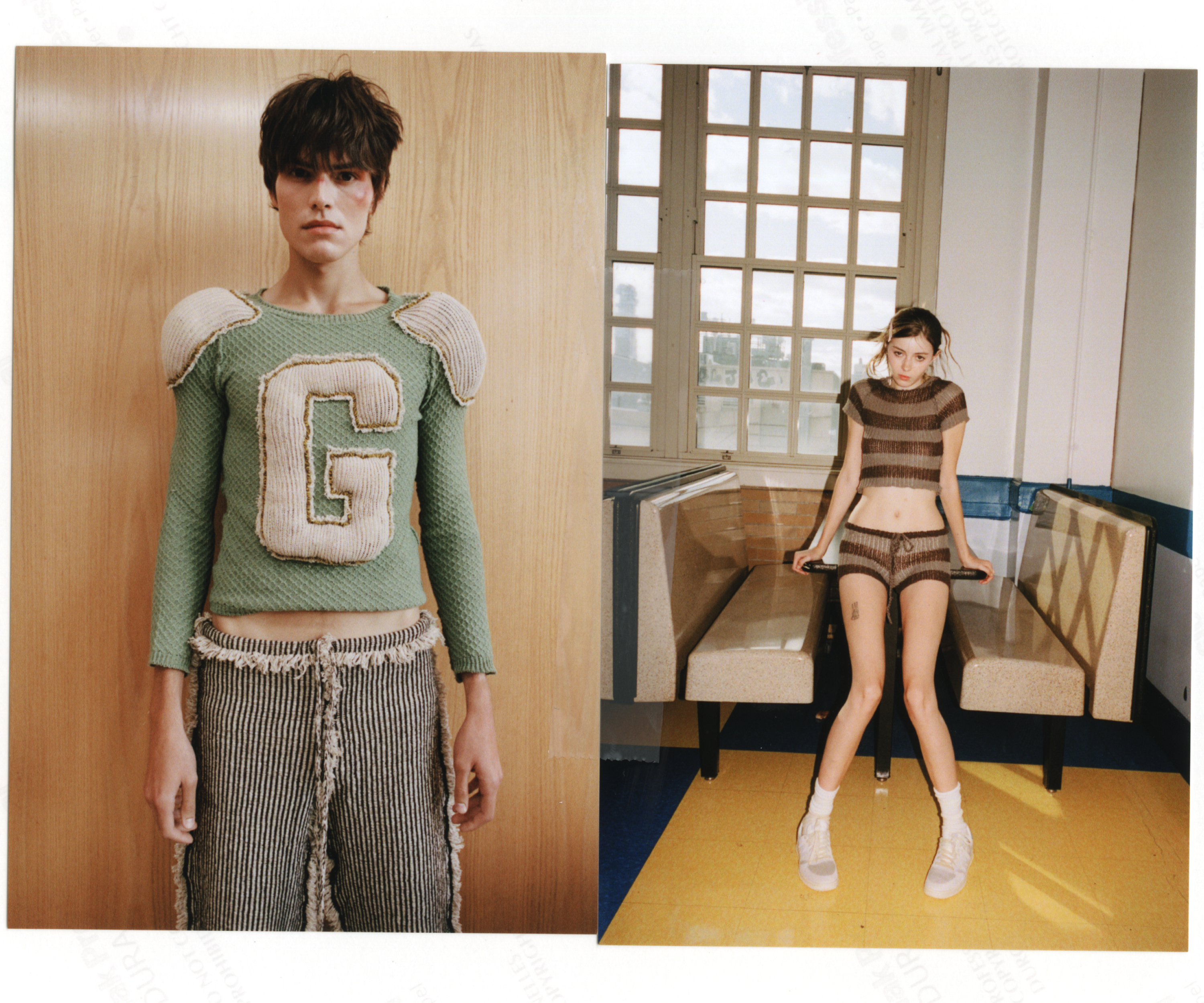
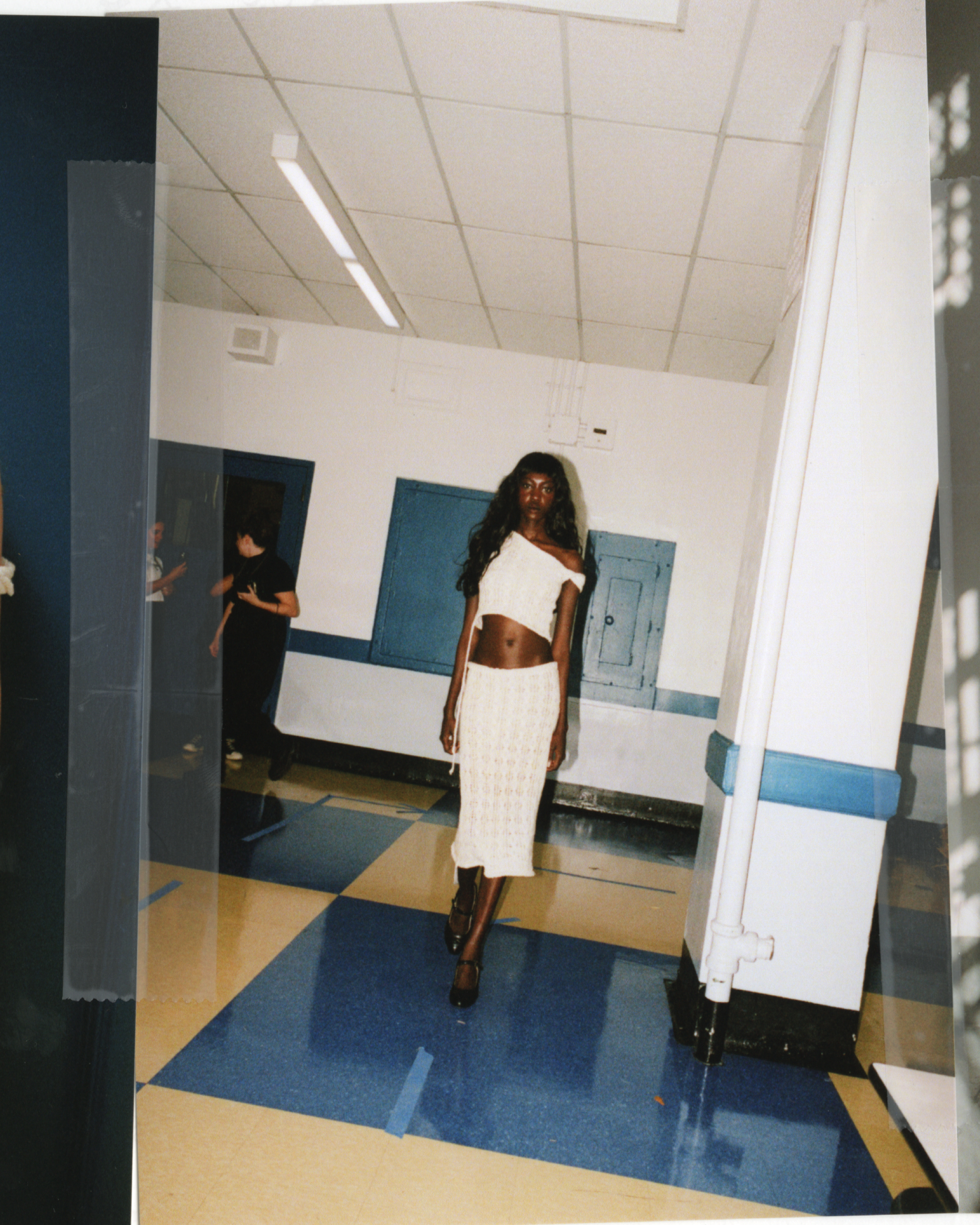
If you squint, you can sort of see some fashion family trees in lineages in the New York fashion world — you worked for Esther and Jenny at Gauntlett Cheng, they worked for Mike and Zoe at Eckhaus Latta. And I think Mike and Zoe worked at ThreeASFOUR. There’s an arc there. A DNA centered on knitwear, a fidelity to geometry.
That lineage is real. And Zoe Latta and Mike Eckhaus went to RISD. And Jenny Cheng went to RISD. I worked for Gauntlett Cheng while I was in school. I also went to RISD. And every summer I have interns from RISD who work on my collection. It’s like a real community.
RISD mafia!
Yeah. And Ben Doctor, too. He went to RISD.
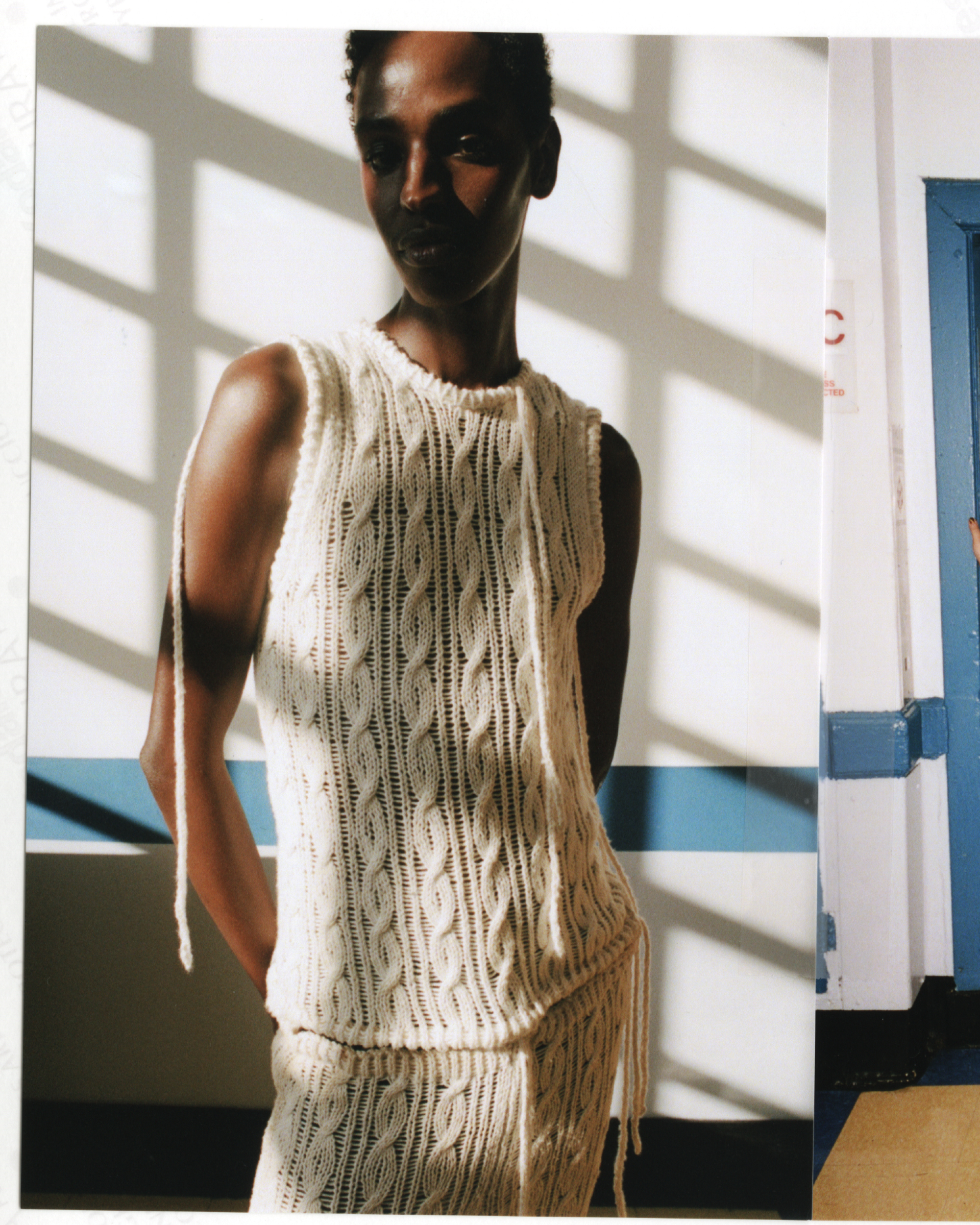
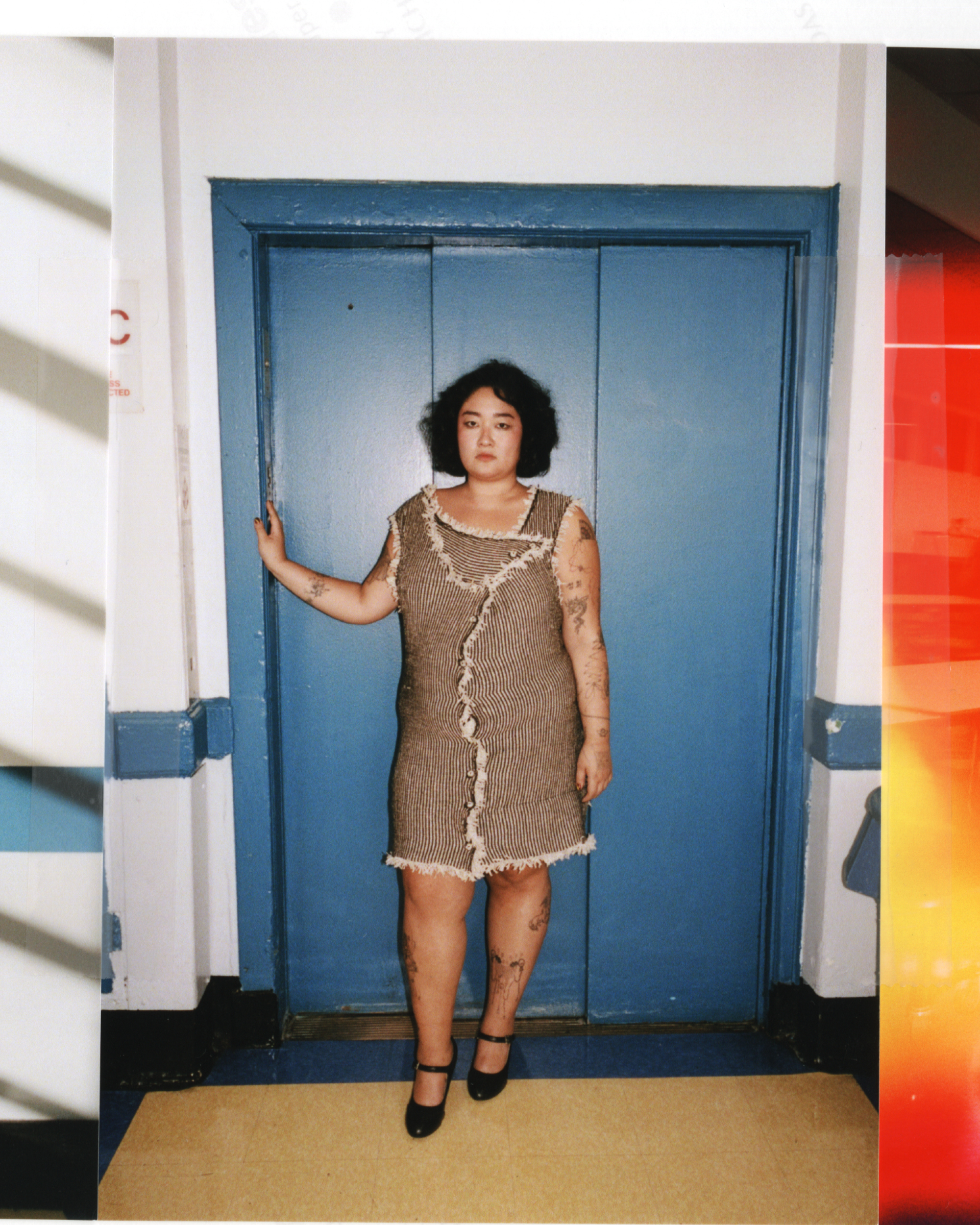
This being your first show, were there any veterans or industry insiders who helped guide you through the process?
The photographer who shot my first looks helped. Michael Hauptman. He’s been in fashion for a while and shot first looks at many shows. He knows how the whole thing goes. It was nice having his eye and input throughout. It was a first for a lot of people though. It was Iman Said’s first show styling.
Yeah, Iman is so cool.
Yeah. It was her first time styling a show by herself. And Shay Gallagher — it was her first time producing a show. Gus Grossman who did the art direction, it was his first time art directing a show and doing the graphic design around the show. It was a new, fun experience for everyone.
I feel really inspired looking at your clothes. The first time I photographed them was with my friend Lauren. There’s a lot of sub-surface sexual appeal to your clothing. Can you explain how you view the relationship between clothing and sexual appeal?
I have a weird relationship with menswear as a male designer. It’s hard for me. I get in my head. "What would I wear?" So I gravitate towards making womenswear from the start. My work started as this form of catharsis. I started making knitwear after my dad passed away. I was interested in how cloth holds traces of history. From the start, I’ve gotten feedback about how the work is sexy. That wasn’t always the goal. It’s not what I’m thinking about when I’m making the clothes. The sexiness comes from anxiety from dressing. One of the big references is horror movies. The final girl in a horror movie being chased by the antagonist. Her clothes tearing off. It comes off as sexy. But it’s more rooted in feelings of anxiety.
That sort of horror is so carnal.
Yes! But I love the way it has evolved. I don’t know how my audience or the customers see the clothes. But the clothing evolves [on figure]. Each customer has their own experience with my clothing, which I really like.
The personality of the wearer really shines through your clothing. Does producing a show psychically change your attitude or process towards making clothing?
Yeah. I’ve had a lot of roadblocks. Having a business. Not knowing how things work. Last year I felt really disconnected and pessimistic from the whole experience of having my own label. But what has excited me is this idea of world-building through the clothes. That’s why I want to design. I want to think about characters and the world in which they exist. The runway is the ultimate way of displaying that, showing it to my audience. With lookbooks I can do that. But being in person with an audience — it can be a whole experience, with music and perfume. It's made me really excited to keep going.
What are some fashion references that are eternal for you?
This season I was inspired by a lot of Alexander McQueen’s collections between 2000-2004. There was one collection and the story was about a shipwreck. I loved the really direct form of storytelling through that collection. It’s what he was amazing at doing.

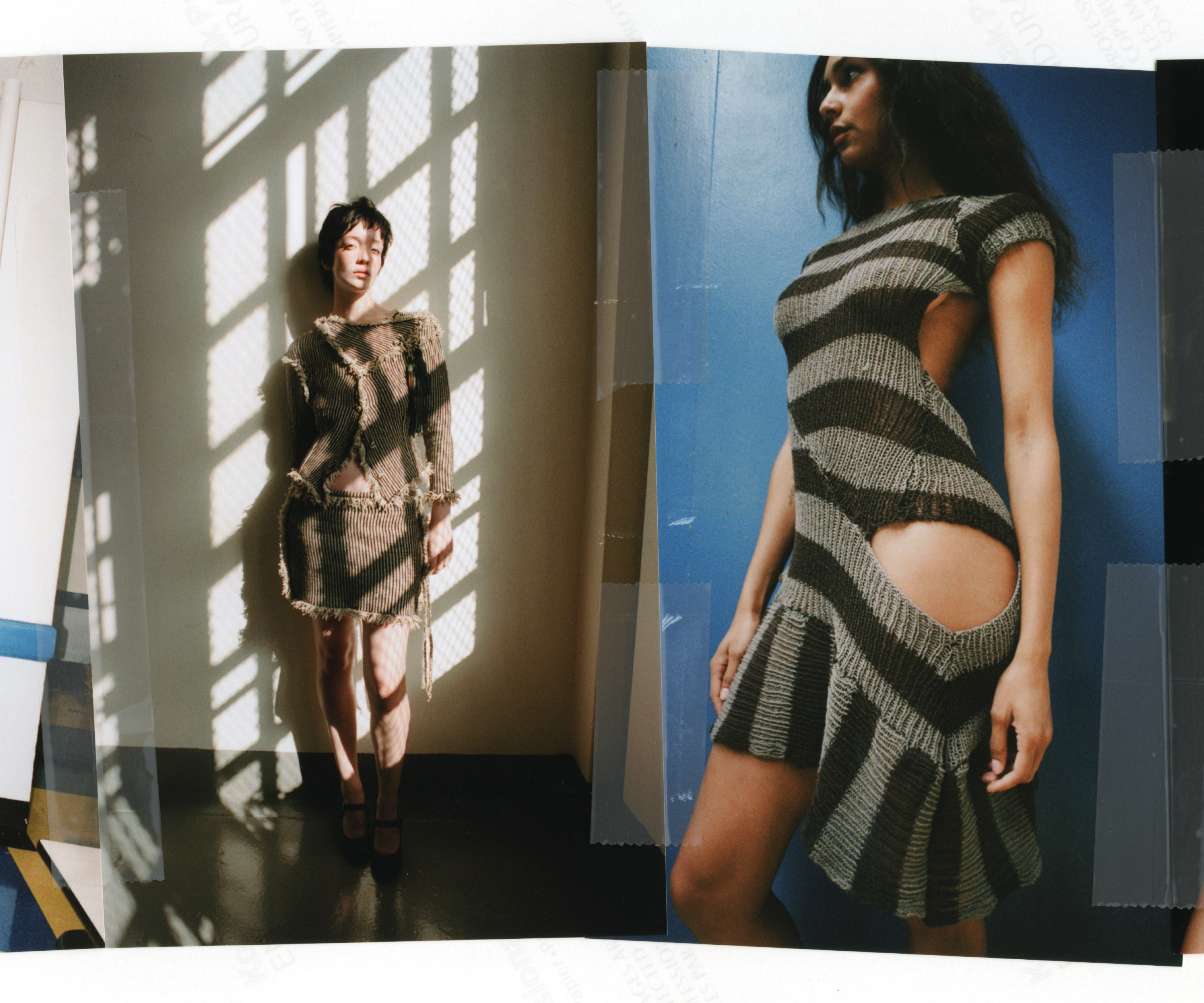
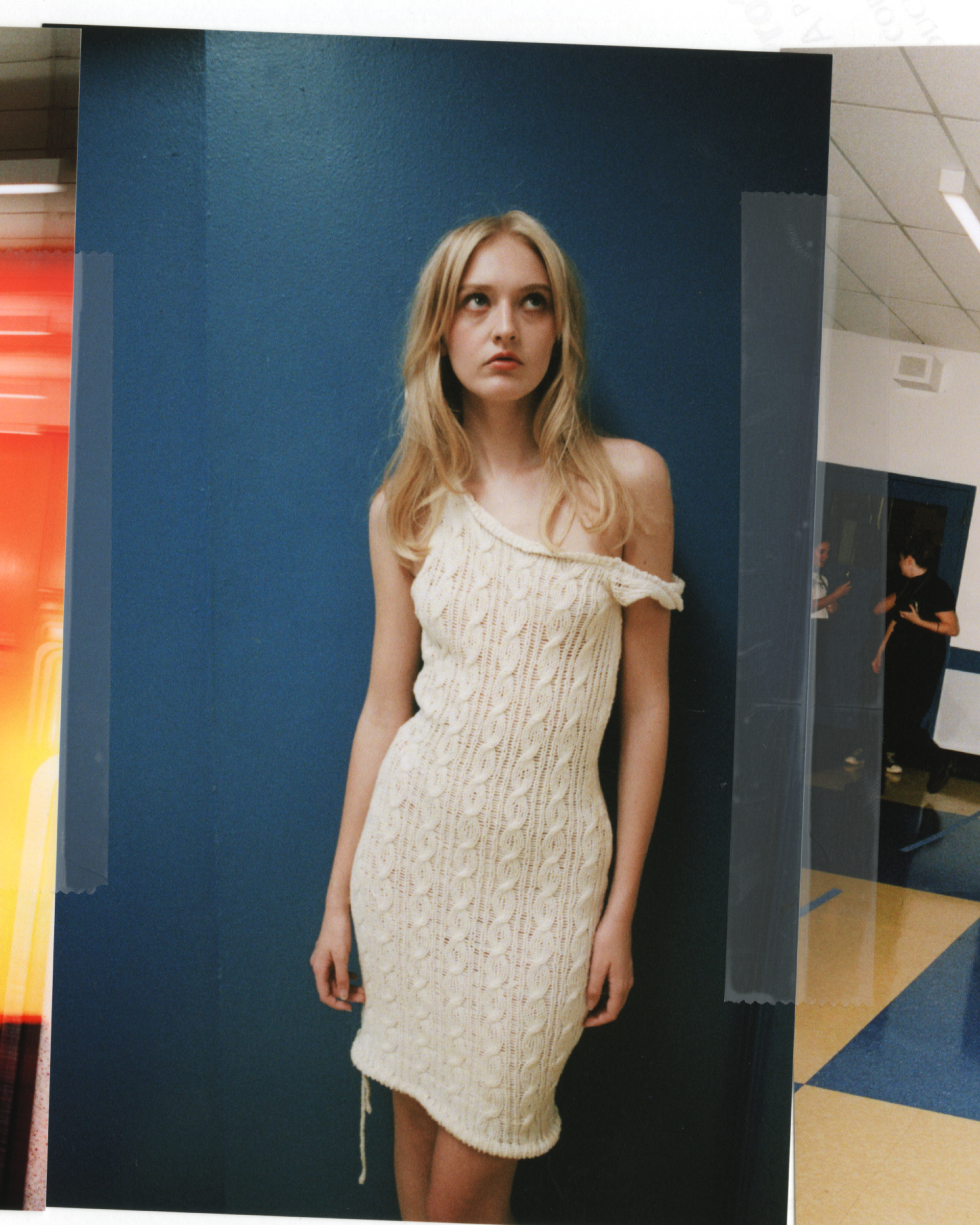
Tell me about ‘Horseplay’.
Yes. I took the fall/winter 2024 season off. I sell at a few stores in Australia. I needed a break from making new stuff. I was feeling disconnected. I went to Australia for some pop-ups for two months. I got this book about Australian ferns. I was obsessed with the illustrations of the ferns.
I was researching these jocks called Sharpies that were big in the 1970s. With my work I’m always interested in this nostalgic Americana, which is very present where I’m from. I was really excited by these jocks and the clothes they wore. They were tight, striped knits. Something about it was so homoerotic. Part of Australia reminded me of the equestrian farmland I grew up near. I thought it would be so cool if I created a story where the protagonist is in this world of horse girls and jocks.
In my head, I created this story about this boy who had a nightmare that he’s in a competition amongst these really sexy, cool girls. Like the girls at my high school I looked up too. Then the boy falls off his horse into a fern bush. It is nighttime. He’s pulled out of the ferns by these jocks who haze him and have him kill off the horse girls to win a prize. That story came to me in five minutes. That’s how I work. Really impulsively.
Your process seems instinct-driven.
Yes. That’s the horseplay idea. It’s interesting you bring up the sexiness of the clothes. I did lean into sexiness in this collection. The horse girl being a sex icon. I keep referencing or thinking about this one hot babysitter I had. Having her be an icon as a gay kid. These horse girls are the hot babysitter or my sister's hot older friends [laughs]. It was also fun designing the menswear. Different vintage sportswear. The first shorts I worked on with Timothy were inspired by vintage football shorts. Super high waisted. There’s something very gay about them. We decided to make them out of fur. When clothes are made out of knits, it turns them homoerotic.
In your clothing, there is an allusion to it being taken off.
Totally. That’s always been present. The first knits I made were about layering and thinking about taking layers off as well as feeling comfortable in what you're wearing.
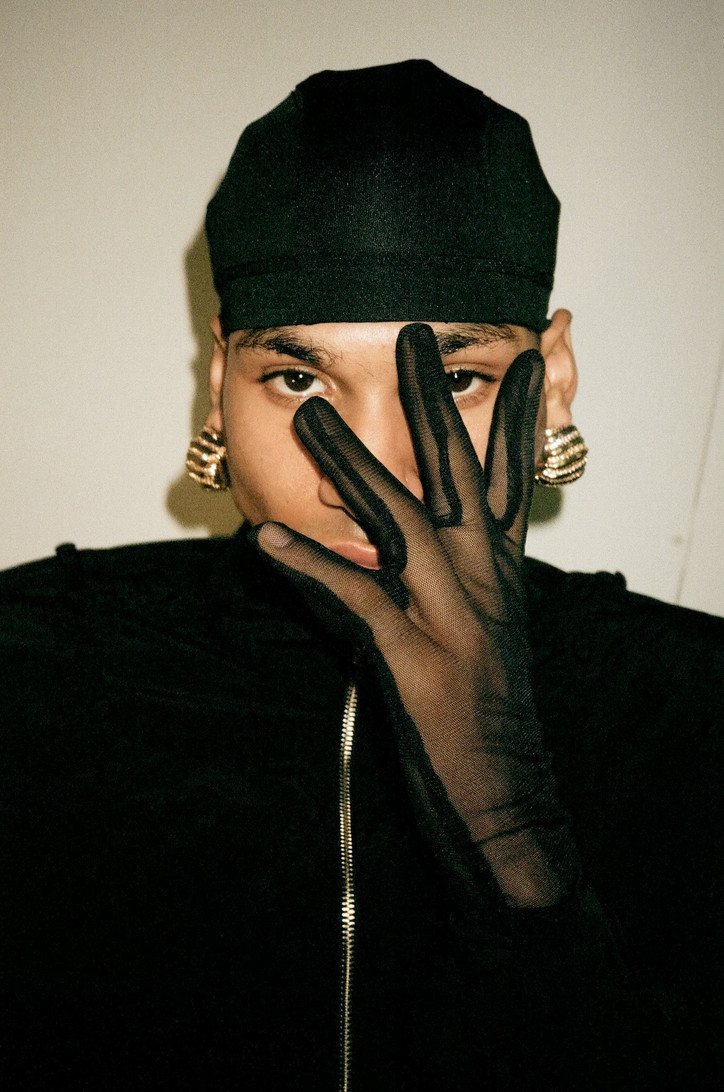
As attendees settled into their seats, the familiar flags of Rockefeller Plaza, with the Luar logo, lined the catwalk. The soundtrack boomed through car-sized speakers, chanting what sounded like “Luar” in a rhythmic, hypnotic loop, reminiscent of a very New York Dominican block party. Lopez himself quipped, “They gave me the flags, so we gotta bring in the cars."
Cocooned silhouettes, warped leopard prints in pony hair, Italian-merino wool and beaded mesh sets, invoked a sense of Lopez coming full circle, rekindling the purity of his “old self,” as seen in hooded floor-length gowns.
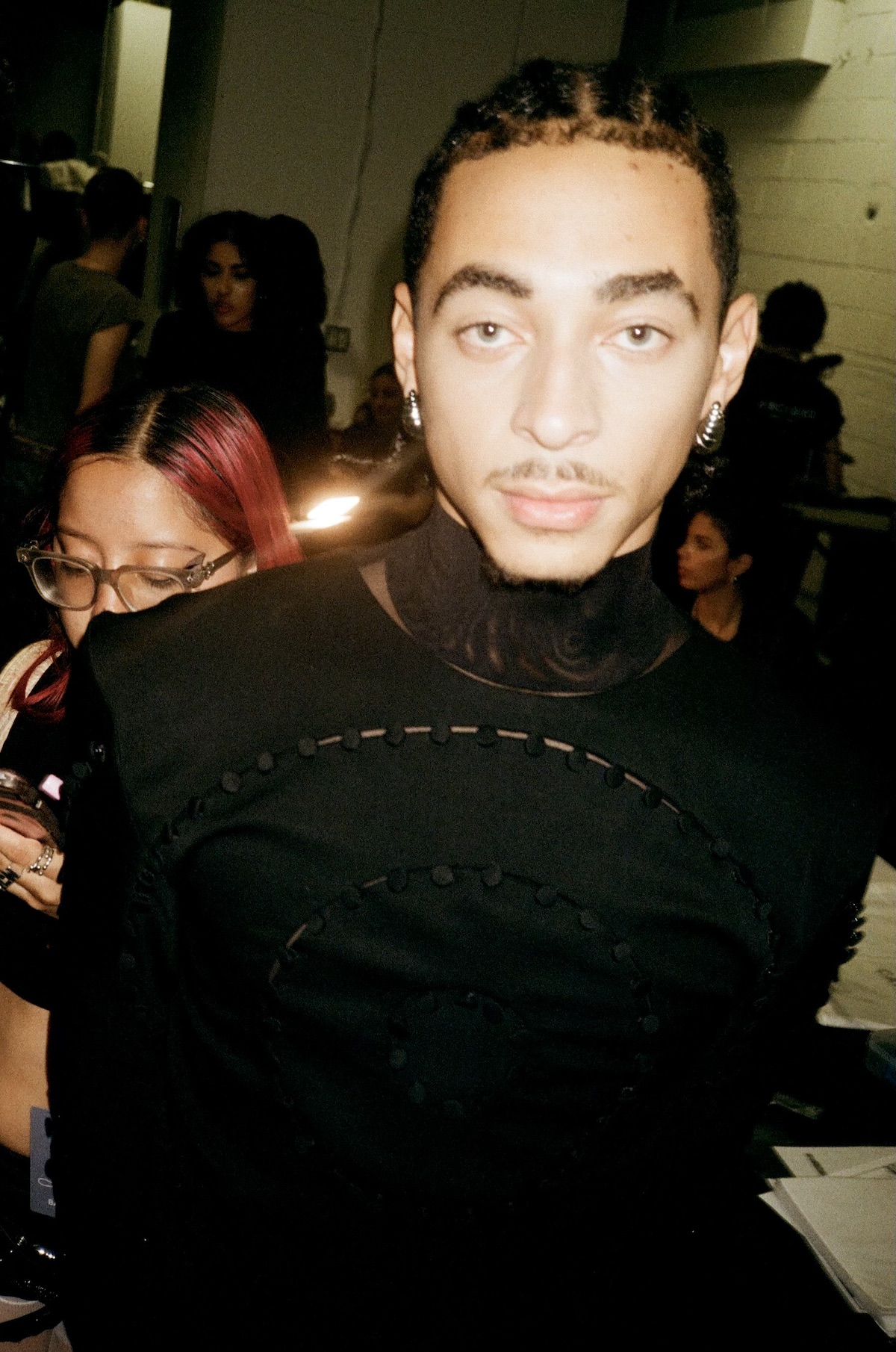

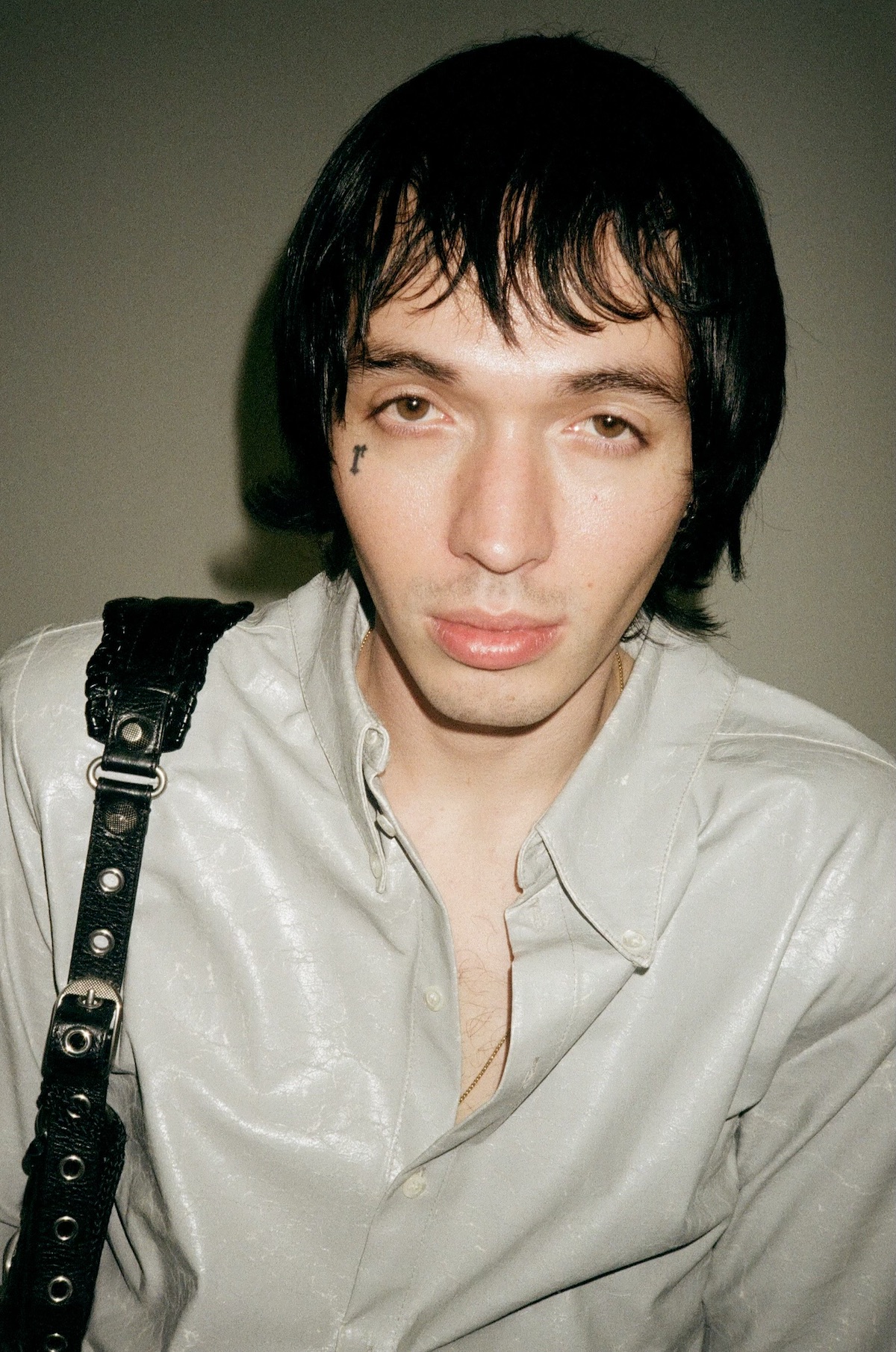


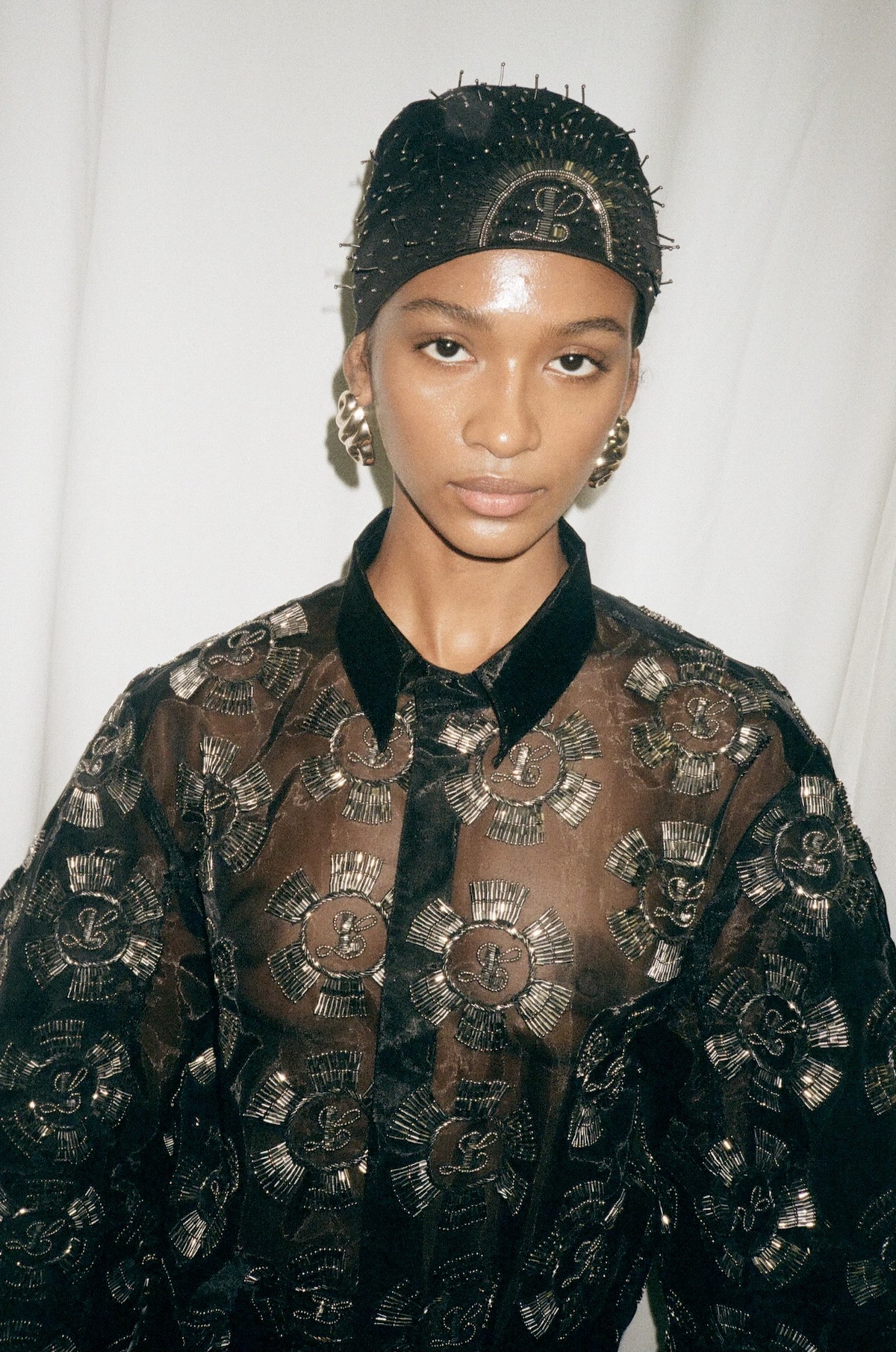

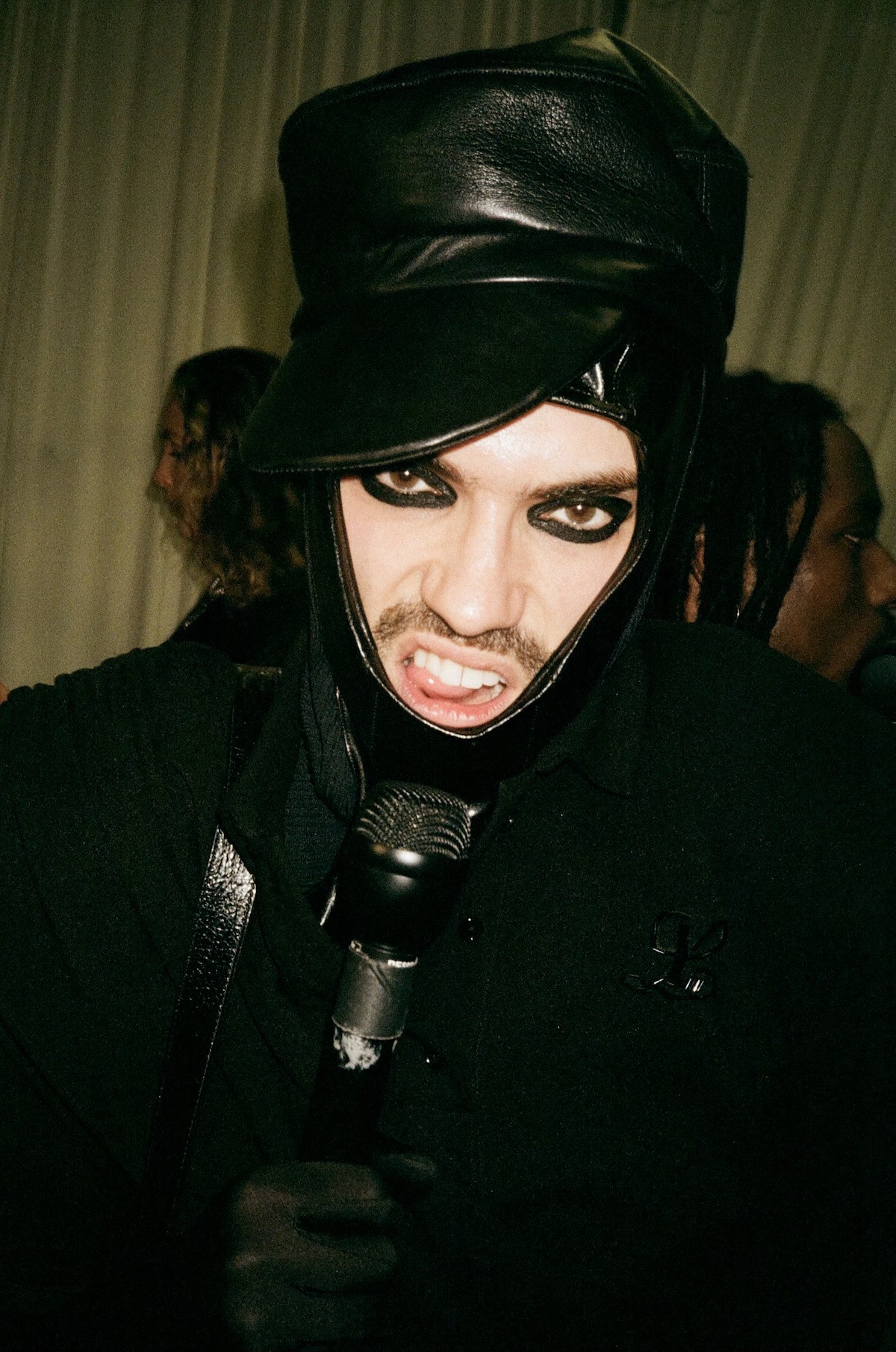

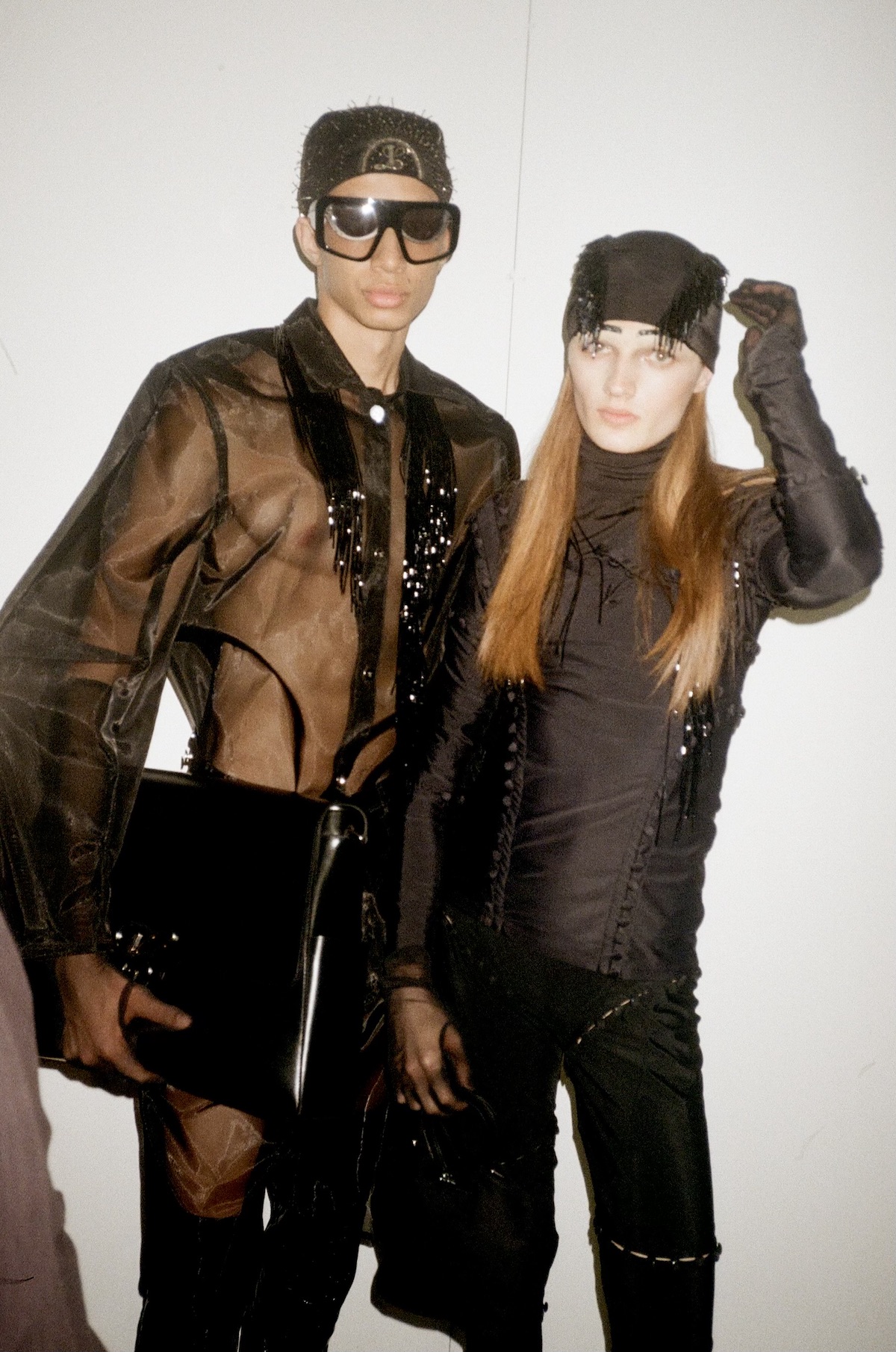
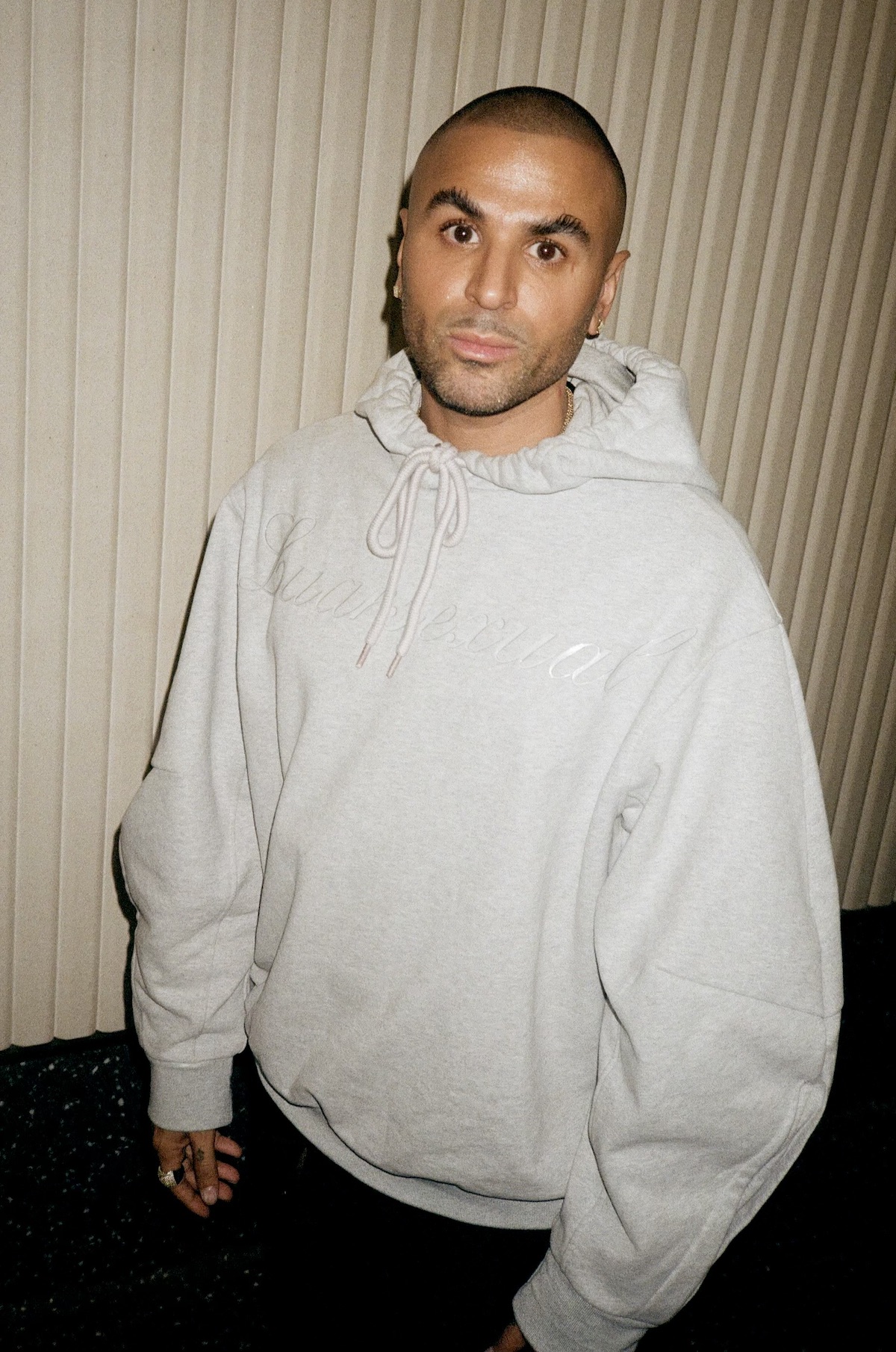
Accessories, as always with Luar, were a standout. The new Yahaira and Alexis bags were evolutions of his signature Ana silhouette; Lopez’s debut footwear collection — featuring 17th- and 18th-century-inspired clogs, kitten-heeled boots, and leather oxford loafers — was equally exciting. To complete the trifecta of new releases, Raul also debuted a brand new “Atmosphere” timepiece with JBW watches, a continuation of their ongoing collaboration season after season.
What made this show even more significant was its reflection of Lopez's roots in Brooklyn and his entrenchment in downtown NYC culture. Bringing that fluid, underground energy to a place like Rockefeller Center felt both symbolic and iconic.


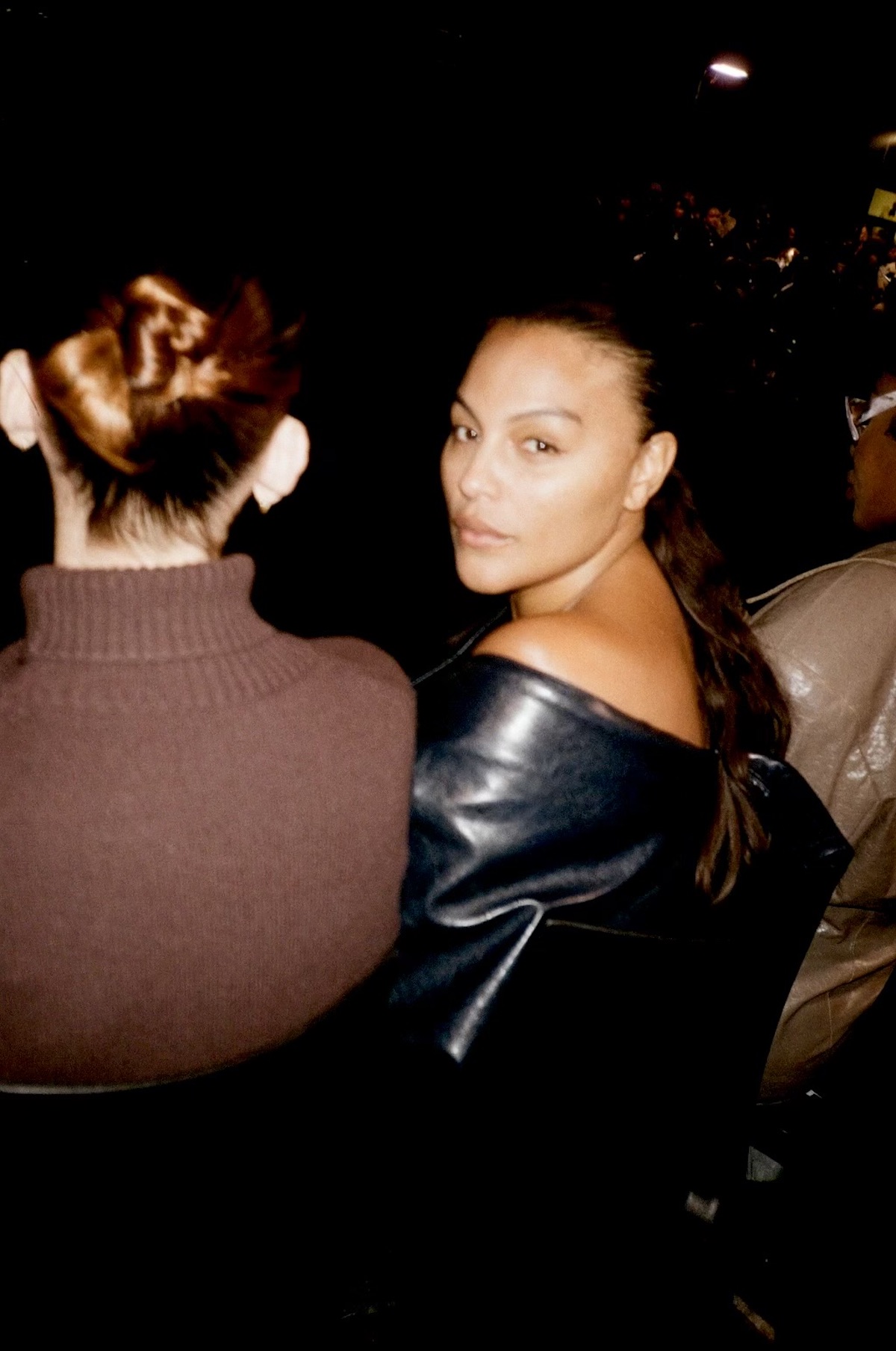
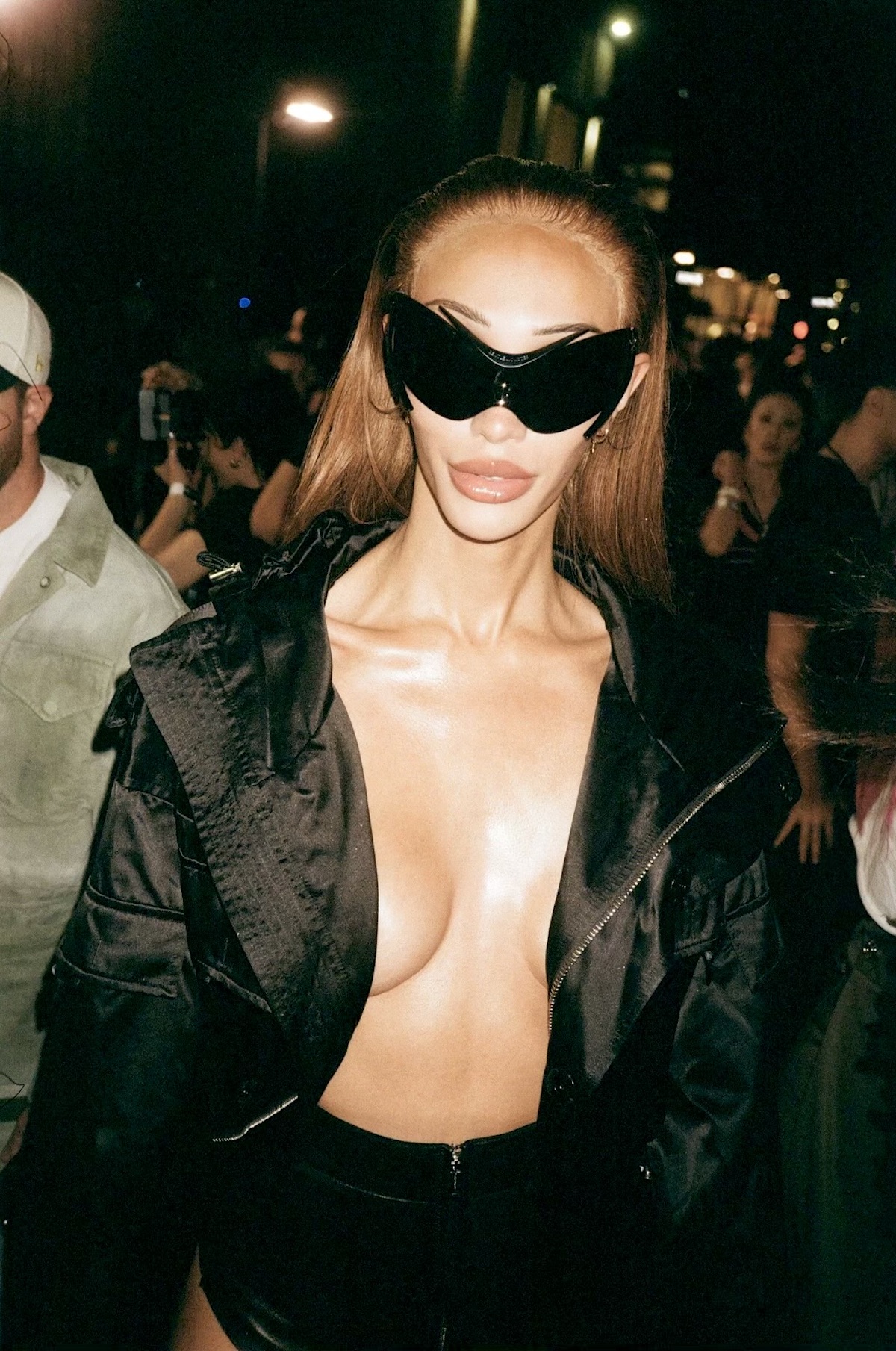

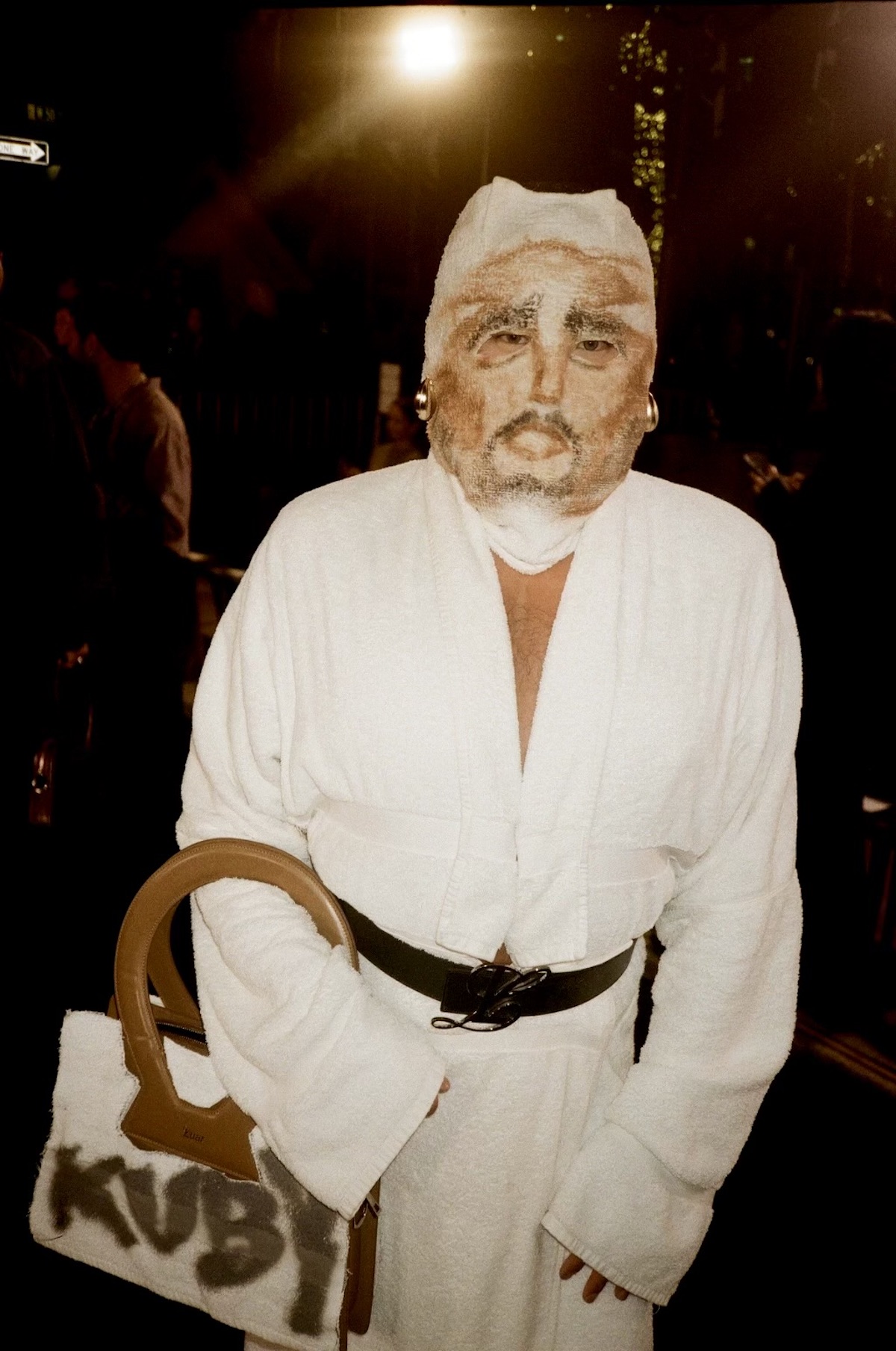

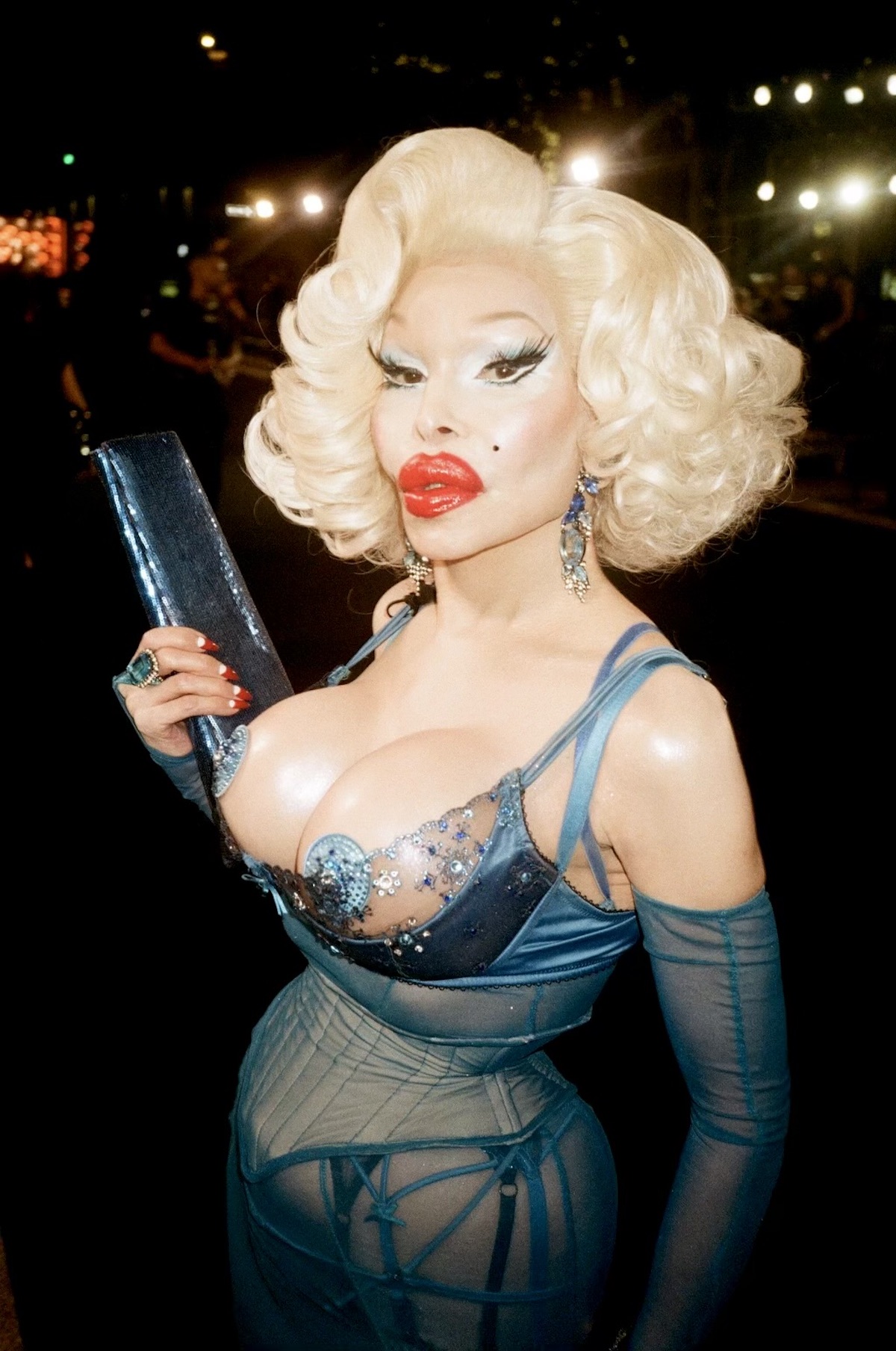

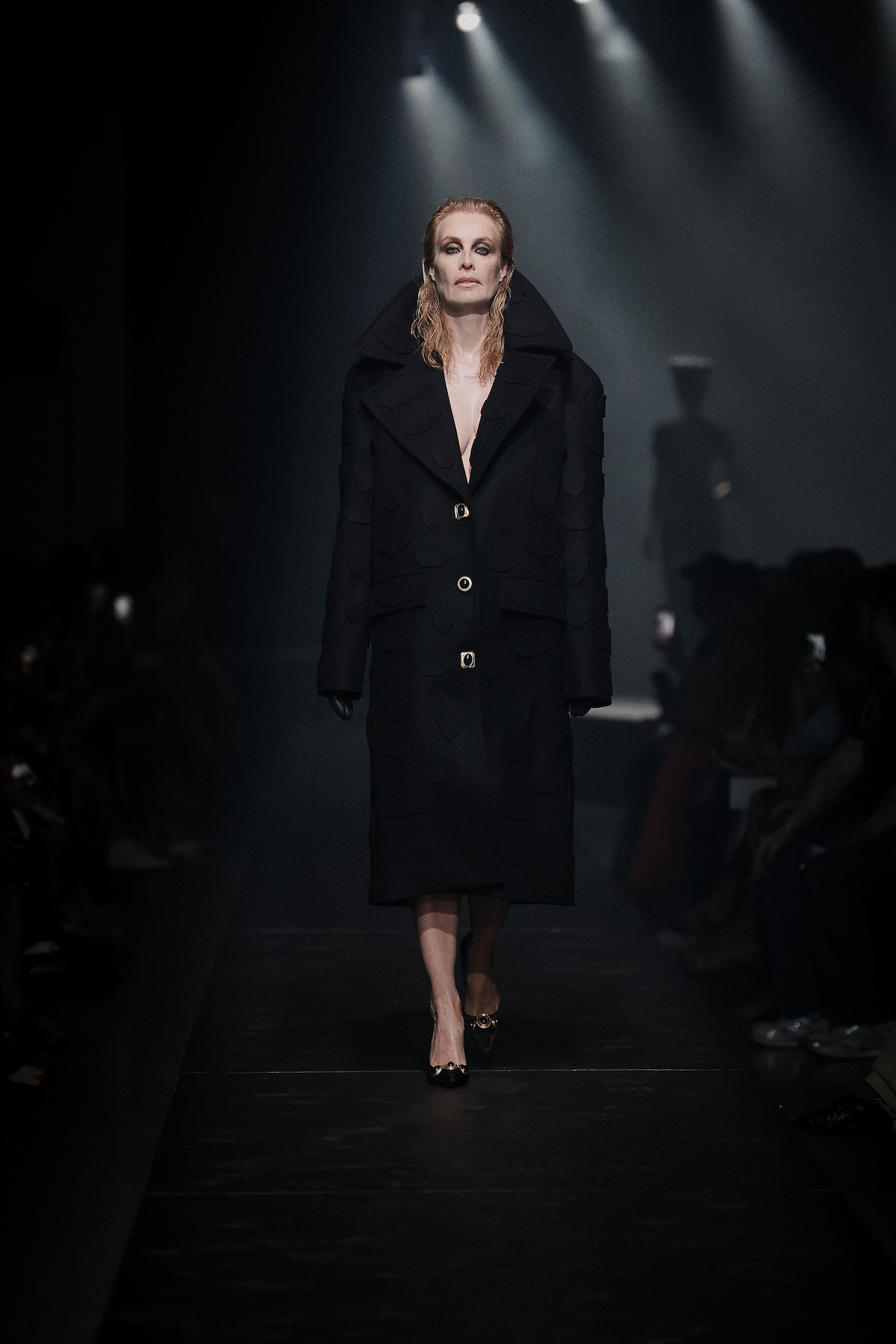

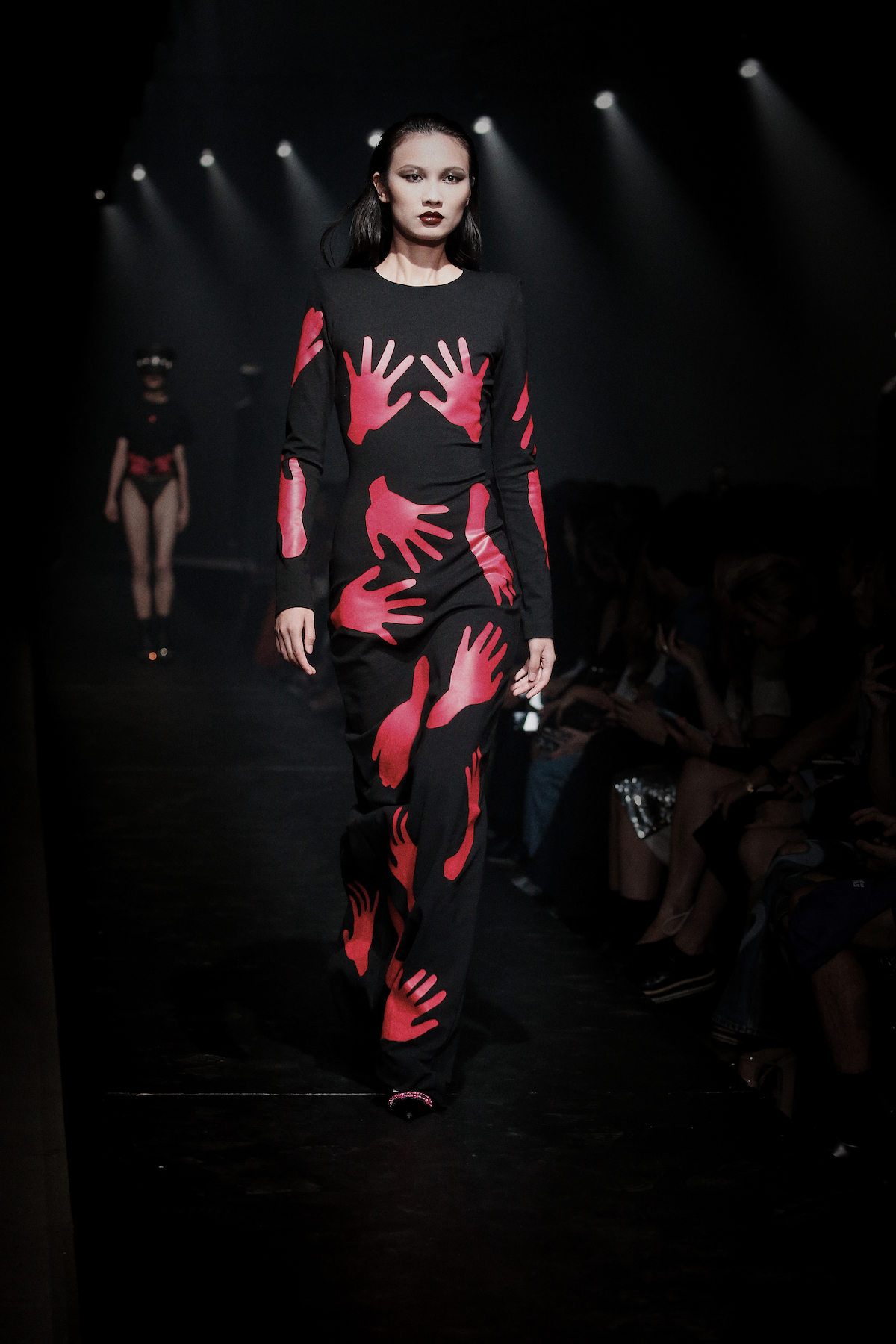
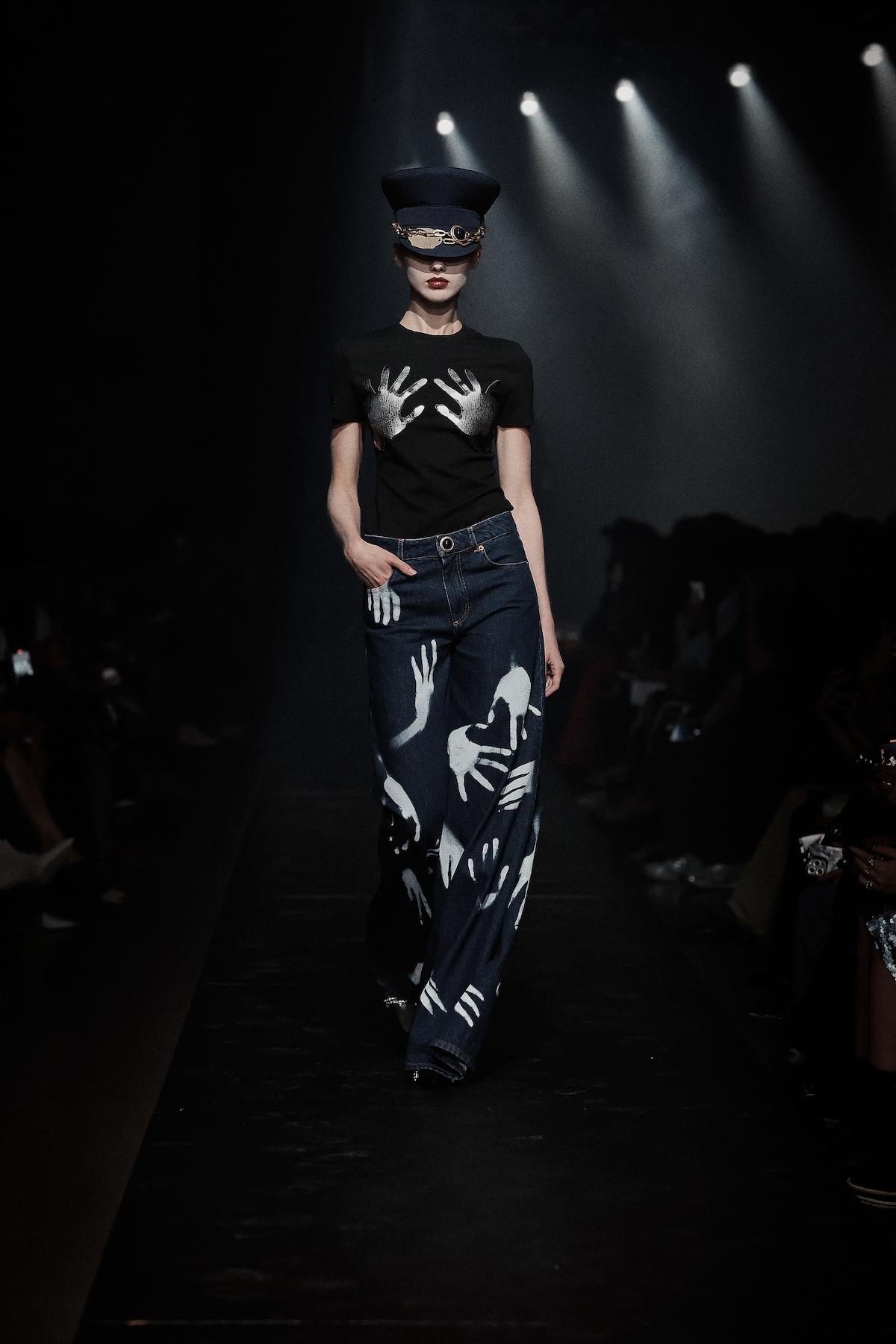
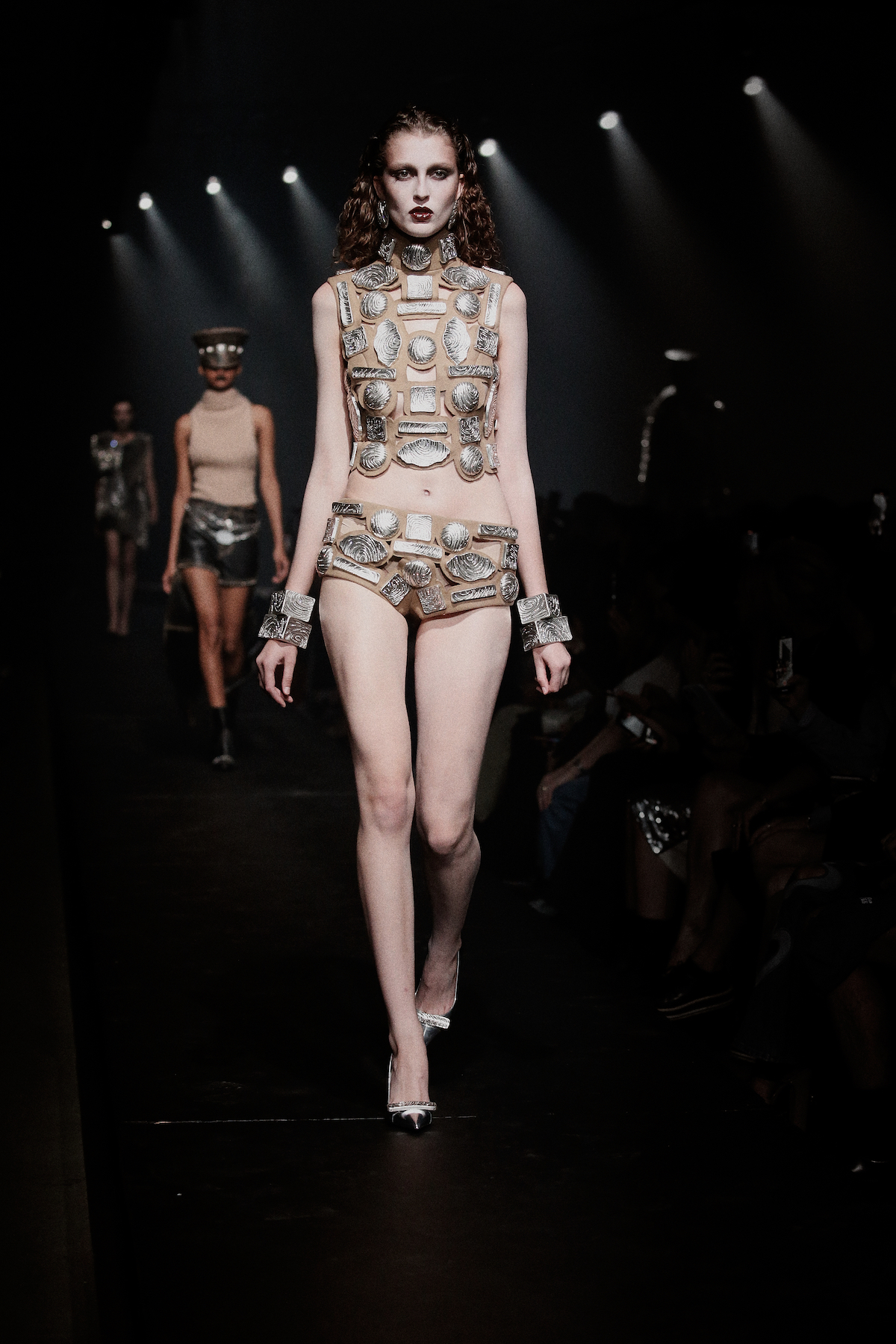
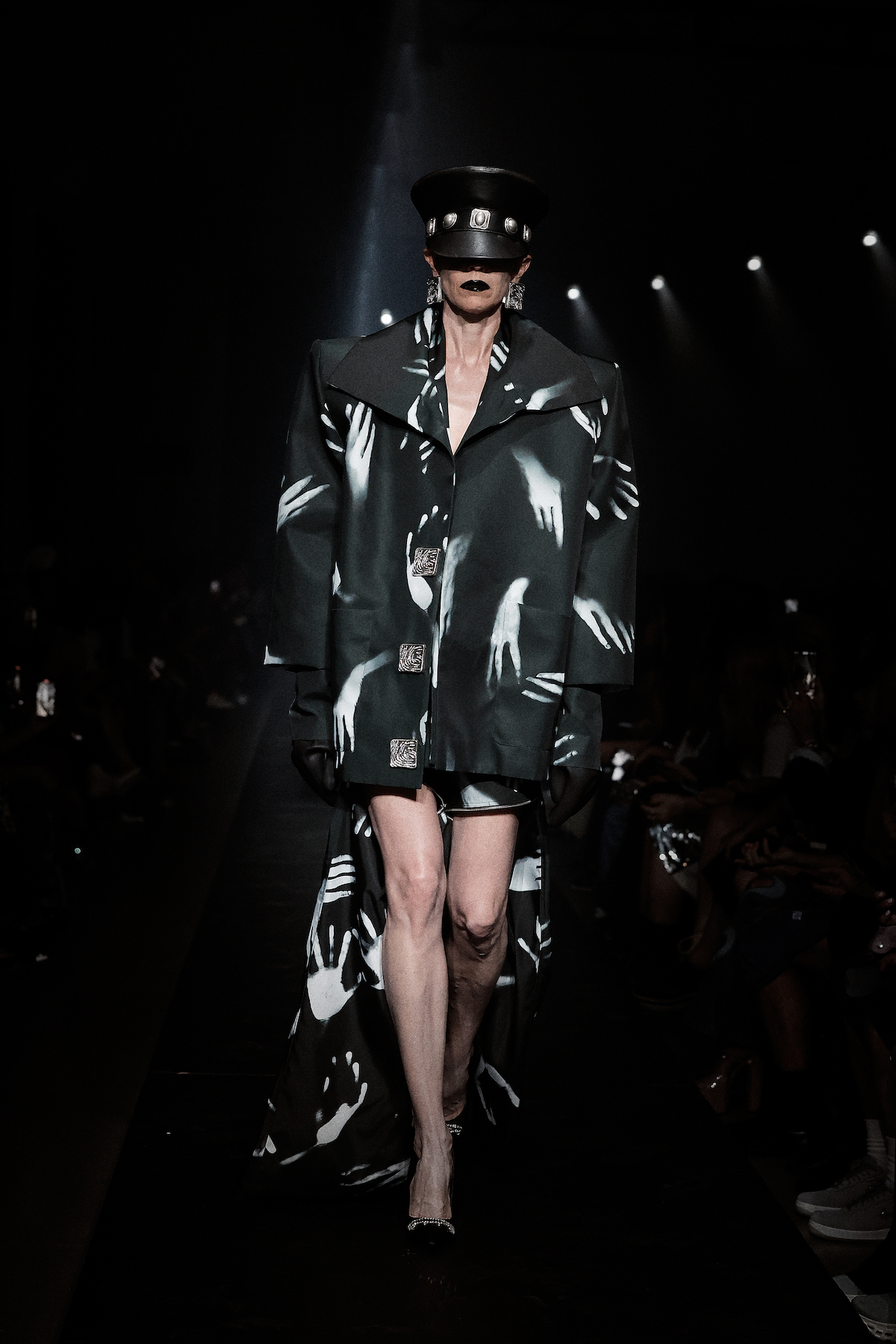
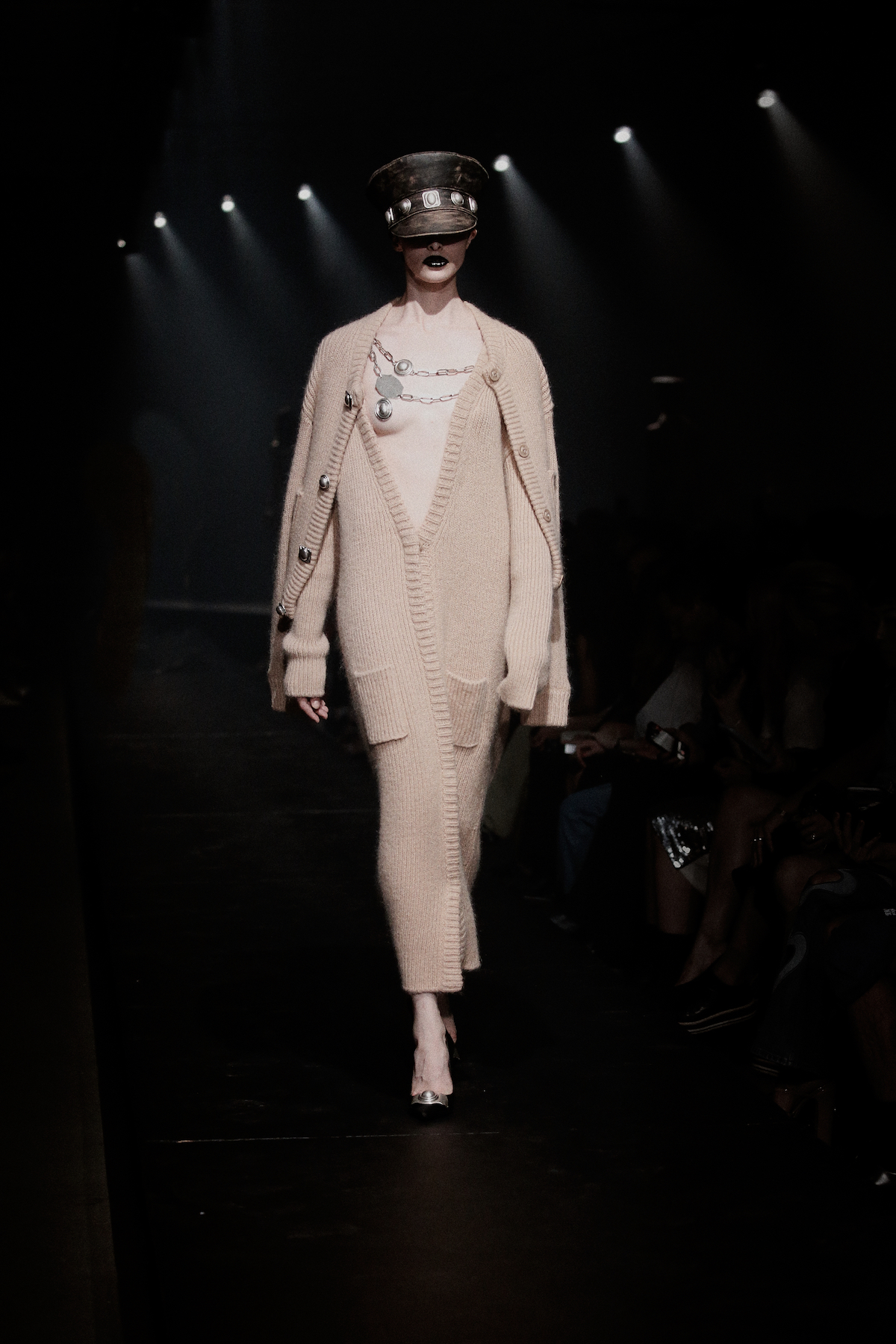
Area
By Sahir Ahmed, office Editorial Director
Photos courtesy of Area
Last season, AREA Creative Director Piotrek Panszczyk drew inspiration from 1920s cartoon eyes and ‘60s pop art. For FW24, the brand's 10-year anniversary show, Panszczyk shifted the focus from perception to creation with laser-cut, embroidered, and printed hand motifs that made the collection feel both surreal and tactile.
Where last season’s eyes critiqued, this season’s hands sculpted; hands swayed and curled on dresses, collars, and coats across both RTW and Couture looks. Photorealistic prints appeared suggestively on the chest and pockets, while feather-like hands crafted from printed nylon added a couture touch to sculptural dresses. The jersey spaghetti fringes, knotted and twisted into fluid gowns, contrasted the sharp, structured tailoring seen throughout. Piotrek’s use of hands wasn’t just an aesthetic choice. By integrating uniforms and identity plaques into the designs, the collection highlighted the ways in which we define ourselves within — and often against — systems of conformity.
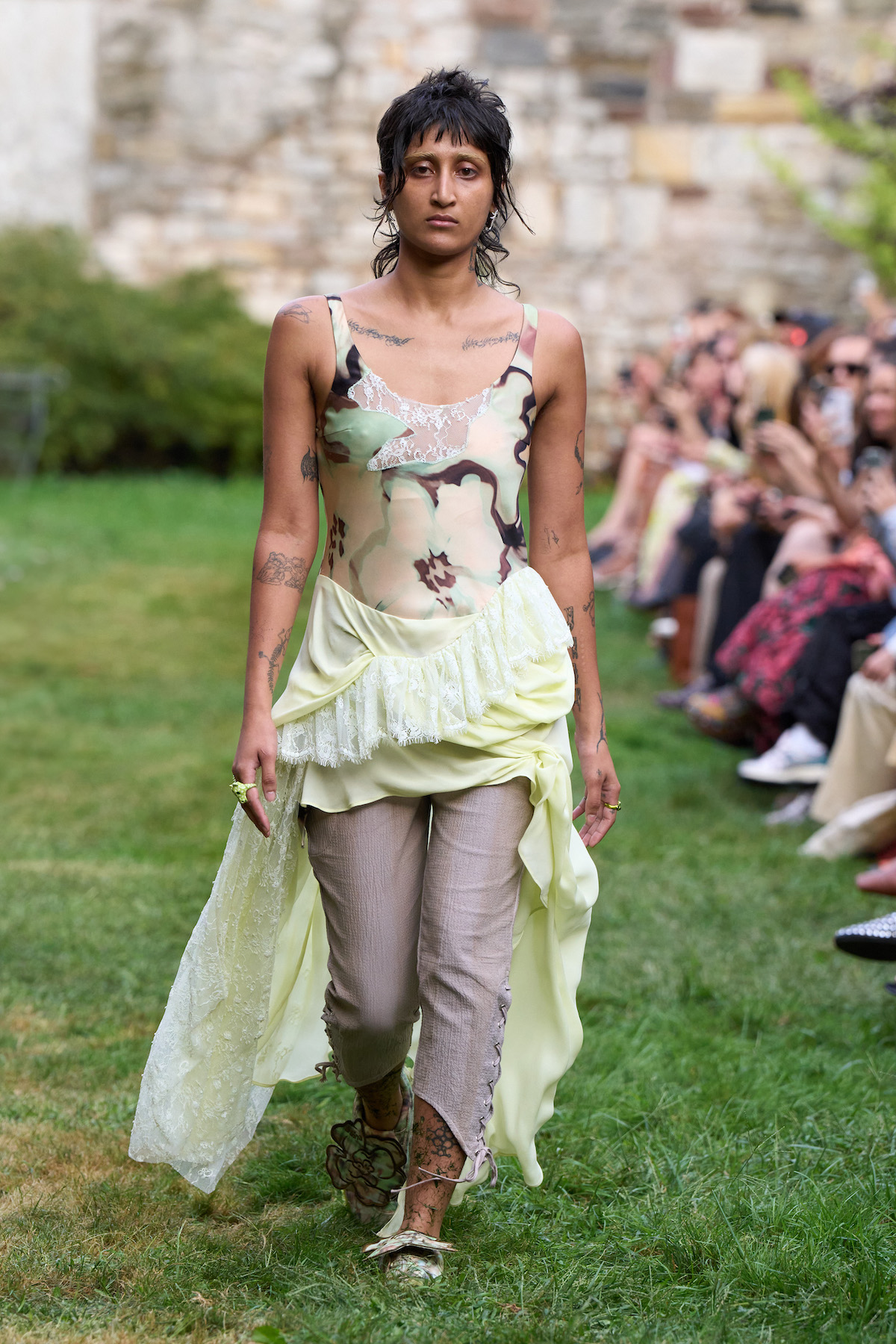
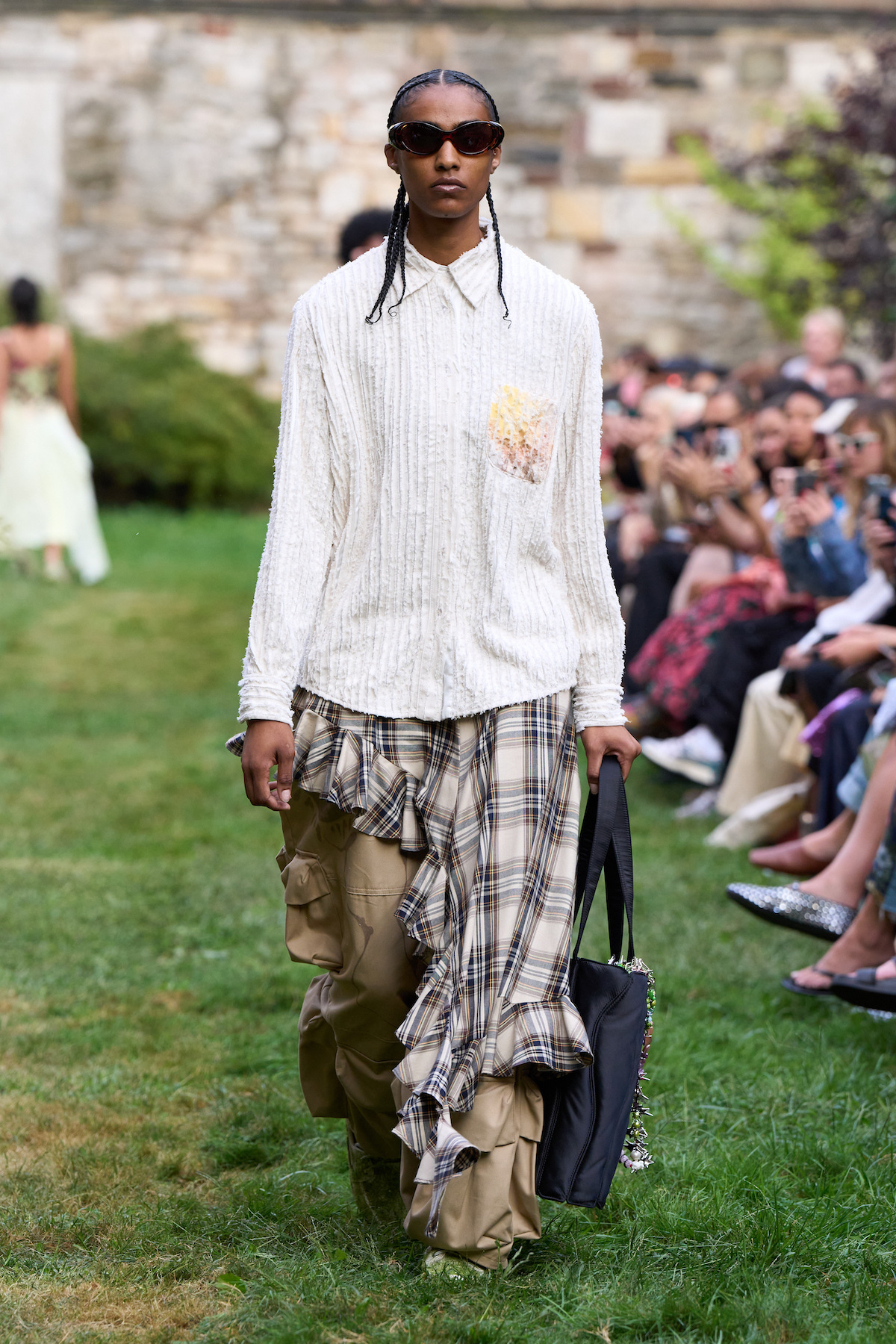
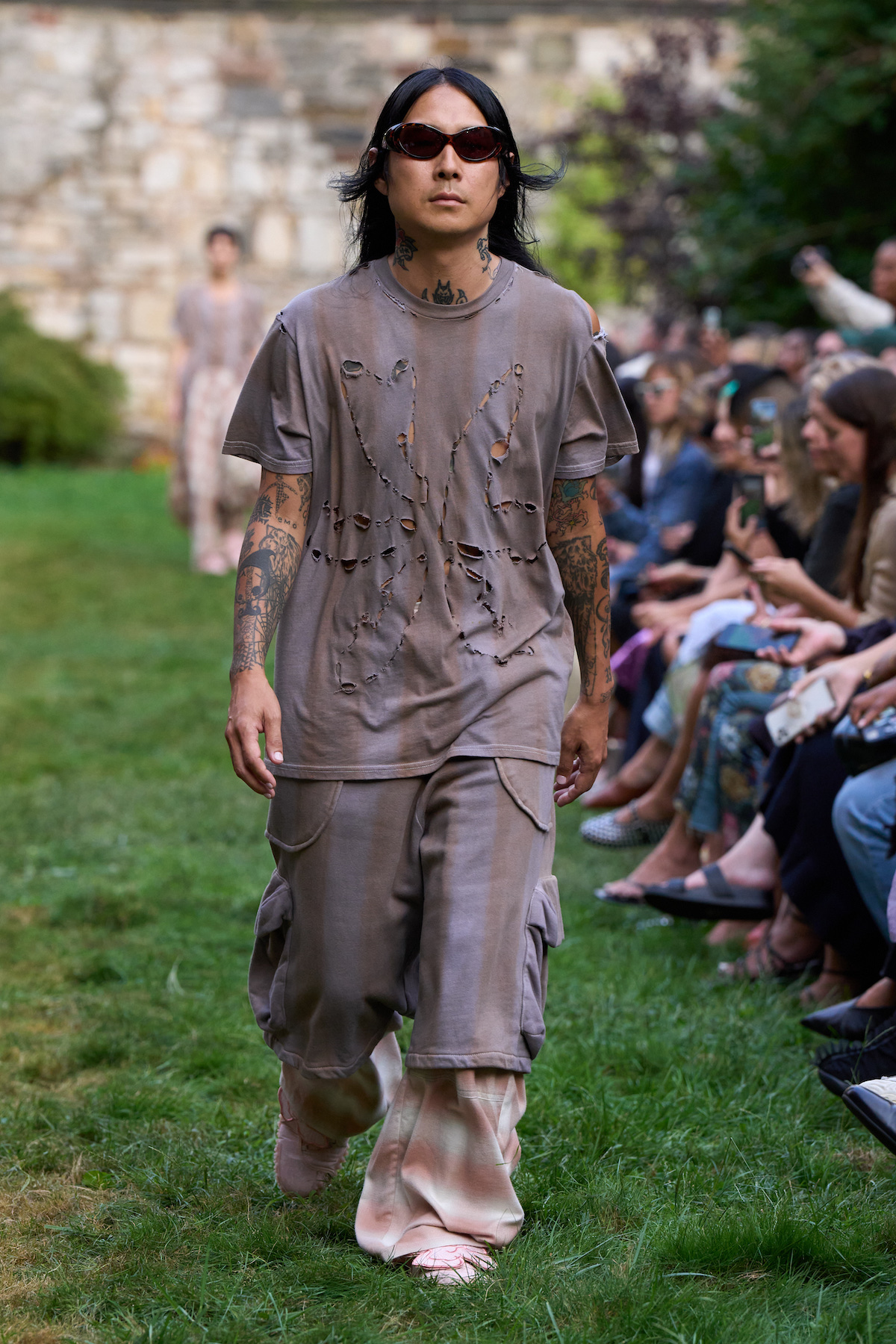
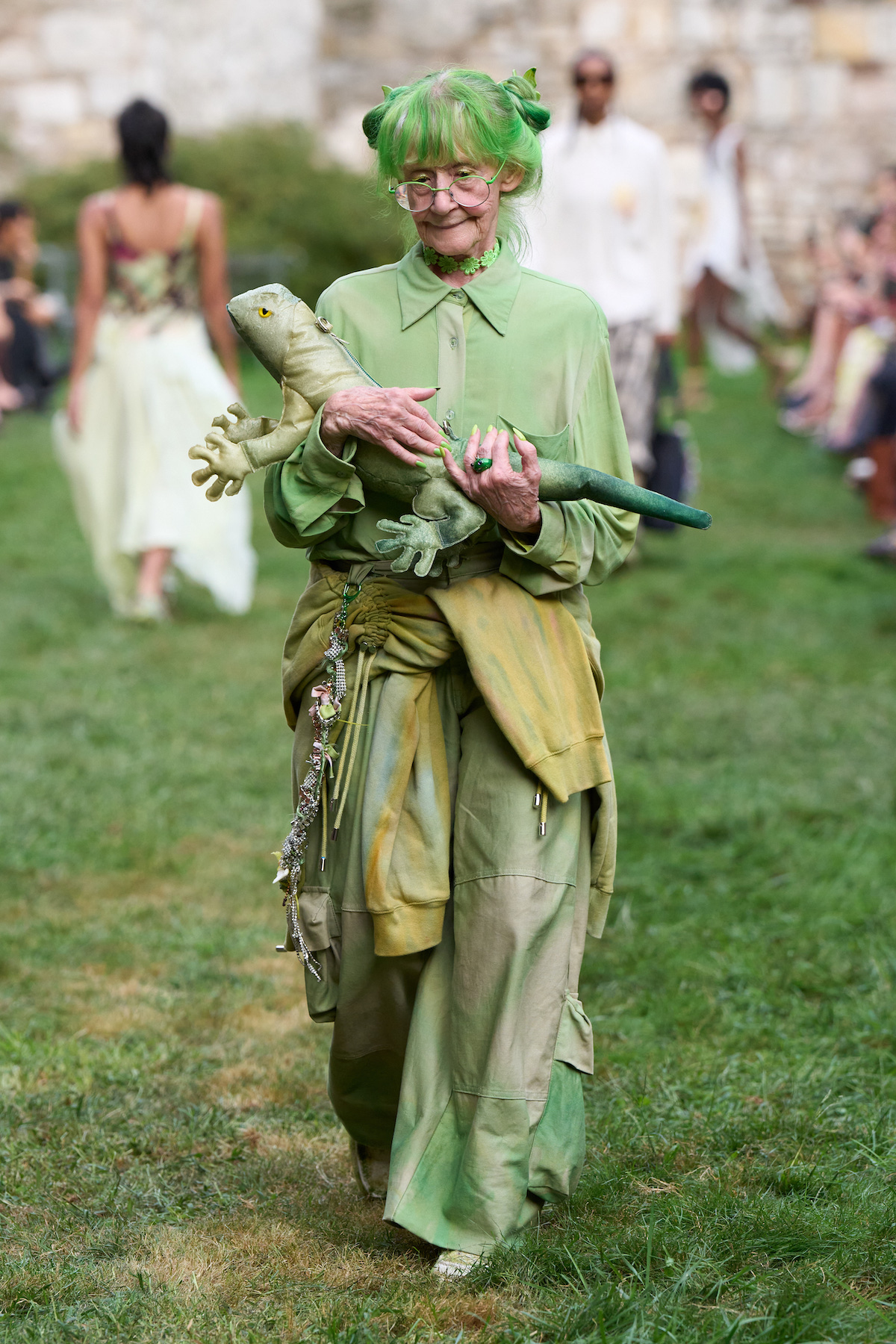


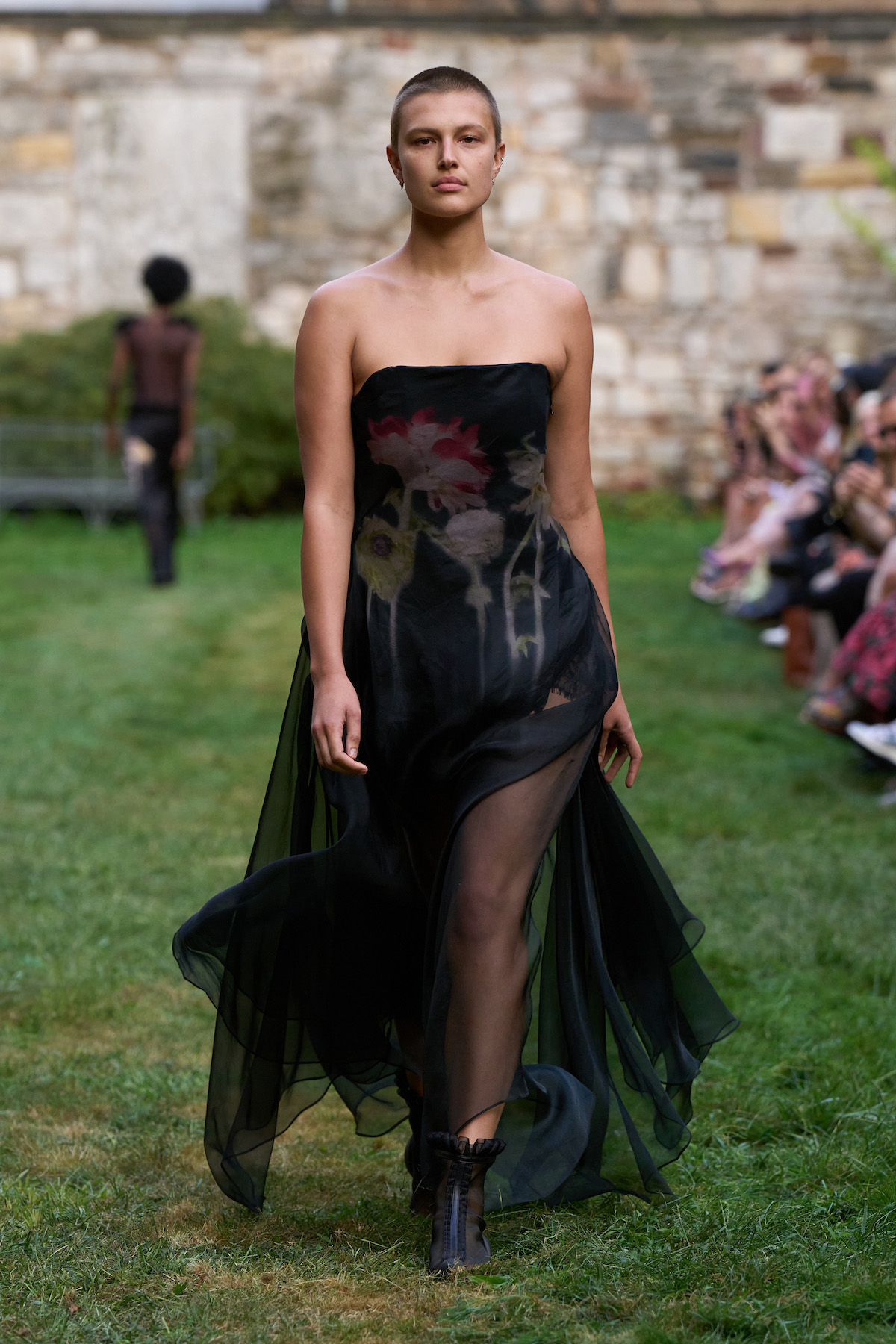
Collina Strada
By Sam Falb, office contributing writer
Photos courtesy of Collina Strada
September in New York offers the last gasp of summer greenery – which Collina Strada took advantage of in a lush, park-based show entitled “Touch Grass.” The gathered attendees witnessed an eclectic cast of characters including The Green Lady (draped in a fantastical green ensemble), Jazzelle (in a floor-length blonde wig), and Mara Hoffman in a glossy black number. All partook in a festive stomp down the runway featuring all manner of flora-centric prints, a vintage lawn mower, and a stuffed iguana bag. The eccentricities of the brand underlie a strong mixture of wearable frocks and daring looks. Billowy slacks and candy-colored sneakers shone in the afternoon sun, while a donut-silhouette skirt in a murky blue flower pattern hugged the thighs of one particularly suave model.
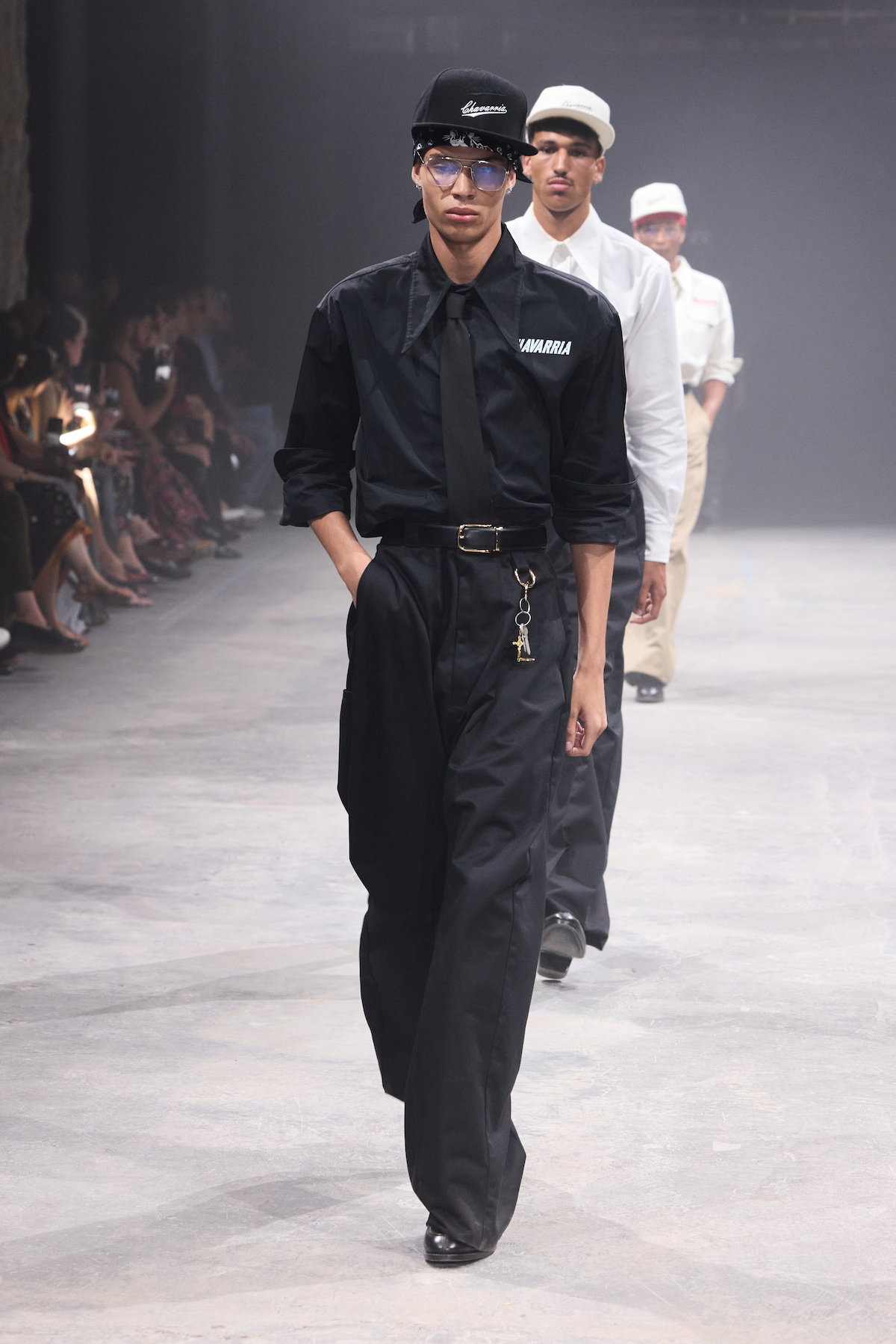
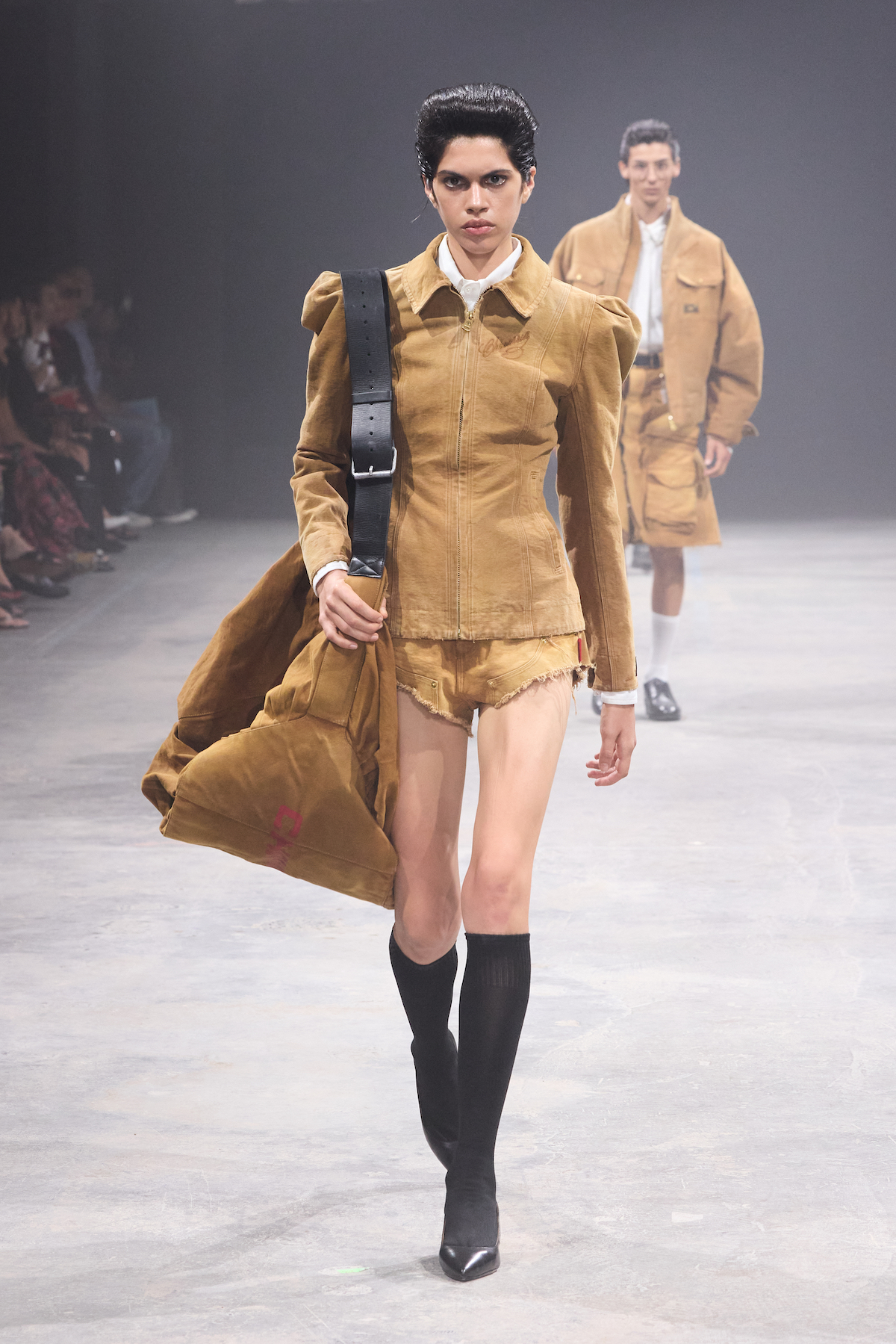
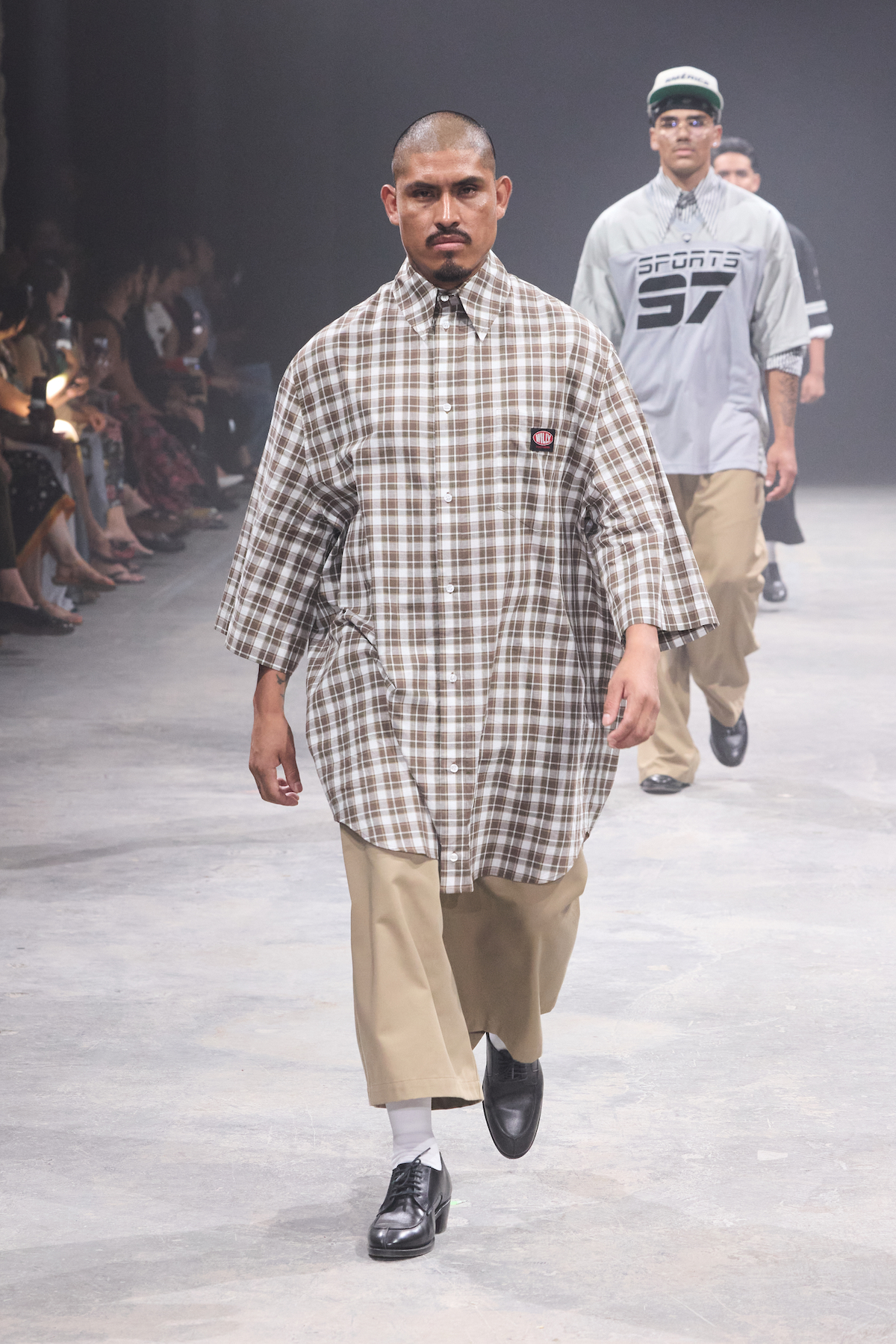
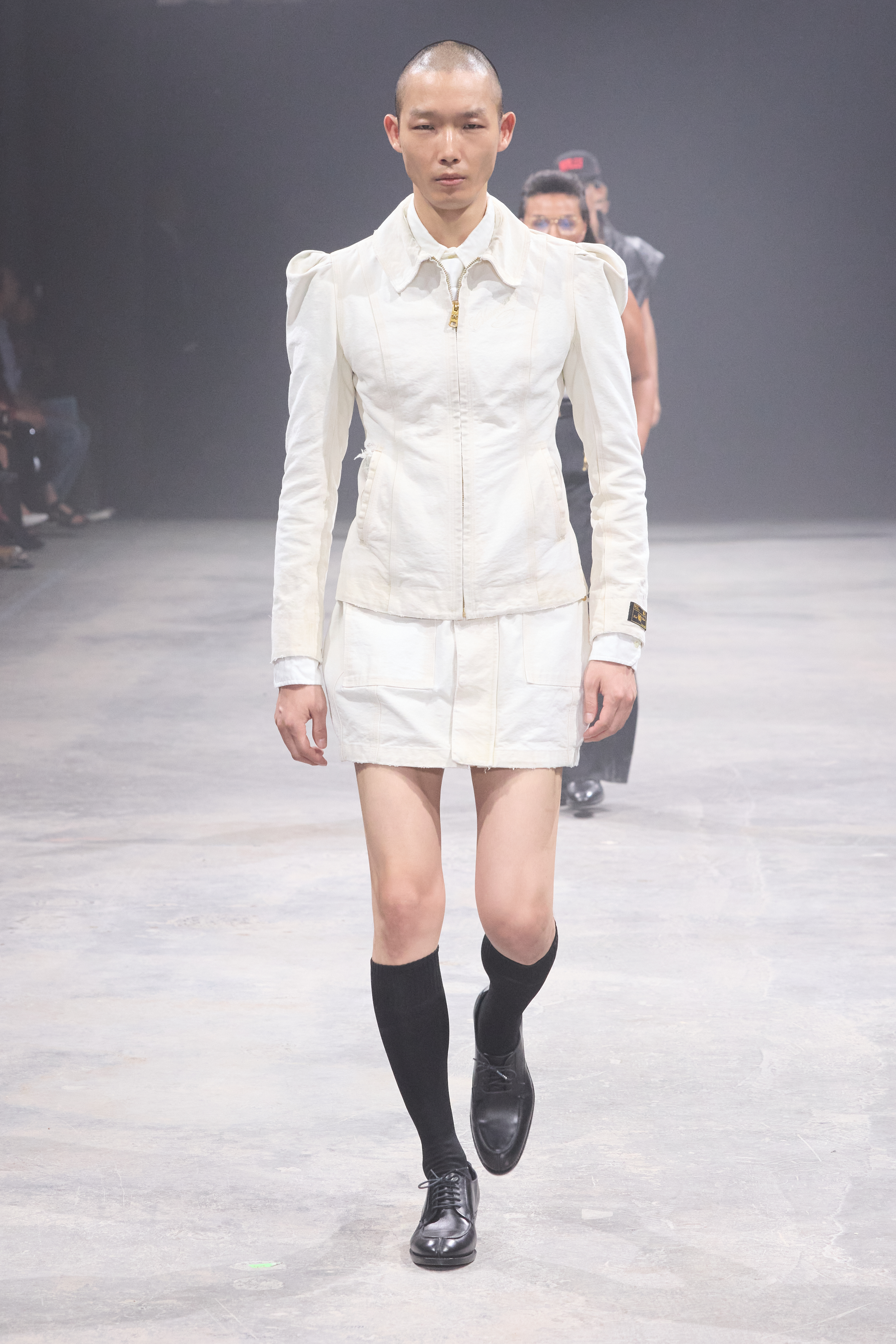
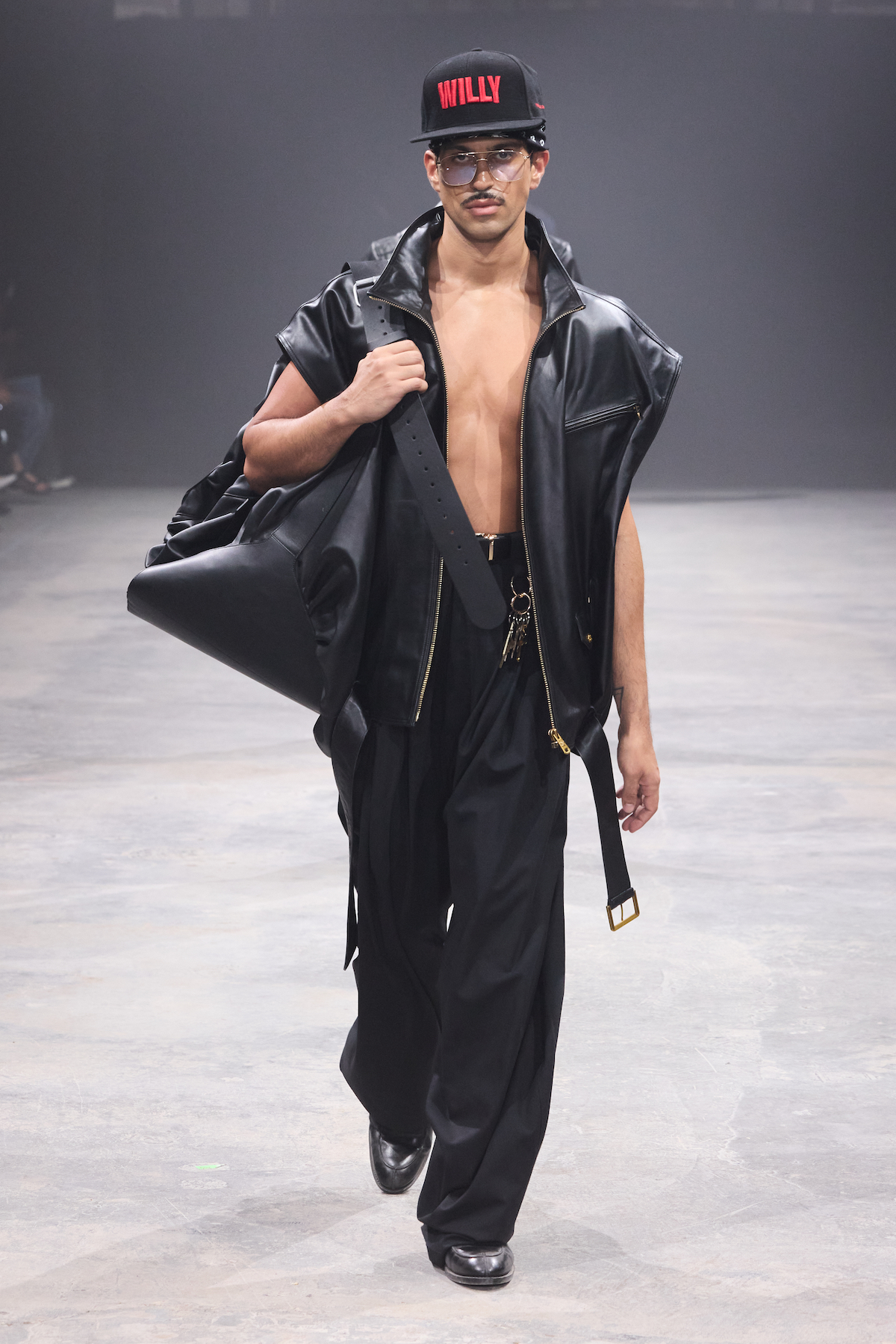
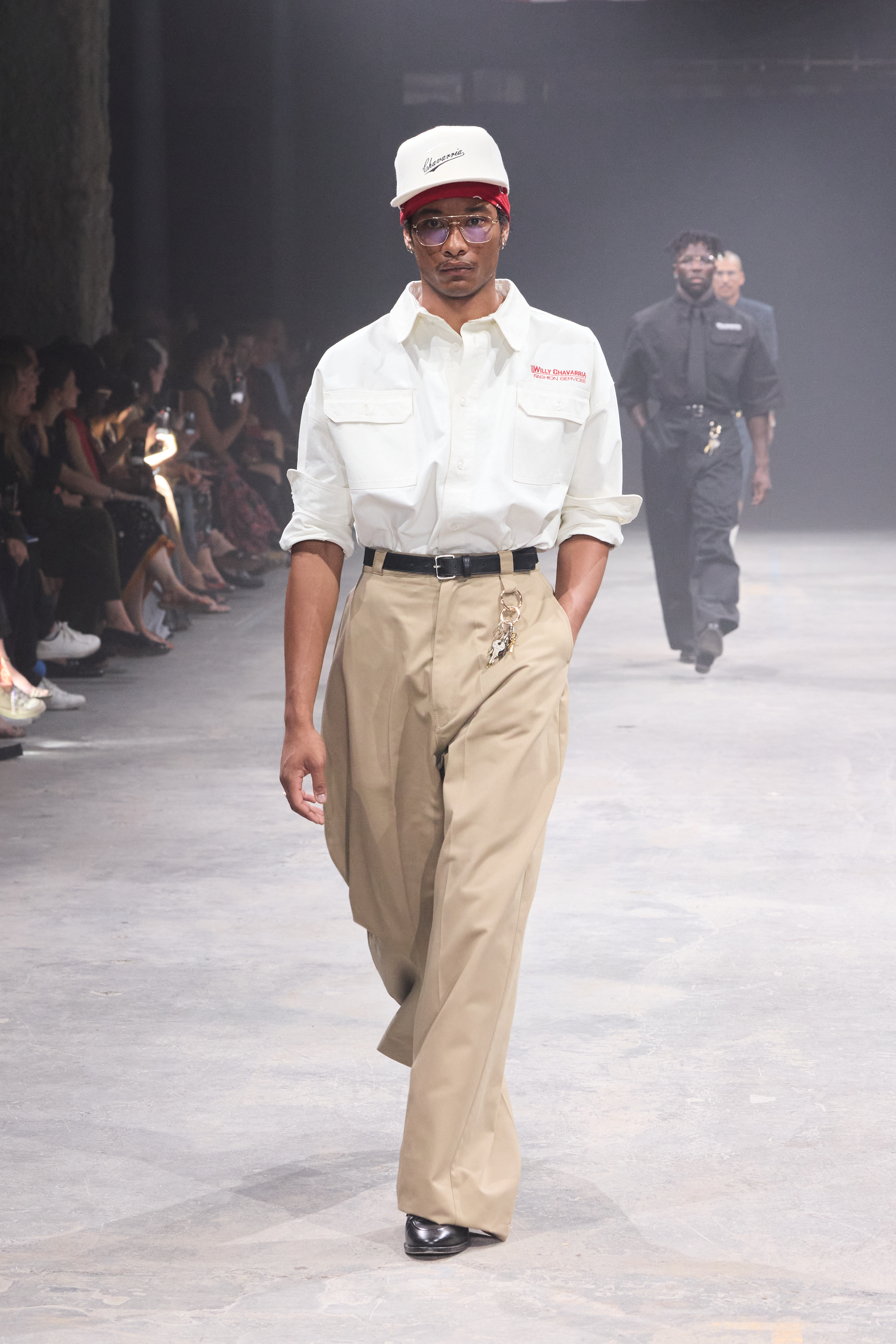
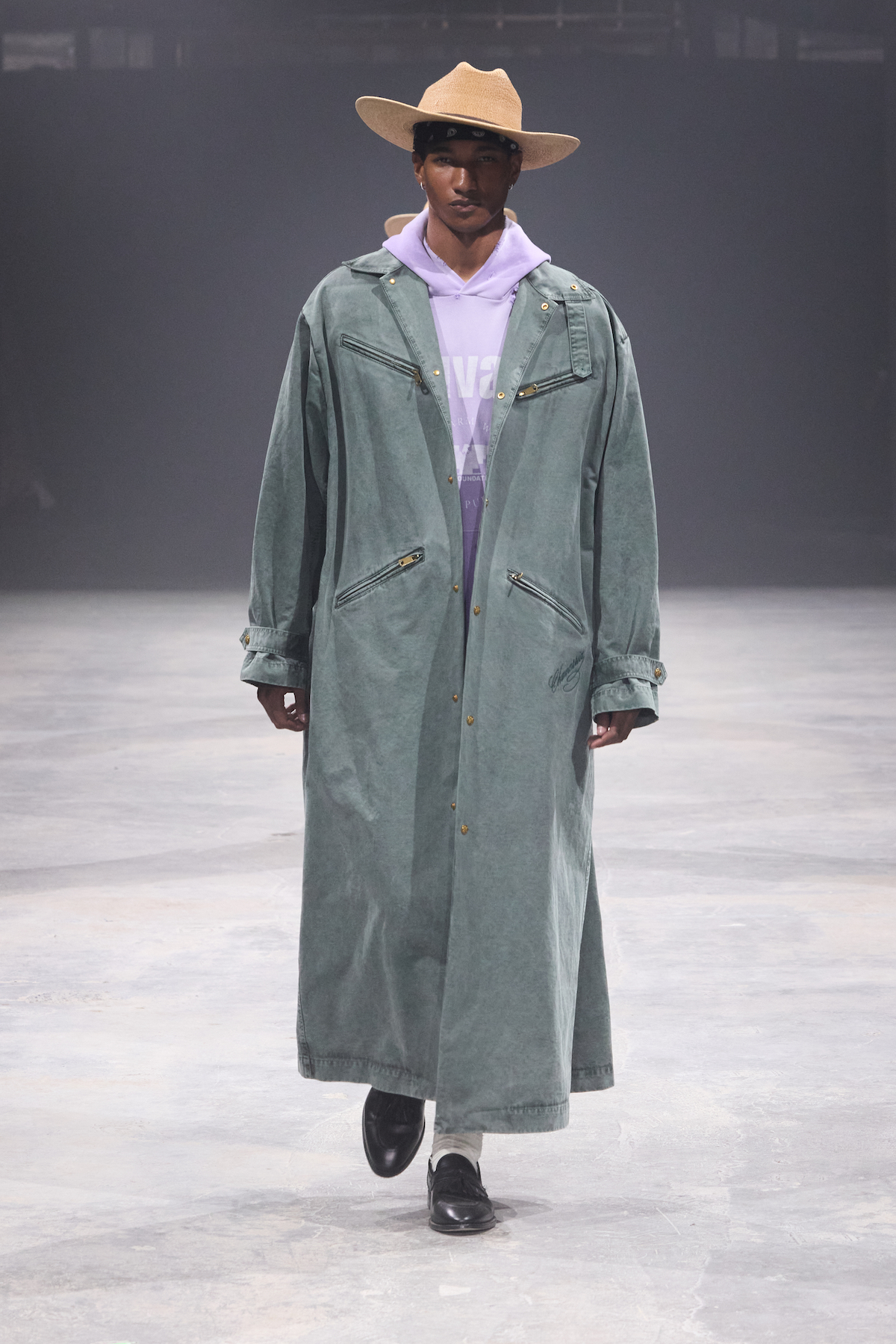
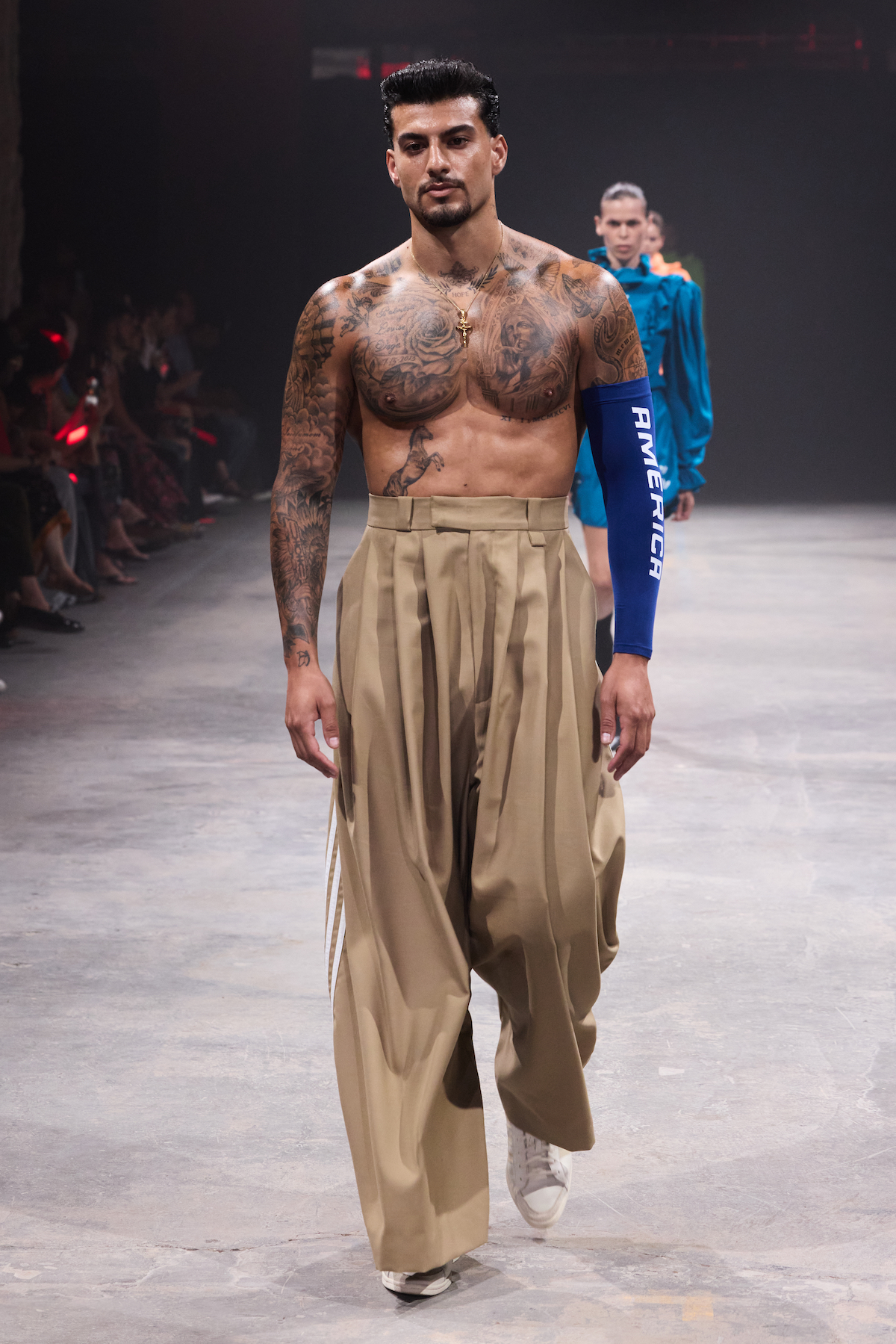
Willy Chavarria
By Brook Aster, office Managing Editor
Photos by Selwyn Tungol, courtesy of Willy Chavarria
There are a select few moments when fashion makes you stop to catch your breath, or raises a lump in your throat. Those moments are generally few and far between. At Willy Chavarria’s shows, they are to be expected.
For his SS25 show “América”, Chavarria took a 3 pronged approach, with the looks separated into the sections “Fine Fashions,” “Willy Produce,” and “Community Center.” On each seat, a pocket Constitution awaited guests by way of party favor as part of Chavarria’s collaboration with the American Civil Liberties Union to raise voter engagement in the upcoming presidential election. Mexican-American sibling trio Yahritza Y Su Esencia opened the show with an earnest rendition of Juan Gabriel’s 1984 classic “Querida.”
Sending garments down the runway emblazoned with referential and newly imagined logos such as “Chavarria Fresh Produce,” “Chavarria Fine Fashions,” and “Chavarria Fashion Services,” the designer took clear visual cues from agricultural, domestic, and custodial uniforms. The designer cited the United Farm Workers as a direct inspiration, harkening back towards his childhood in Huron, CA surrounded by agriculture.
The second half of the show unveiled 22 looks created in collaboration with adidas, blending Chavarria’s plays on classic silhouettes with athletic materials. The casting in both sections was forceful and exciting, with familiar heavy hitters like Paloma Elsessor and Quannah Racinghorse, LA rapper and longtime Chavarria favorite YG, and Olympian Noah Lyles.
This is Chavarria at his best — with a focused mission, clear message, technical precision, and the kind of cultural stature that can only be earned.



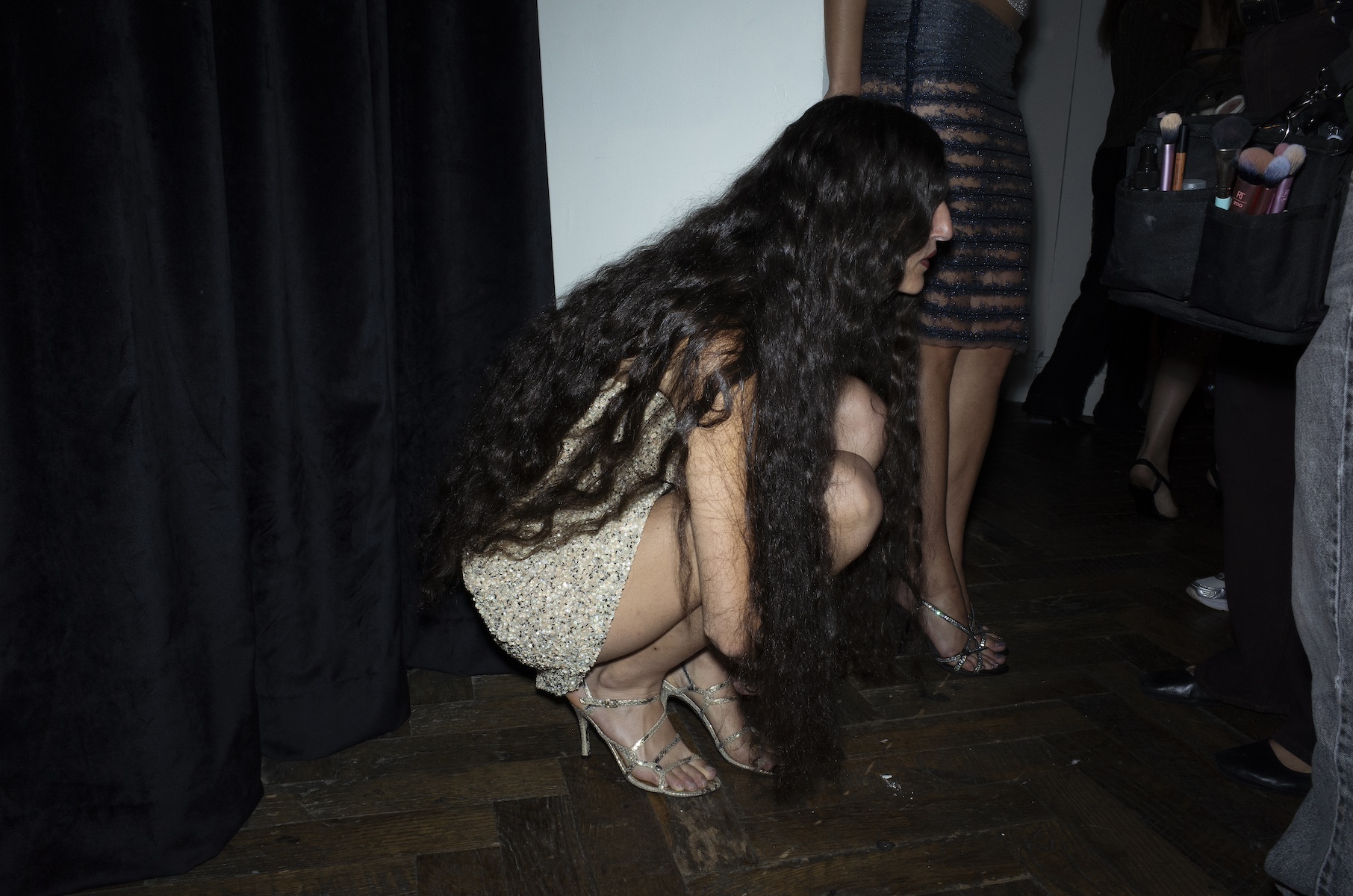
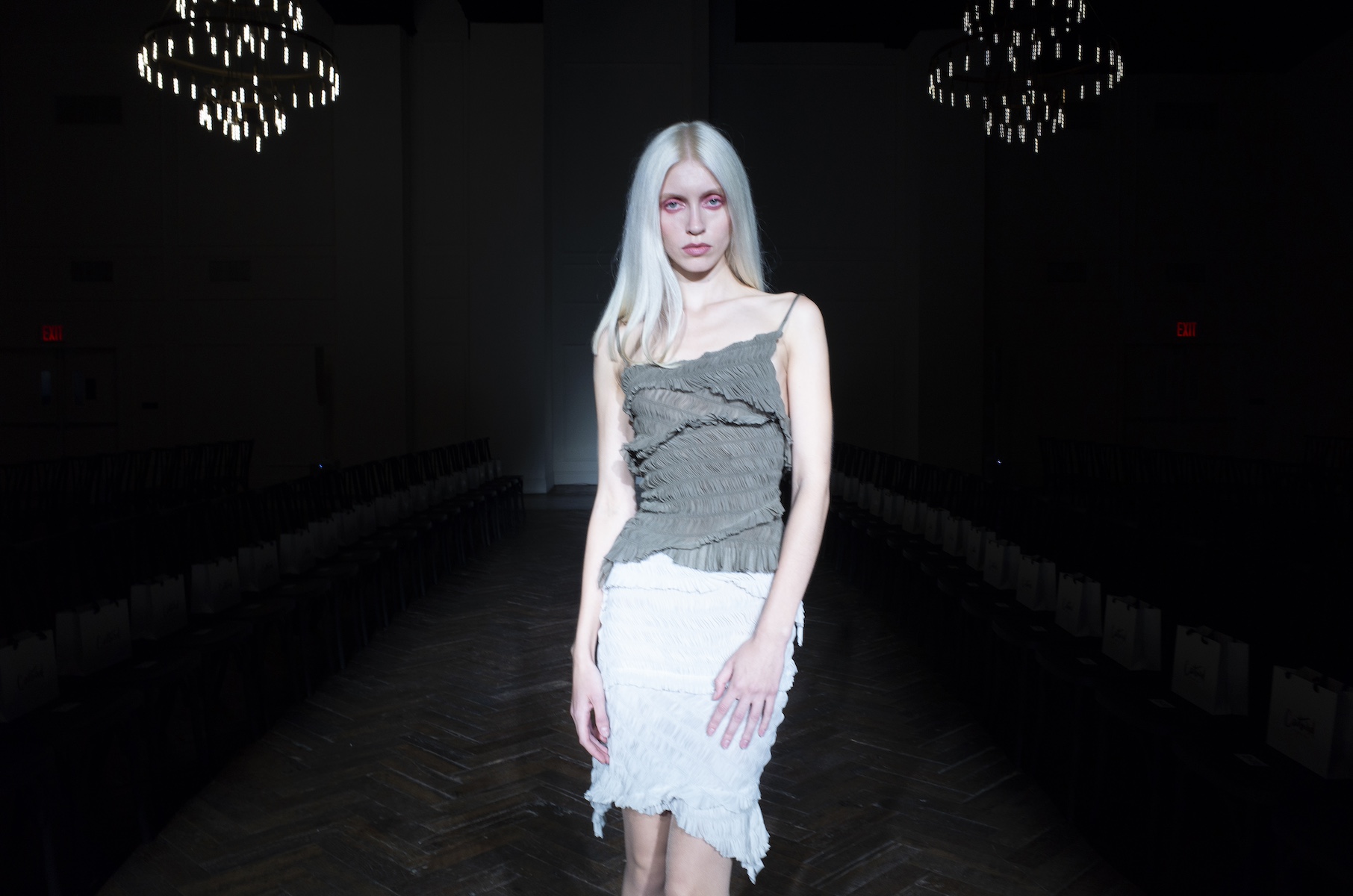
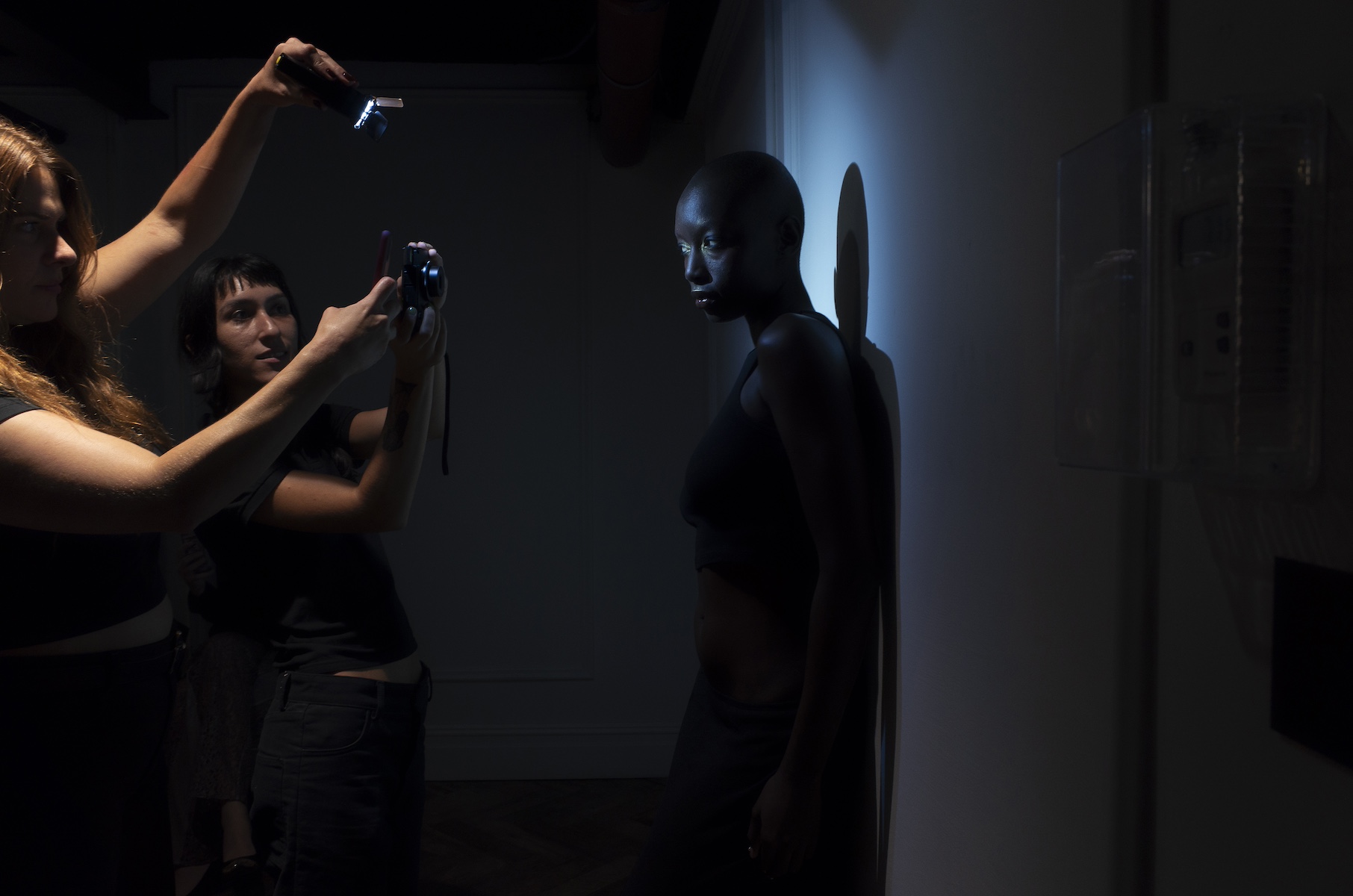
Gauntlett Cheng
By Sahir Ahmed, office Editorial Director
Photos courtesy of Maya Spangler & Gauntlett Cheng
Also celebrating their 10-year anniversary, Gauntlett Cheng returned to NYFW with a reminder of what designers Jenny Cheng and Esther Gauntlett have mastered over the past decade. Arriving at the Arlo Williamsburg Ballroom and settling into my seat, I couldn't help but notice the lack of cellphones, typical at shows today, with attendees always keen, almost neurotic (sometimes, myself included) to get everything on camera. While that intention lingered, it was a lot less intrusive; along the press line, editors were fully engrossed by the garments coming down the catwalk rather than fidgeting to capture each look. It was refreshing, much like the mohair-softened, metallic knits and spiraled chiffon that floated down the runway.
The collection itself felt like a homecoming — where clothes that once seemed aspirational now appeared as though they fit effortlessly into Cheng and Gauntlett’s own lives. A love letter to themselves, this show marked not only ten years of craftsmanship but also of growth, collaboration, and a deep commitment to fantasy and form. With each look, from bias rhinestone nets to frayed linens, to the friends and family that were part of the show, Gauntlett Cheng continues to celebrate the highs and lows of their career, reminding us that they’ve always been exactly where they needed to be.

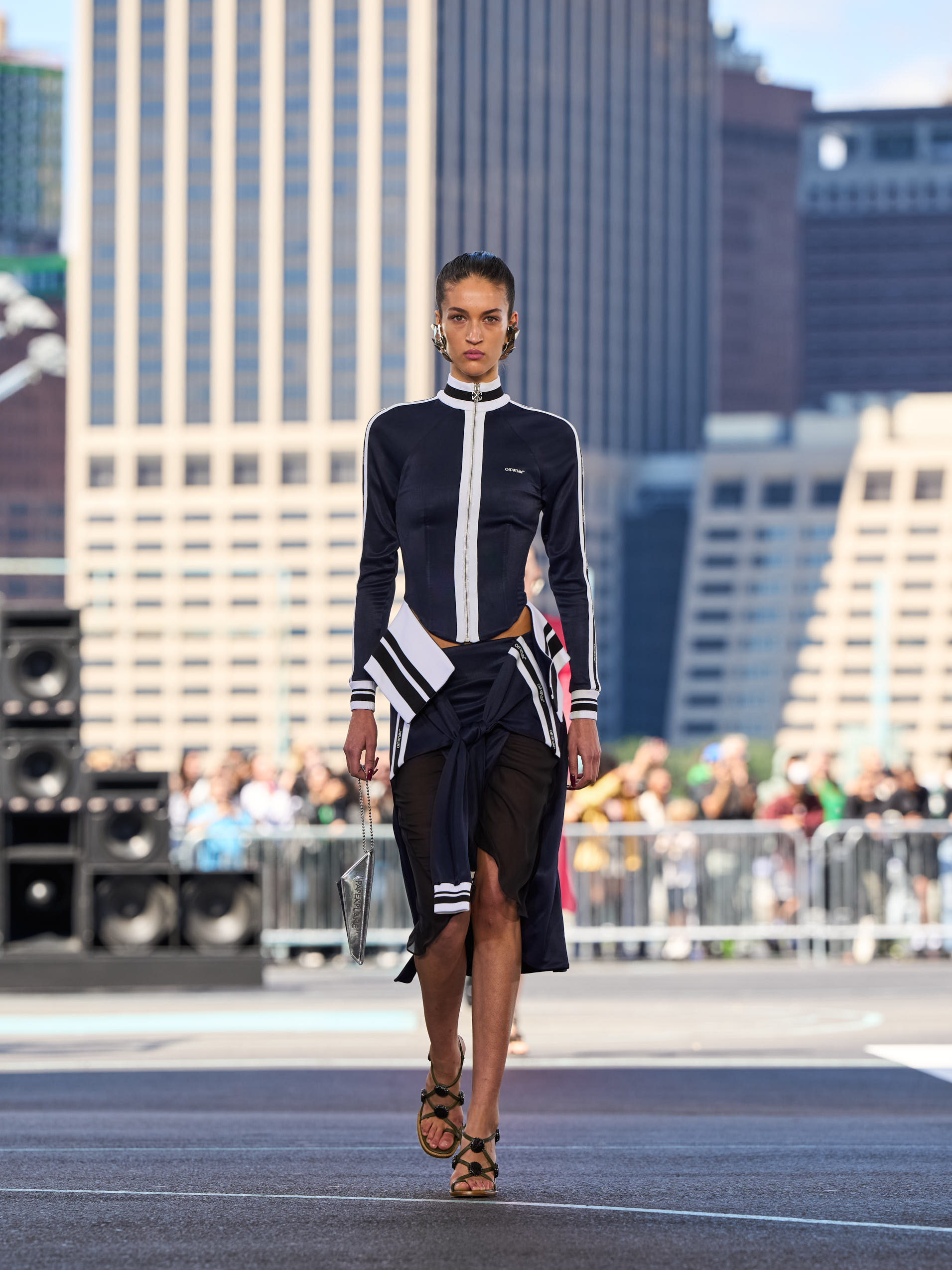
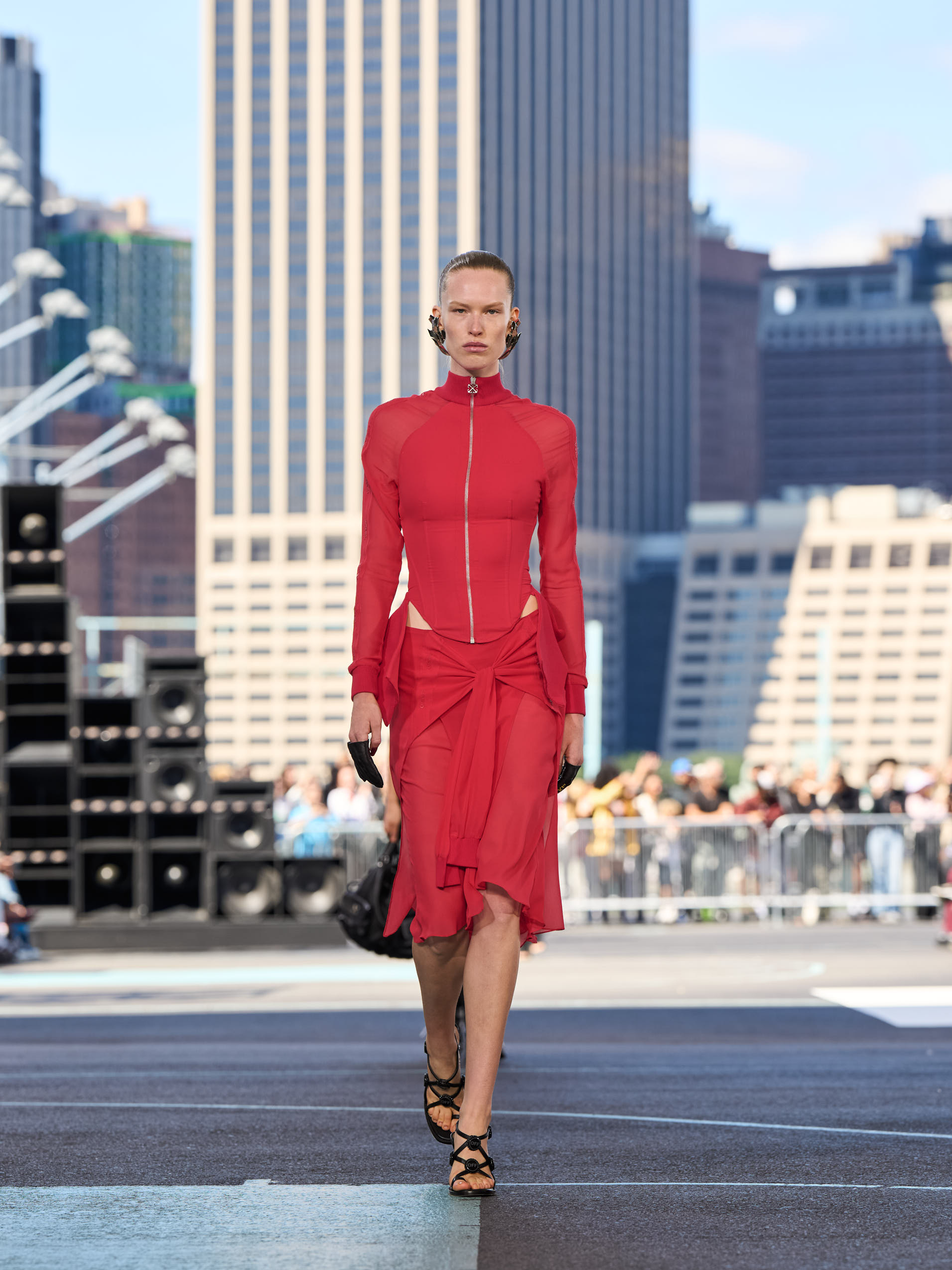

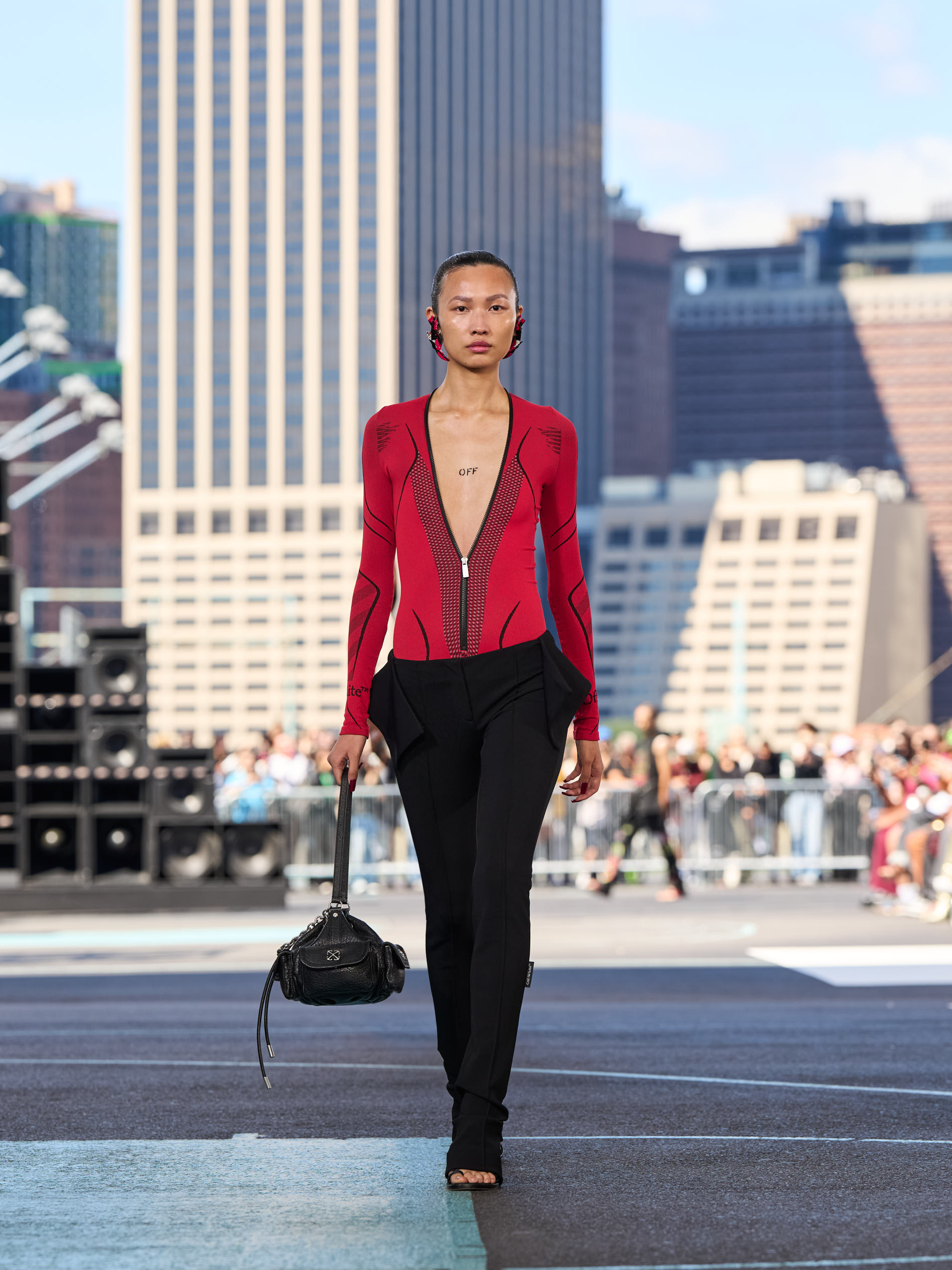
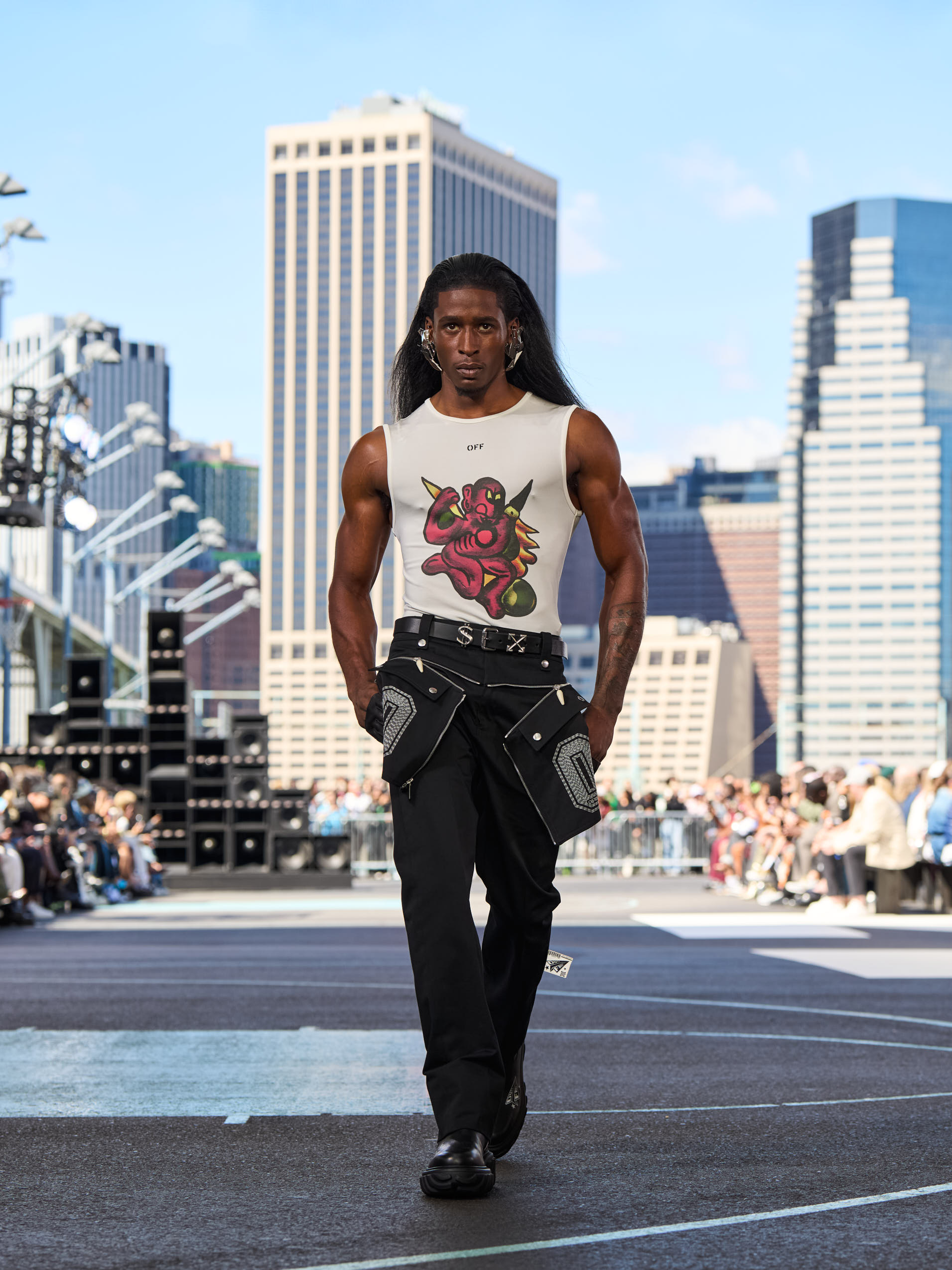
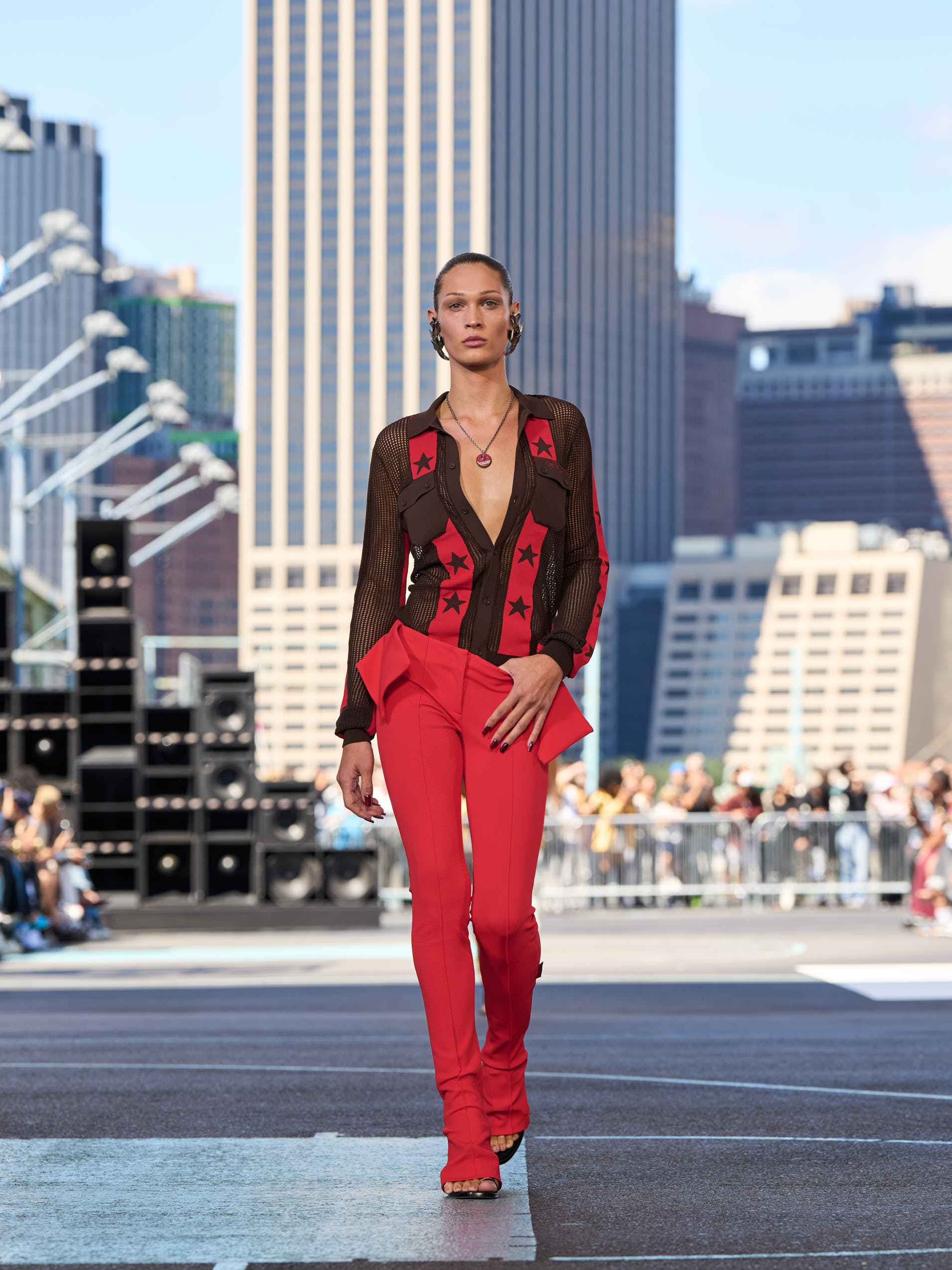
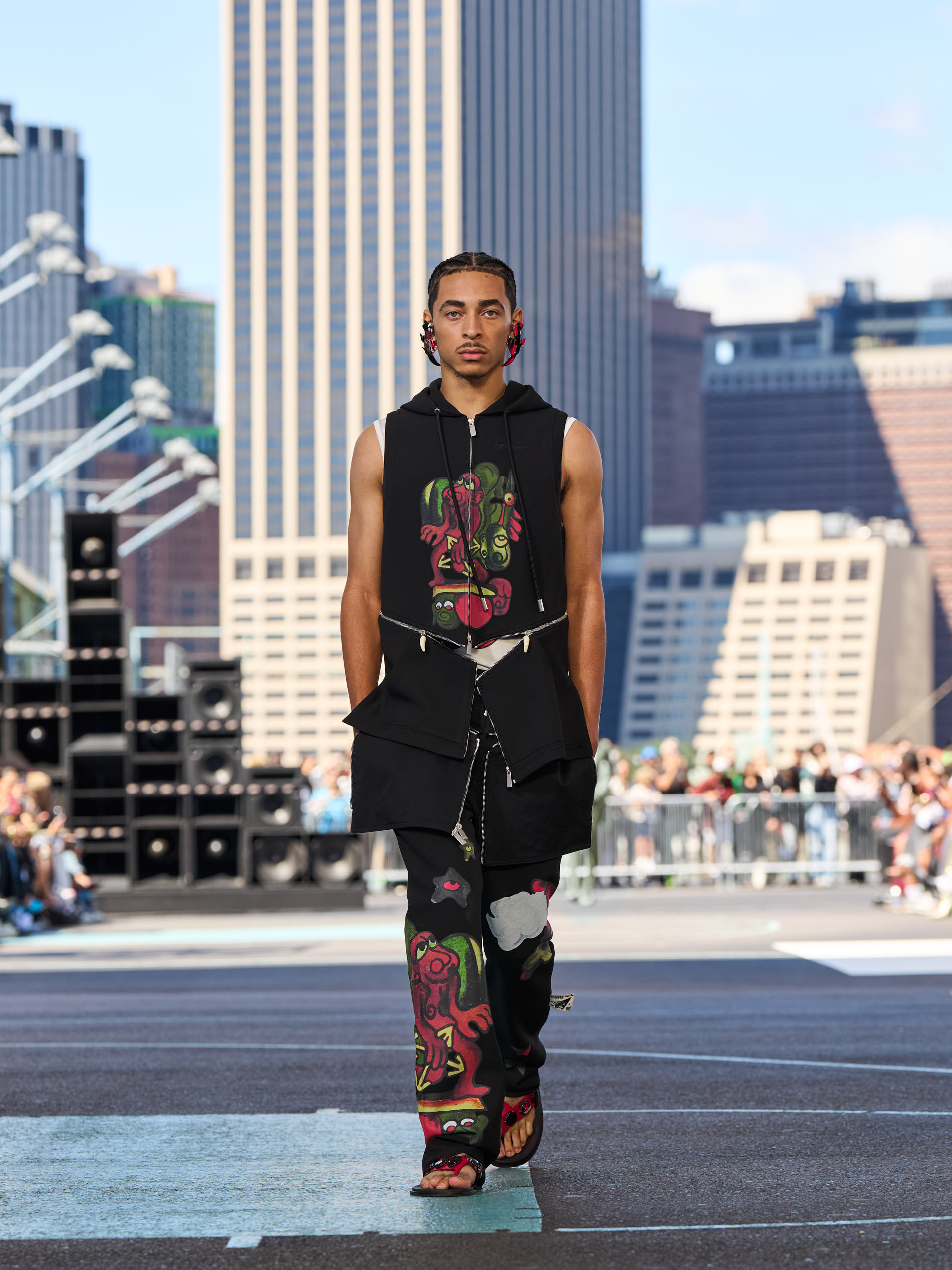
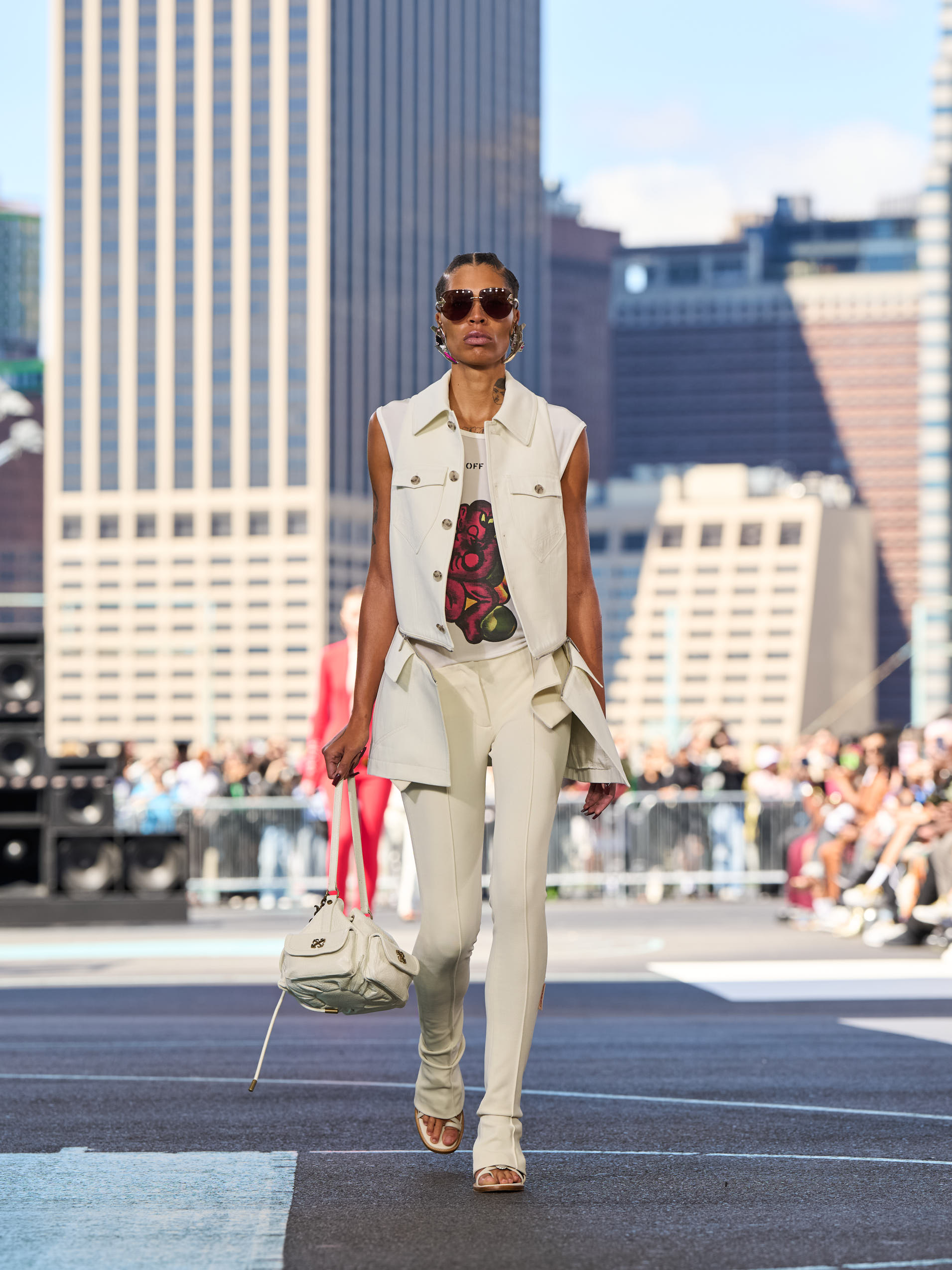

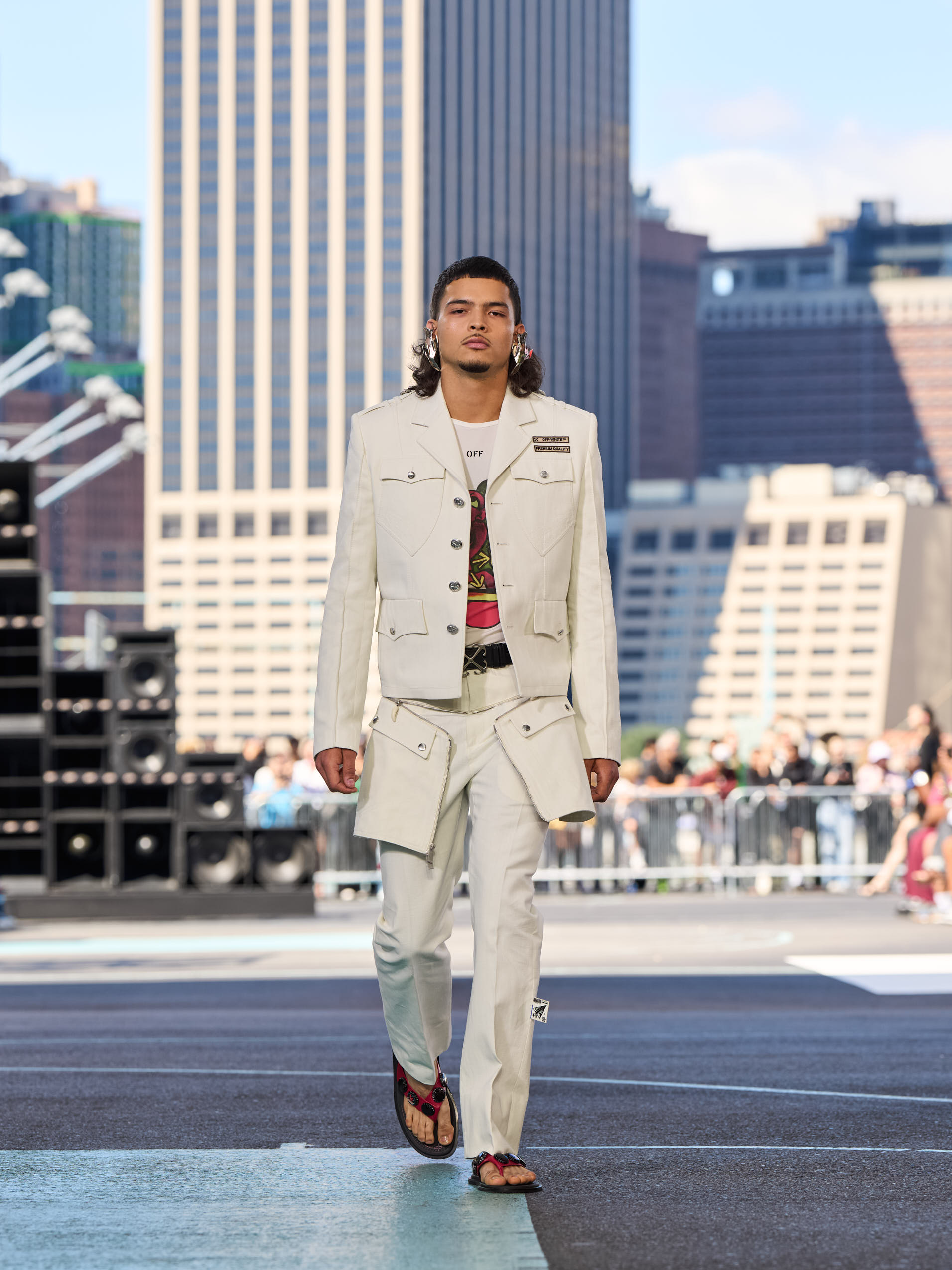
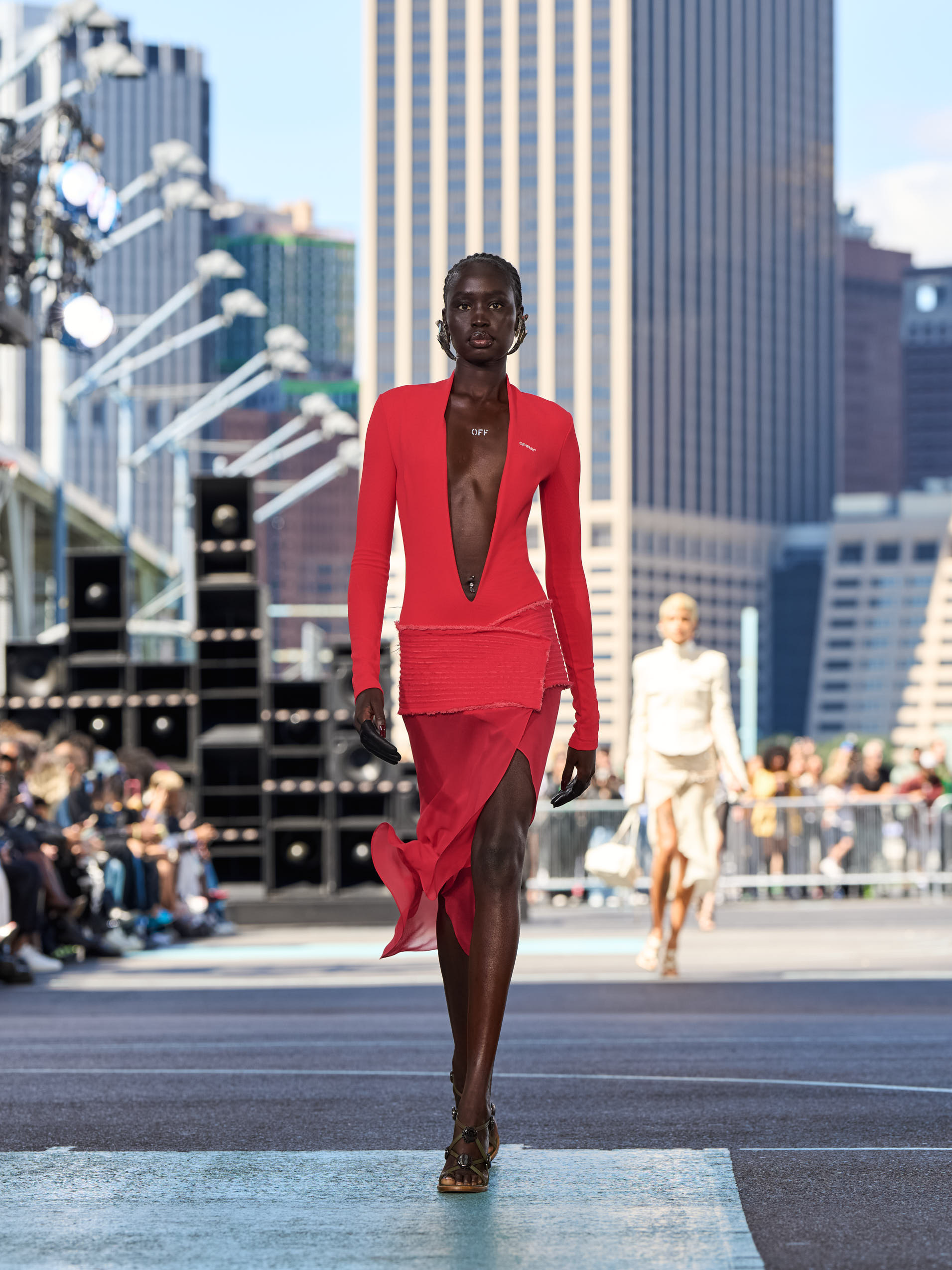
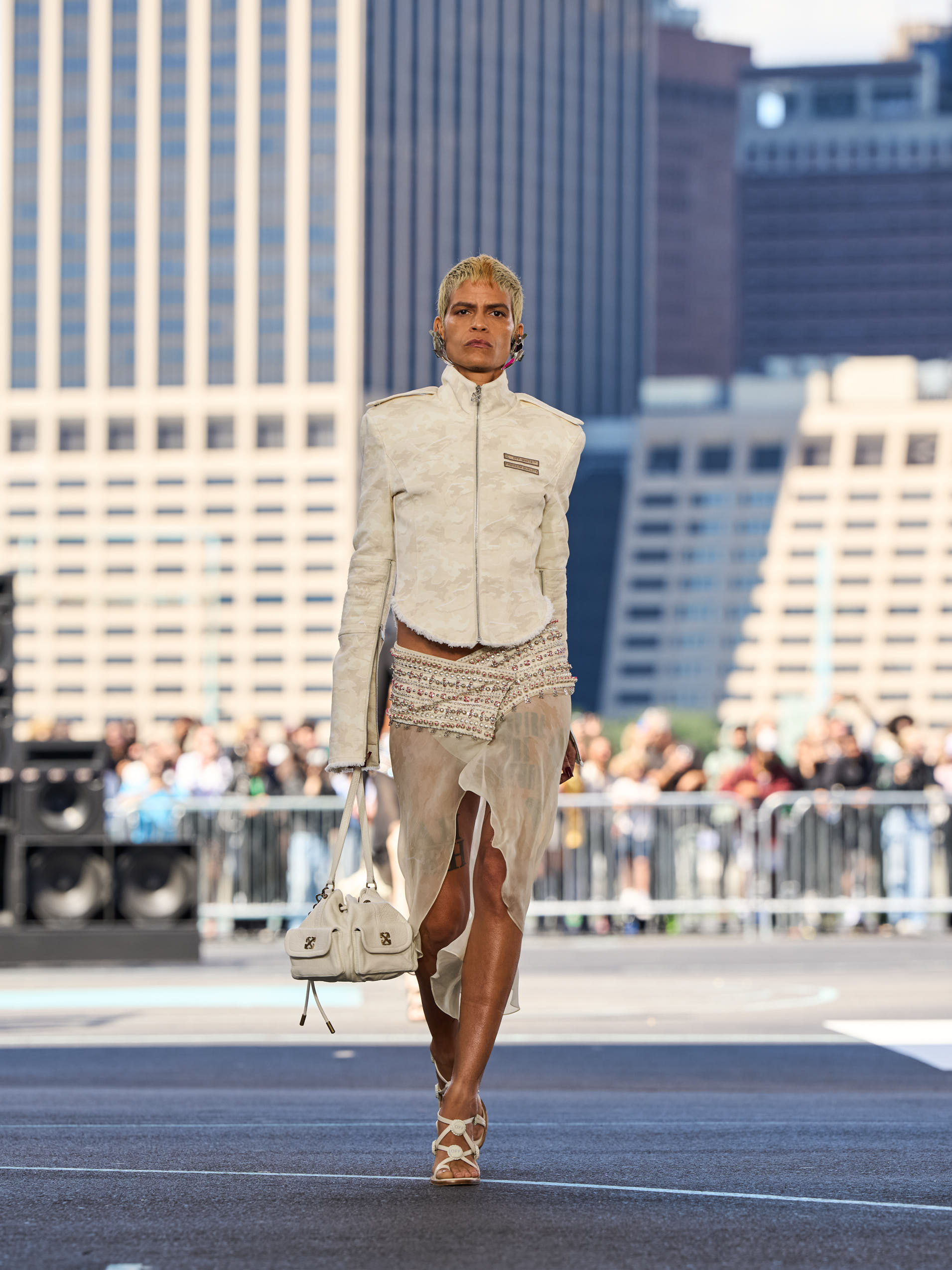


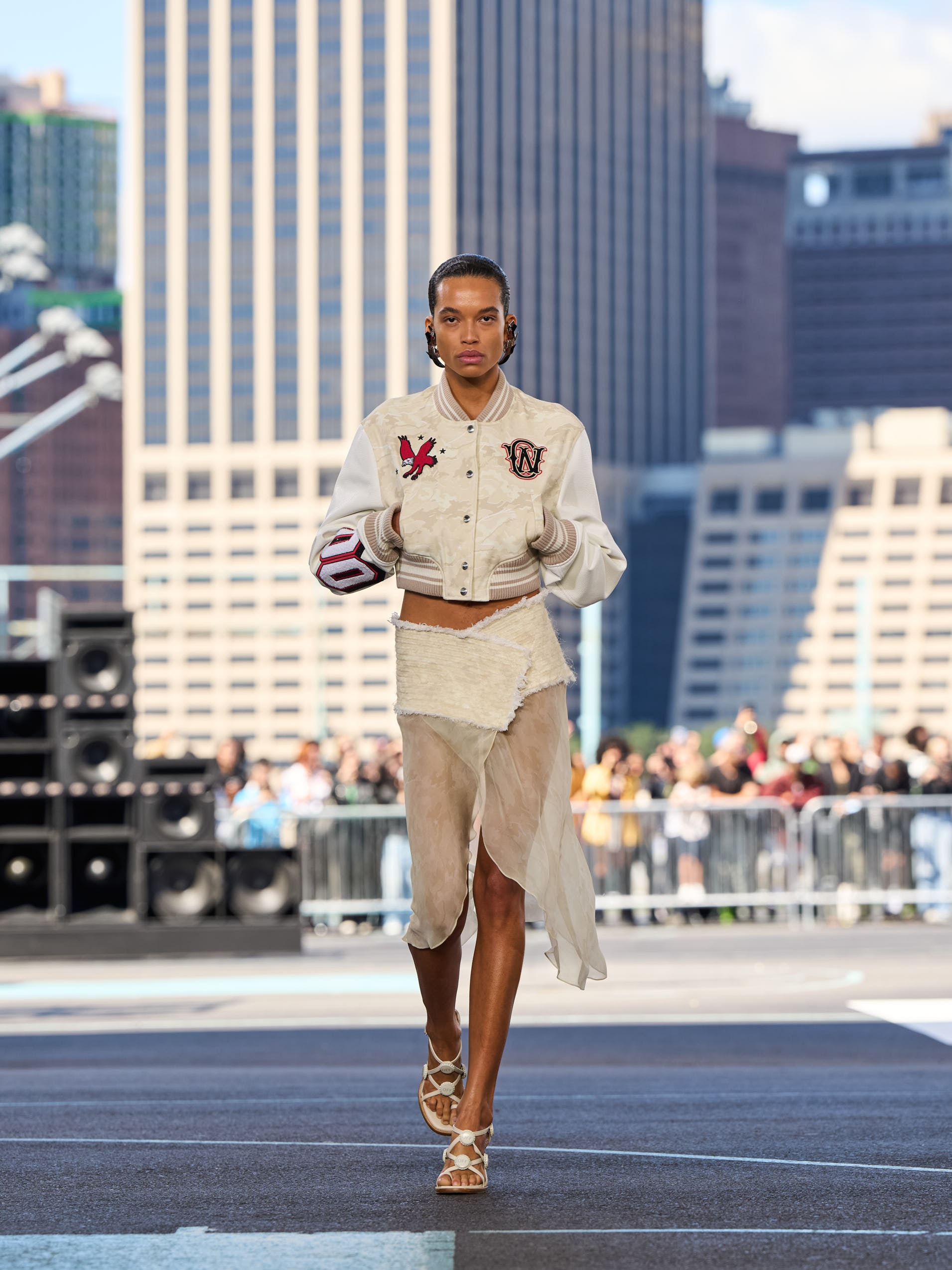
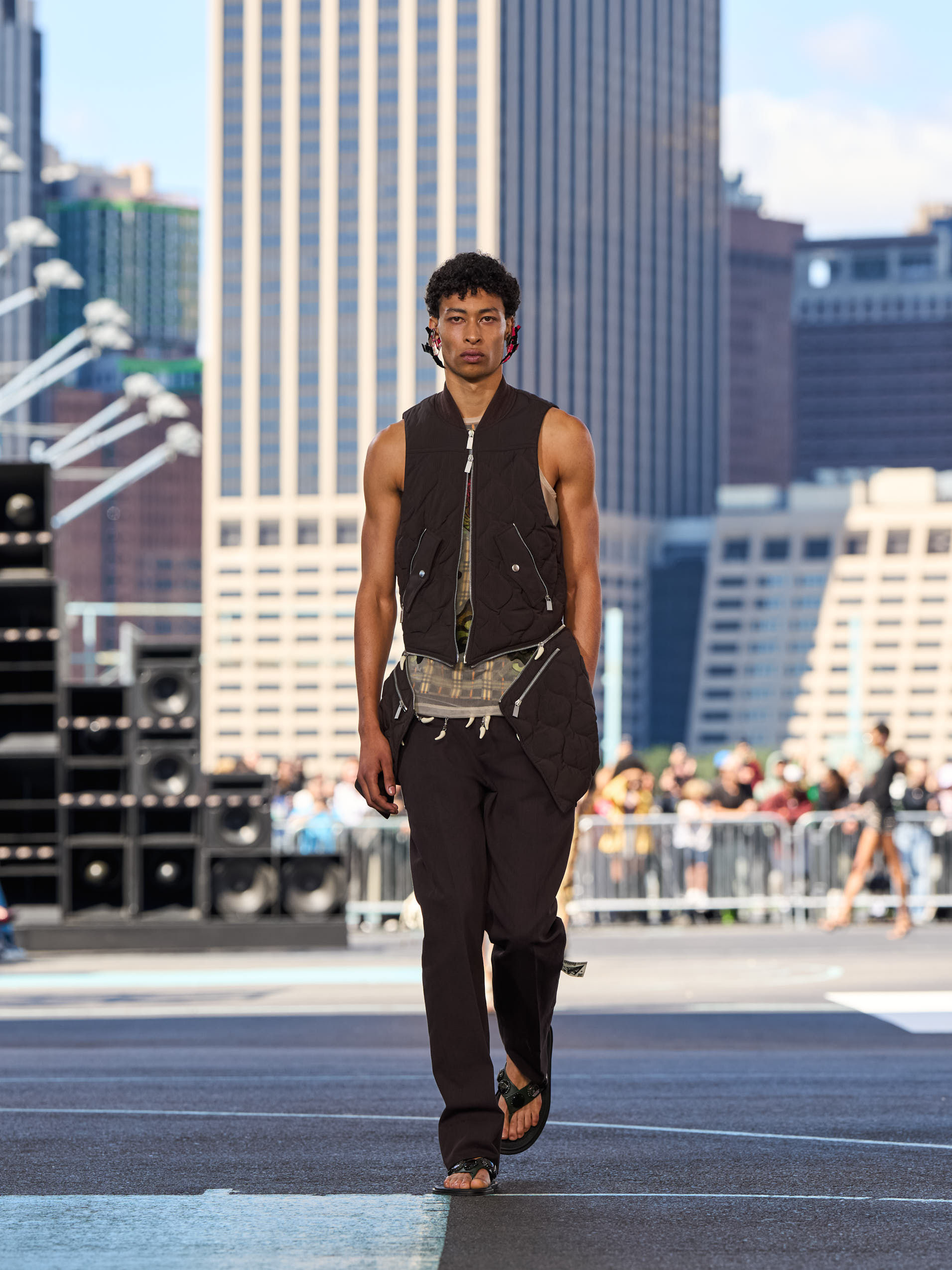
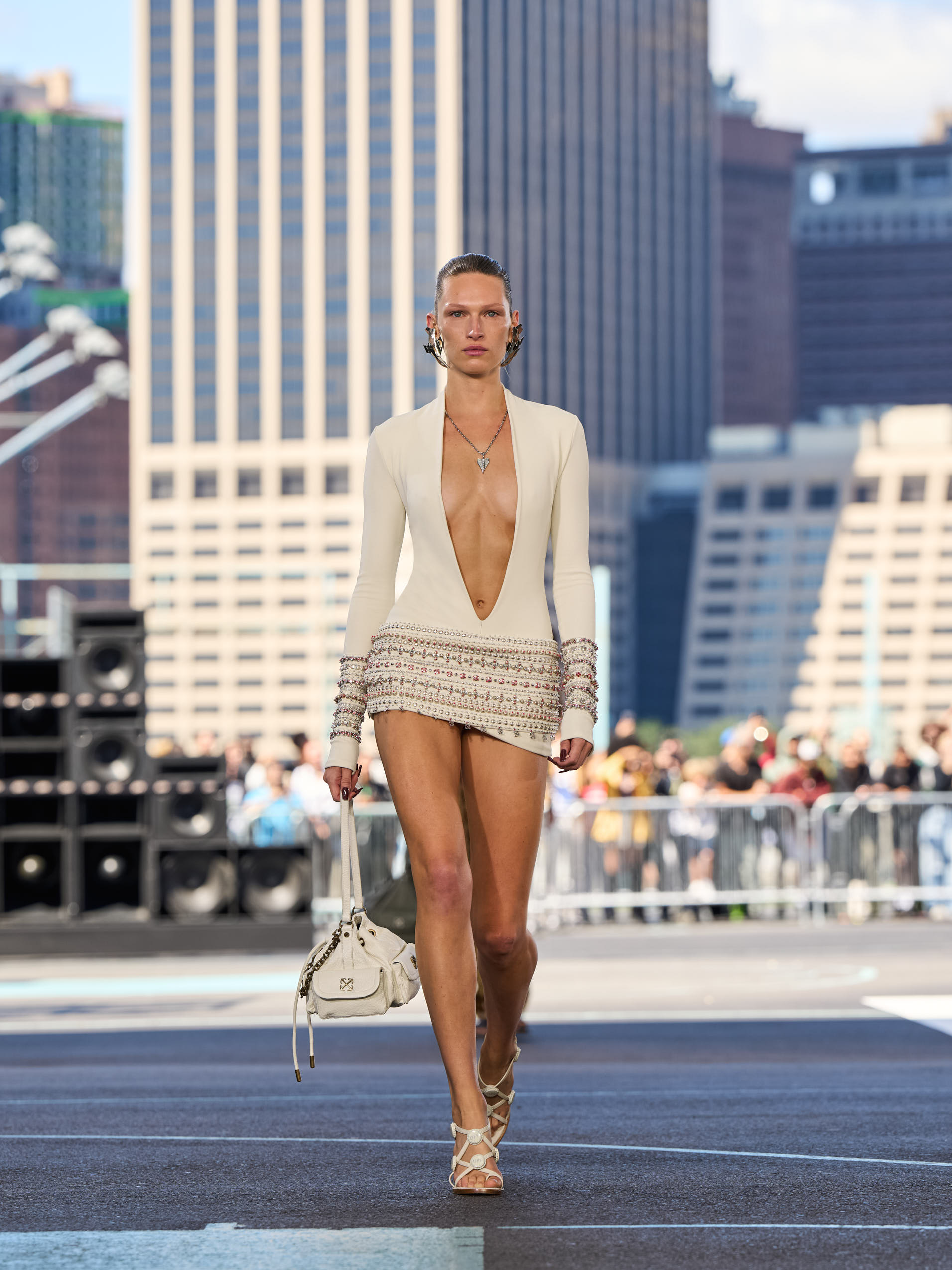
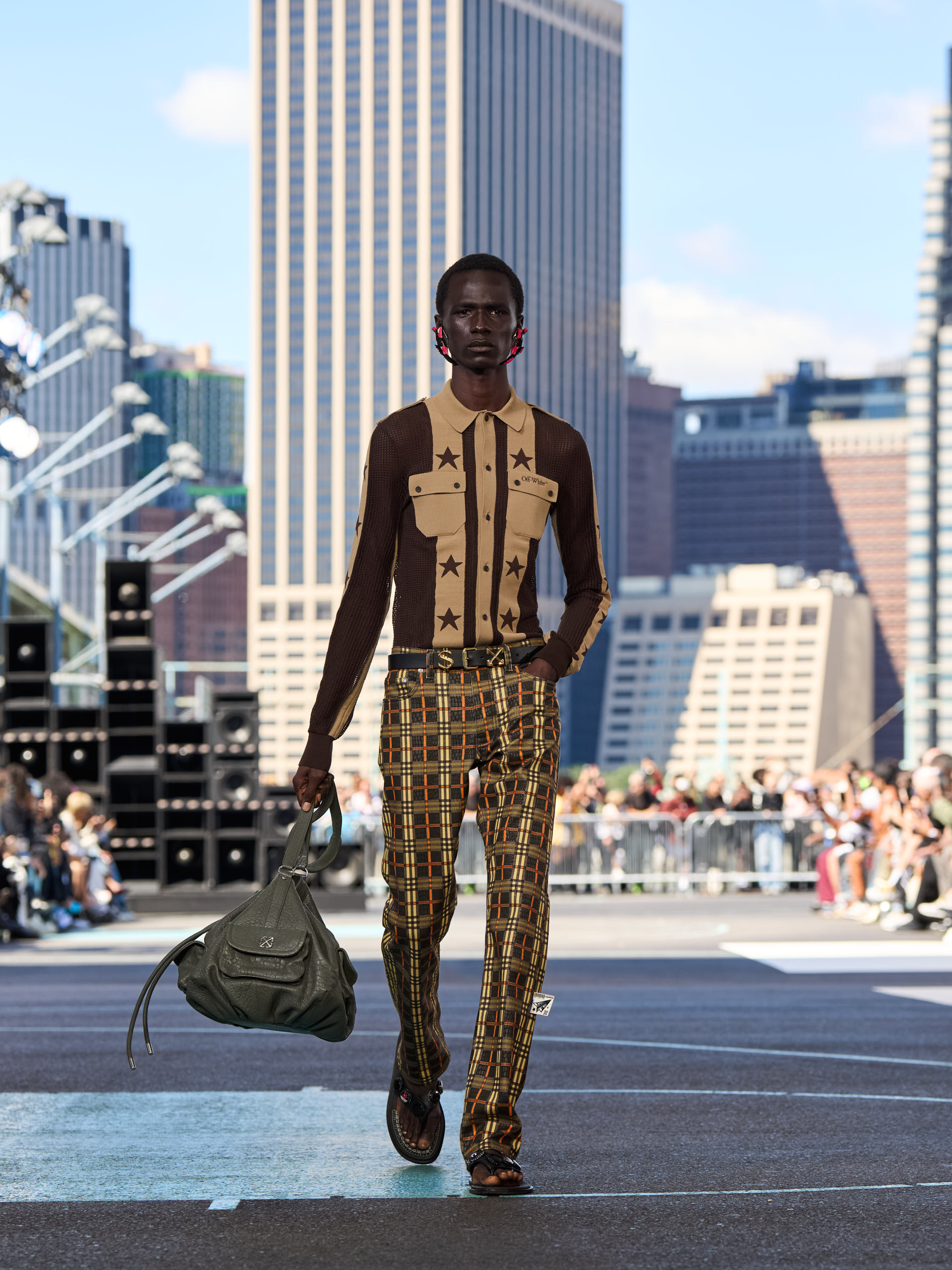
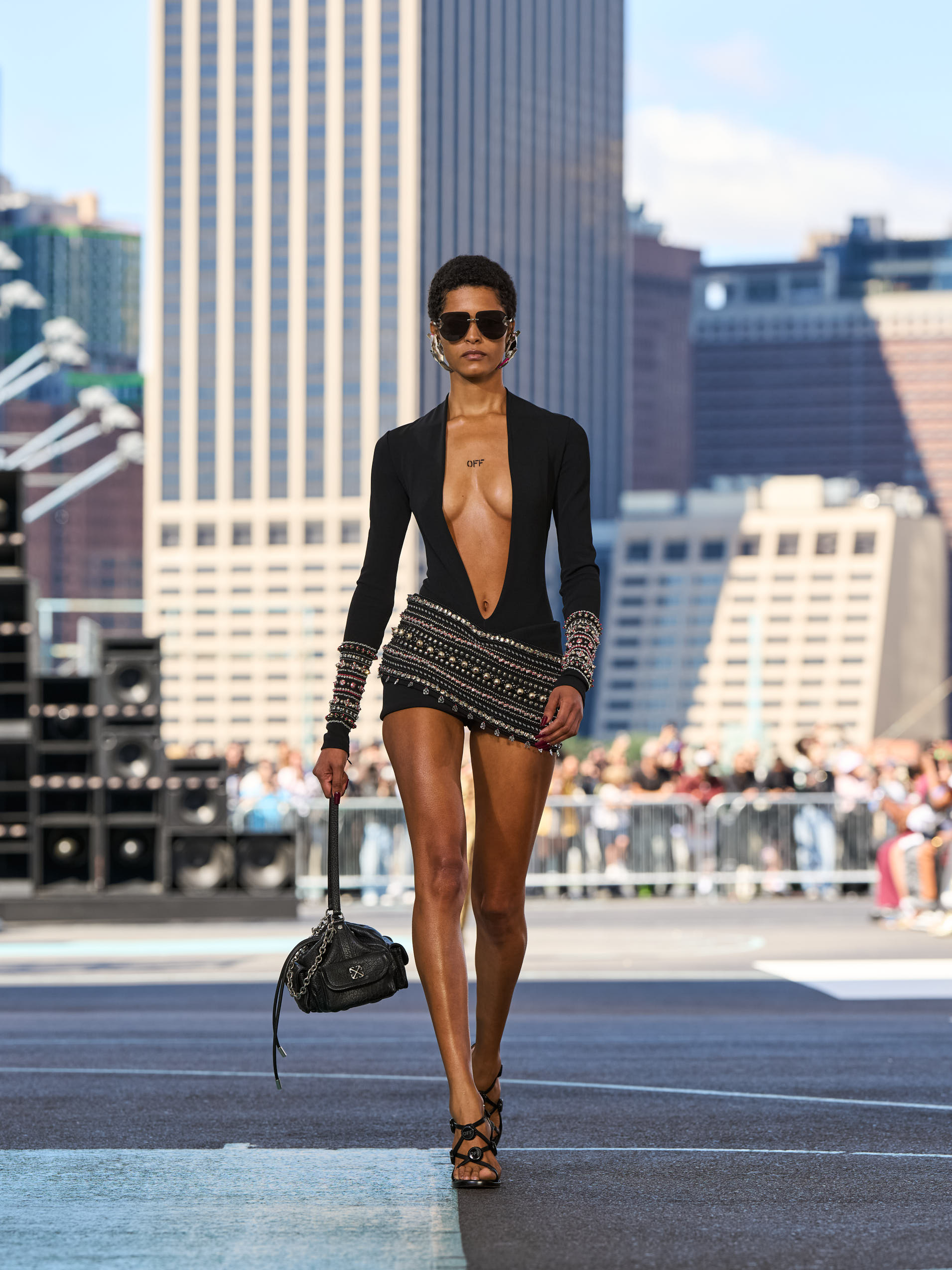
Off-White
By Sam Falb, office contributing writer
Photos courtesy of Off-White
For its first stateside show, Ib Kamara pulled in applicable themes from the brand’s own background as a global brand, reflecting the melting pot (and Brooklyn Bridge Park’s Pier 2) that Off-White found itself in this season. Drawing influences from a trip to Ghana, Kamara dubbed the collection, “Duty Free”, emphasizing the travel-forward bent to the offerings which included roomy, paneled pockets ready that could have been pulled off a particularly tasteful piece of luggage, to bags featuring the silhouette of a duffel in small and extra-large. Bright, rich, red was a throughline across zippered tops and leather pants (sported by NLE Choppa), while moments like a feathery mesh skirt and tartan pants elevated the assortment. It felt new and novel, along with reliable mainstays including the aforesaid red and a commitment to workwear sensibilities. With Kamara’s background in styling and editorial as the Editor-in-Chief of Dazed, he brought a keen understanding of visual storytelling to Brooklyn Bridge Park, honoring the brand (and Virgil Abloh’s) legacy, while transporting viewers somewhere altogether new.

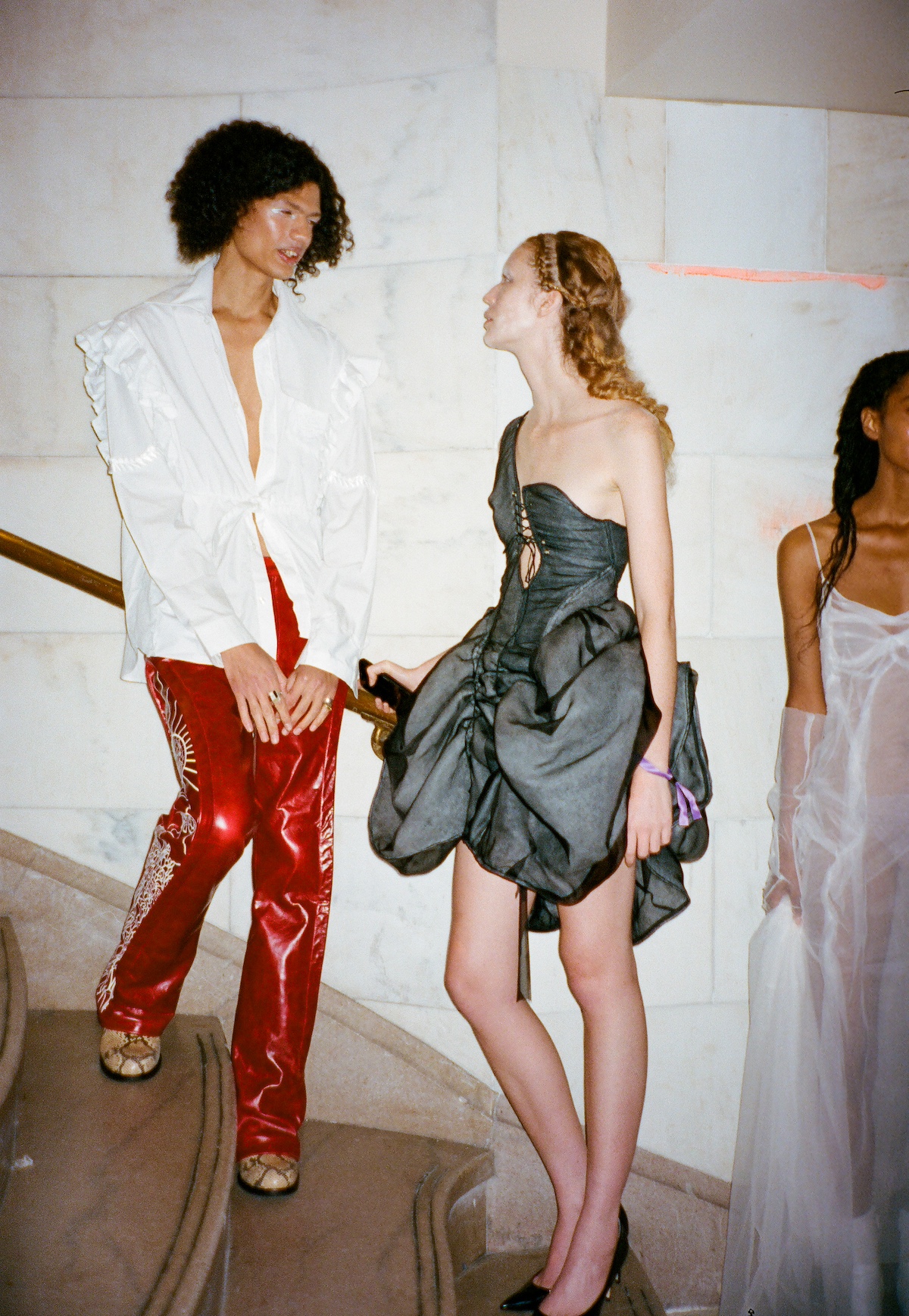
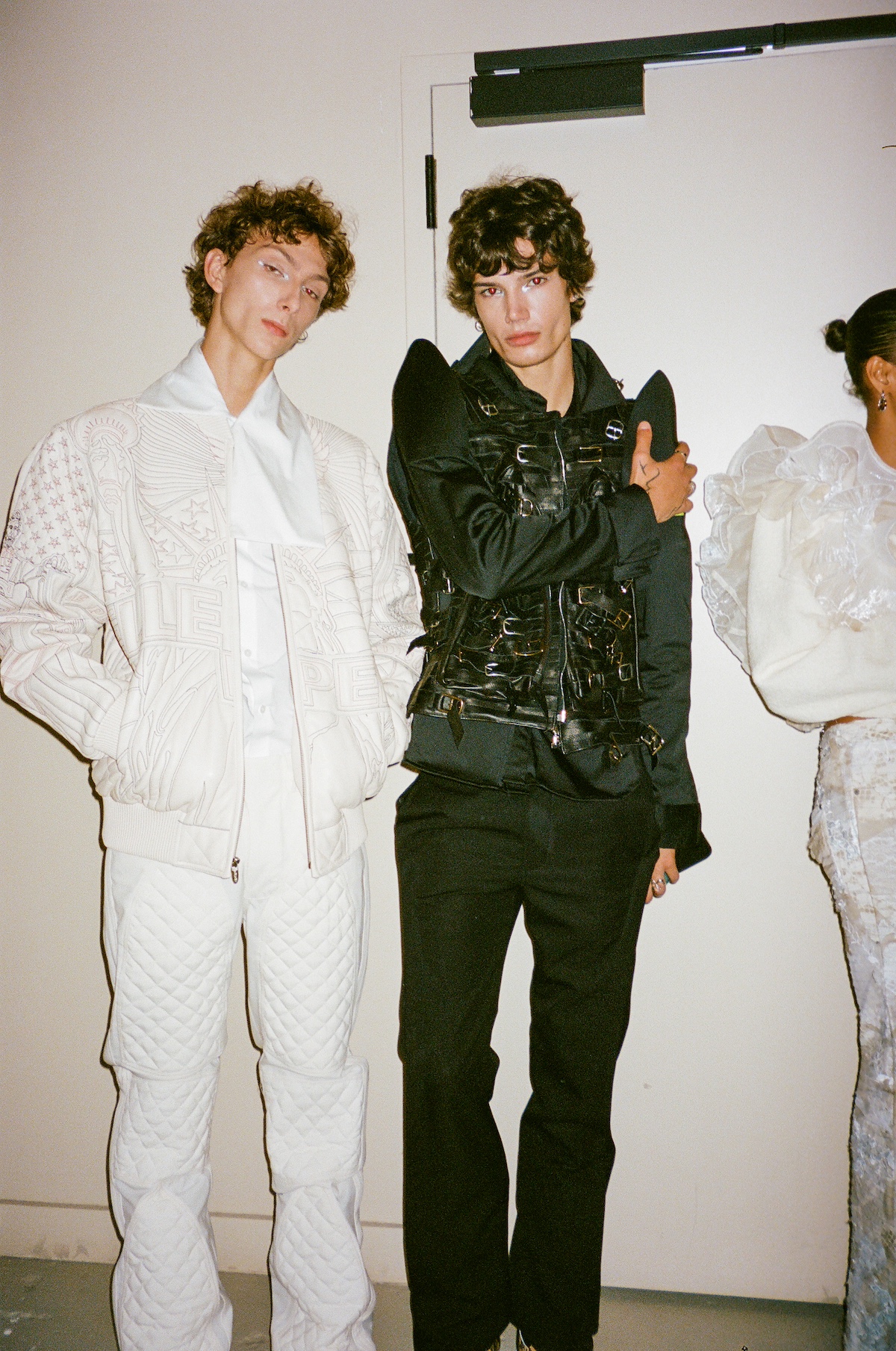
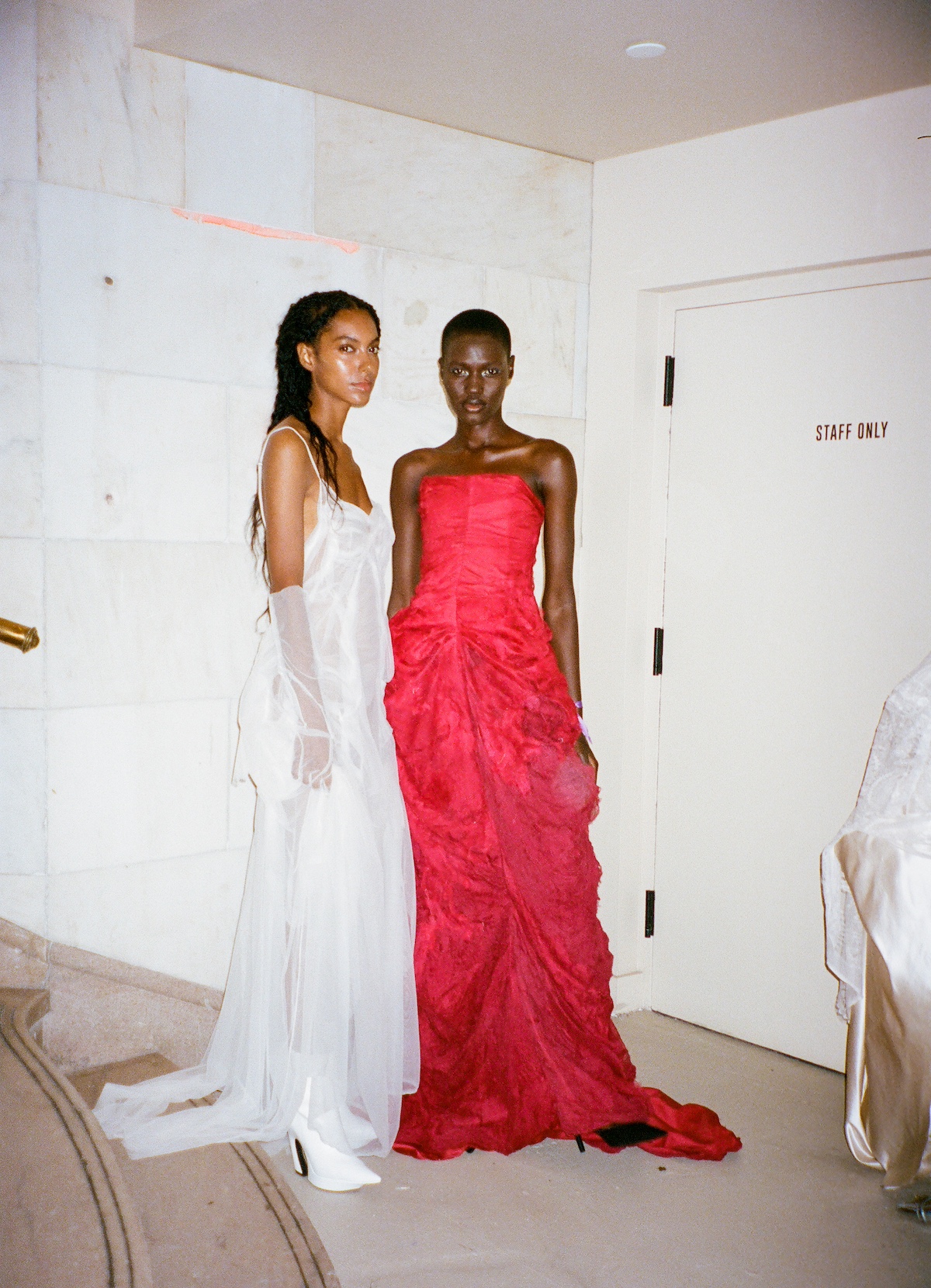

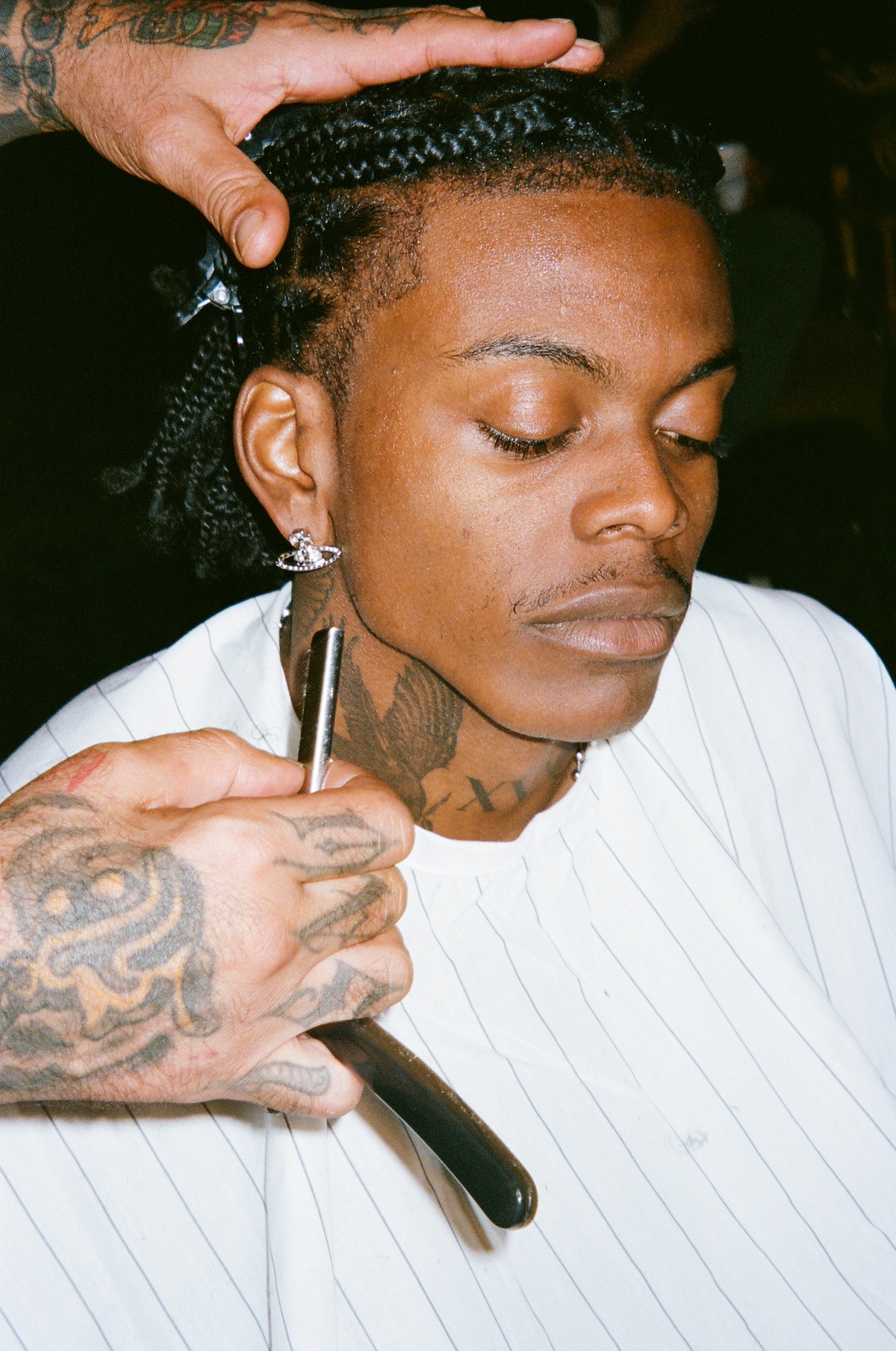
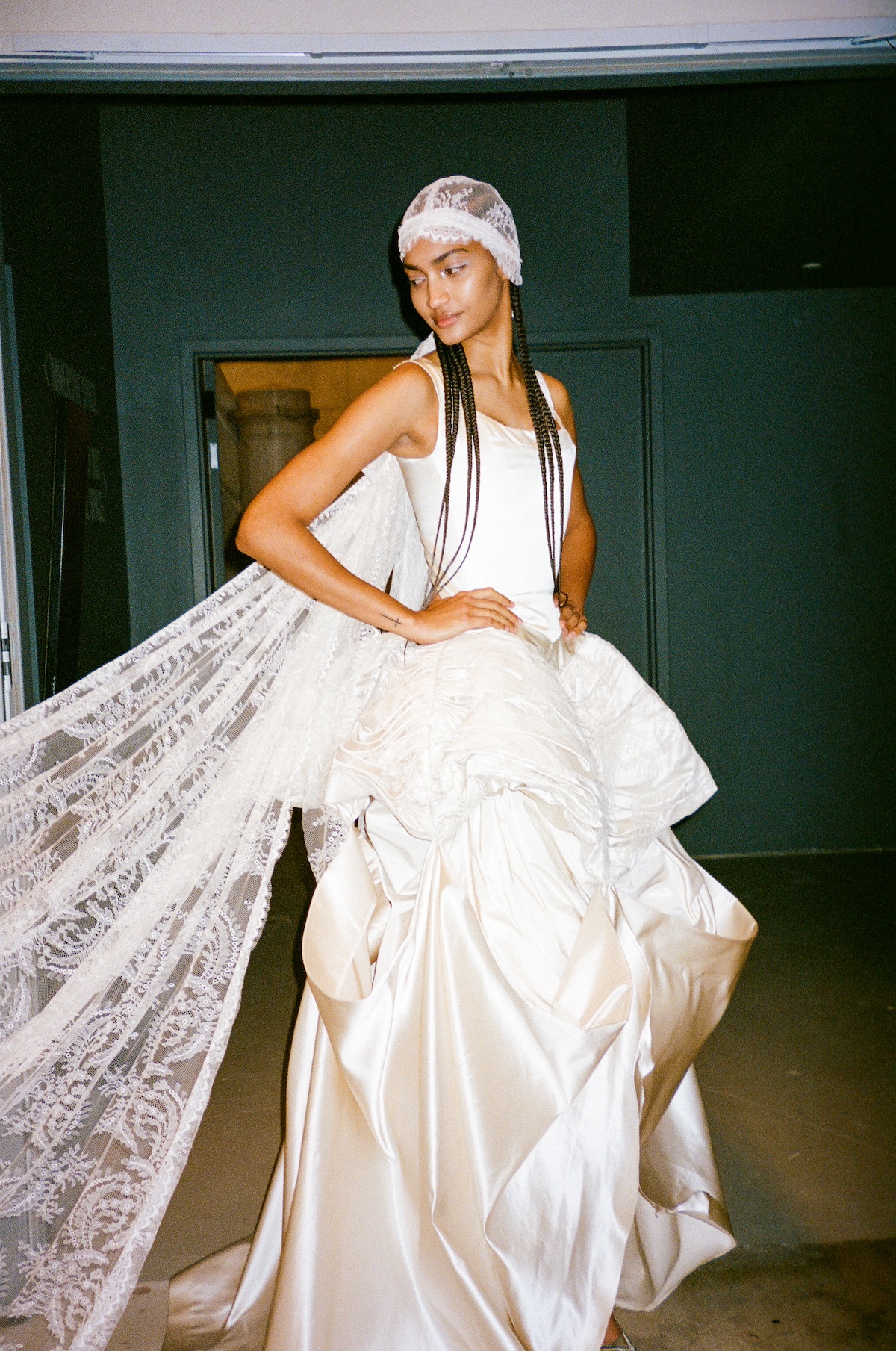
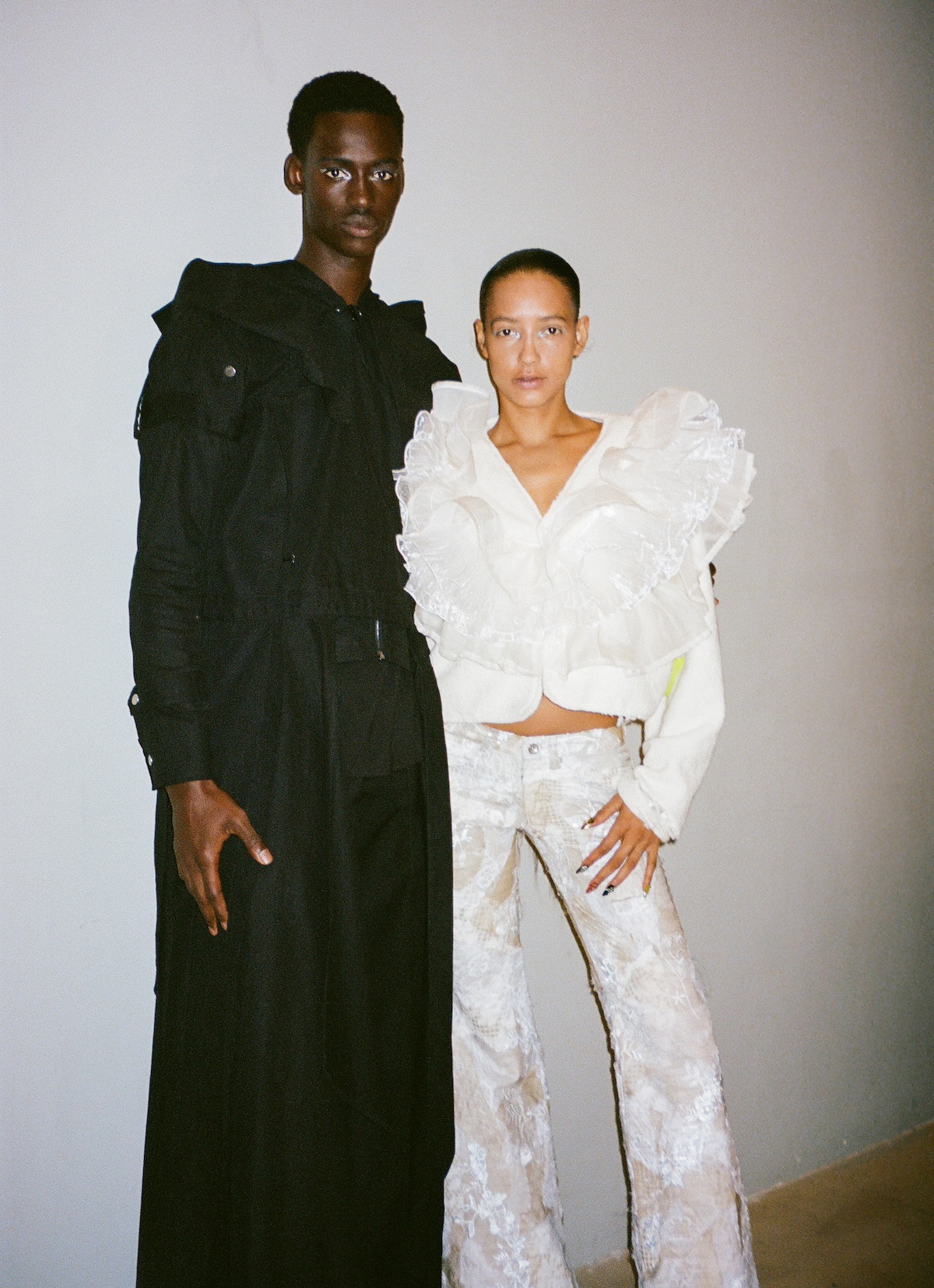
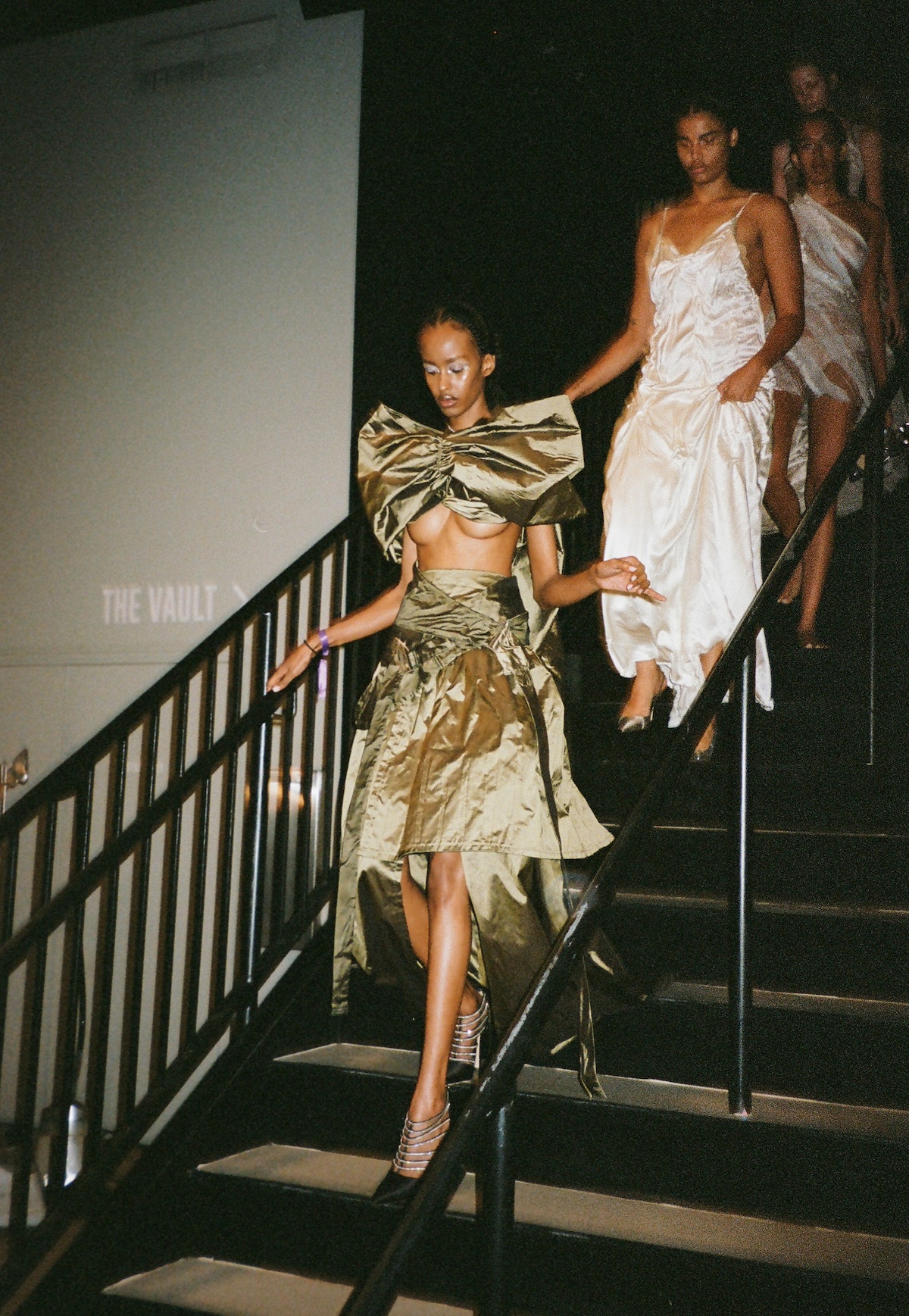
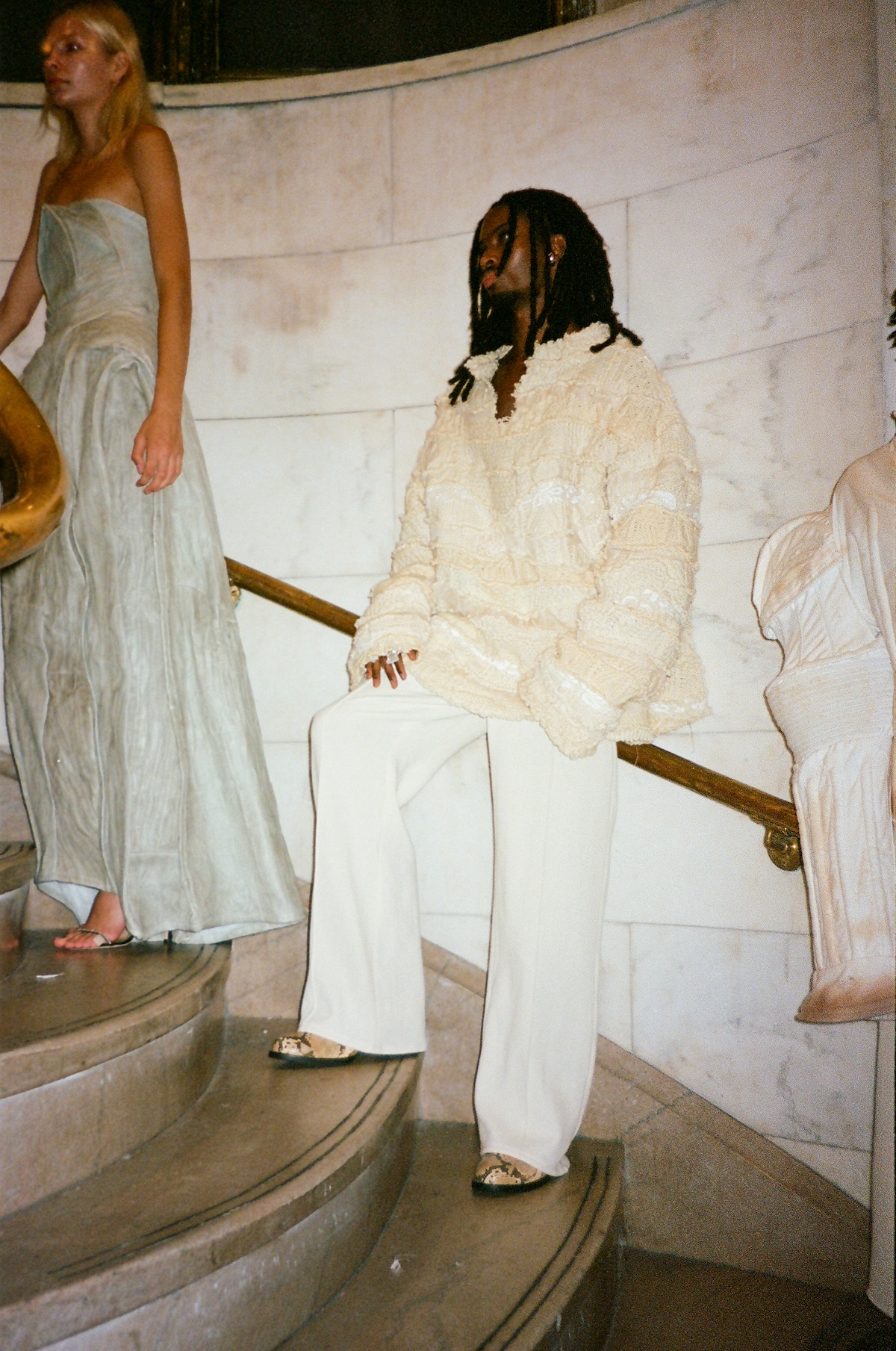
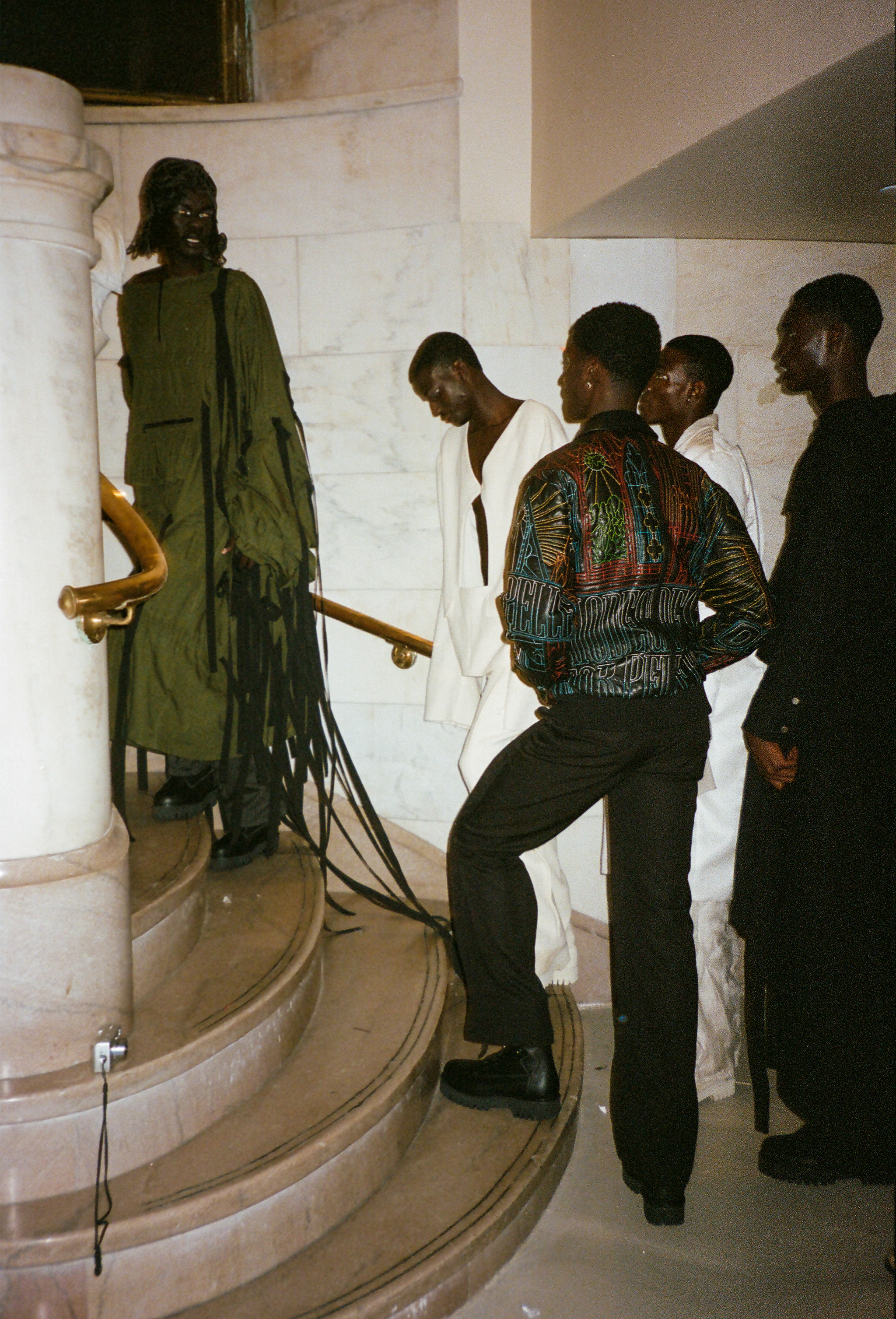
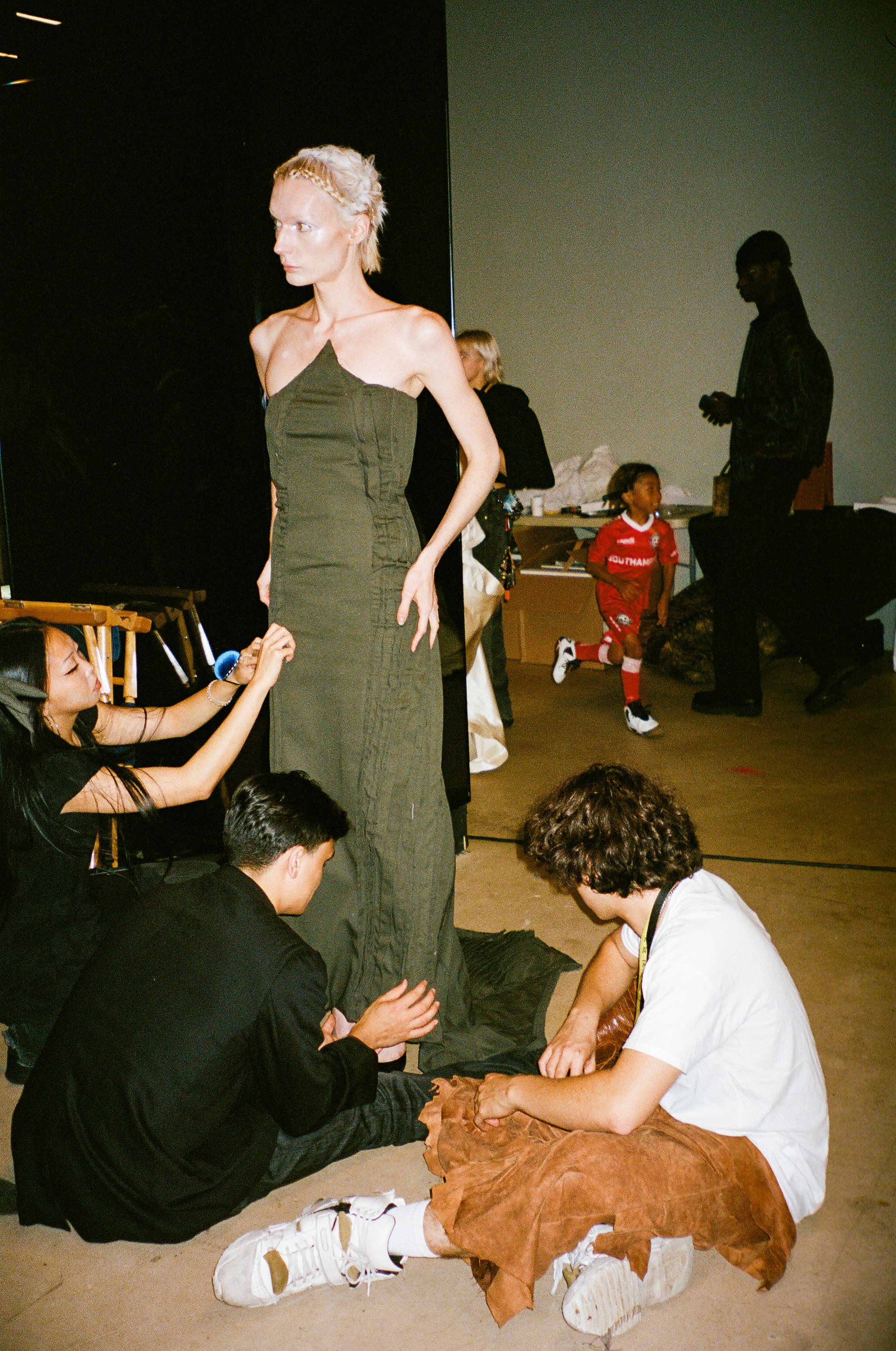
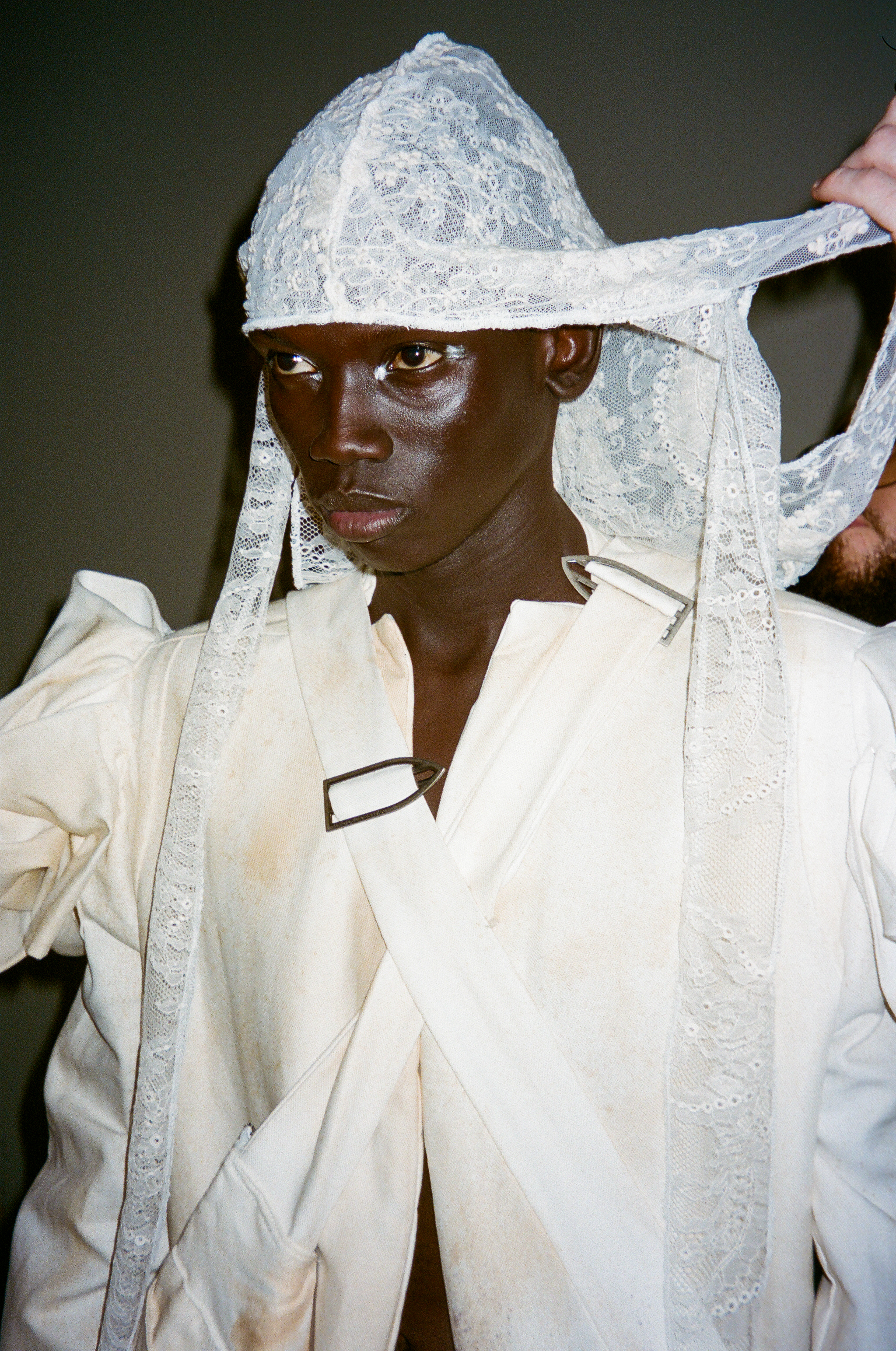
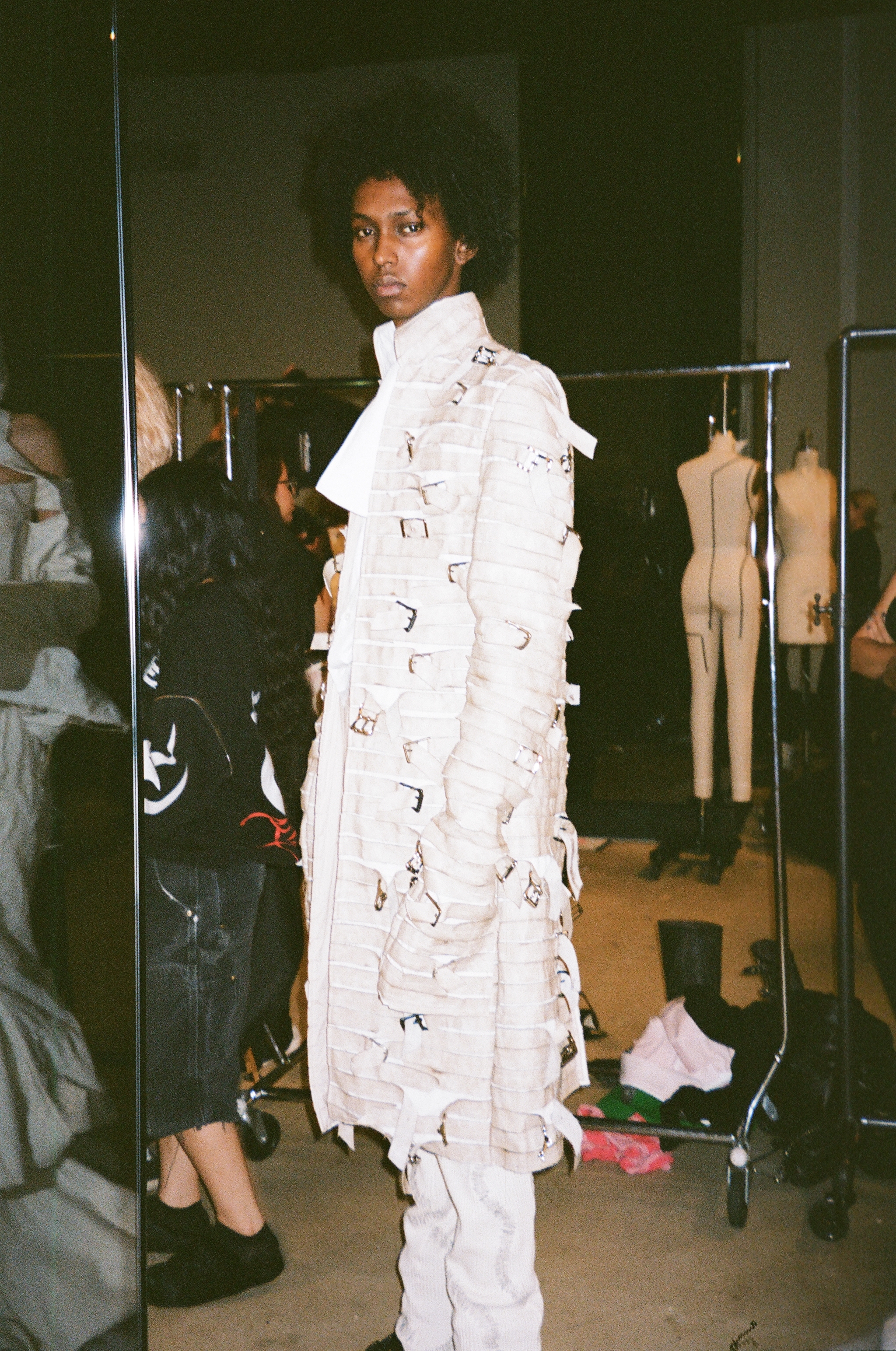
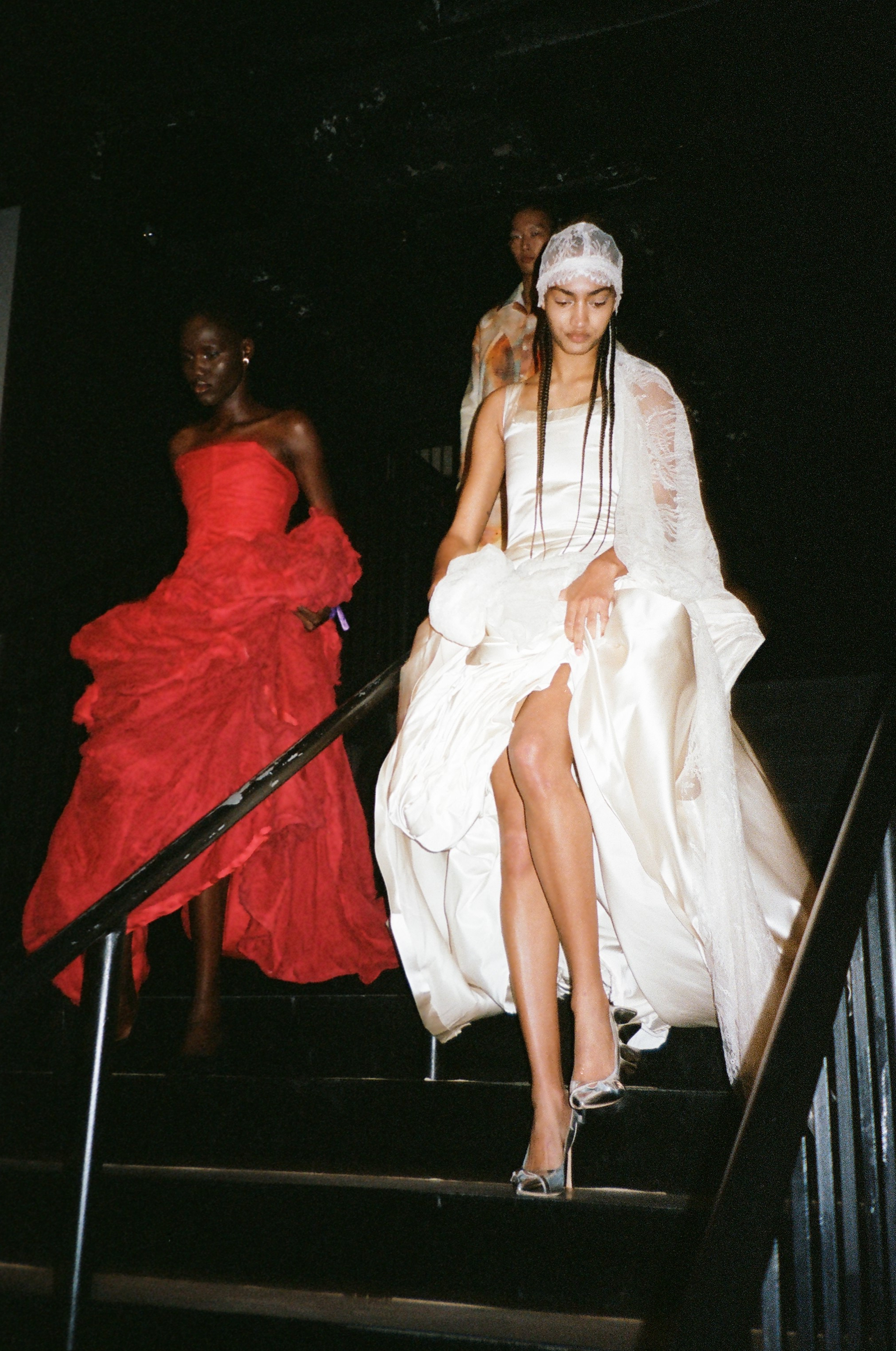
Who Decides War
By Dylan Andrews, office Men’s Fashion Editor
Photos by Spencer Stovell
Long lace durags draped and dragged along the runway as Ev Bravado and Tela D’Amore presented their latest collection. With a rapport already heavily established in streetwear, Who Decides War tapped deep into their fantasy world and pulled out inspiration from the Victorian era which gave us gowns of soft white linen next to burly leather jackets.
Models took center stage, donning jewelry by Martine Ali as Cash Cobain performed an original track he produced sampling songs by Kanye West, Alicia Keys, Stephanie Mills, and Jamiroquai alongside student musicians from Frank Sinatra School of the Arts. "It's been really cool to see silver jewelry more and more embraced into a formal wear conversation," says Martine. "There's an interesting juxtaposition that becomes cool, un-done, and even unexpected. The show was that moment; taking an approach and techniques that have traditionally been denim driven and spinning them into something far less precious and far more cool. Culturally I'm feeling more of those moments."
Alton Mason and Anaa Saber weren't the only surprises on the runway, with the brand using the SS25 show as an opportunity to preview upcoming collaborations with Air Jordan Brand and the resurging Pelle Pelle. The show felt like an evolution of sorts as Who Decides War found new ways to incorporate their familiar arch symbol and seamlessly fused past and present, blending streetwear with historical elegance.

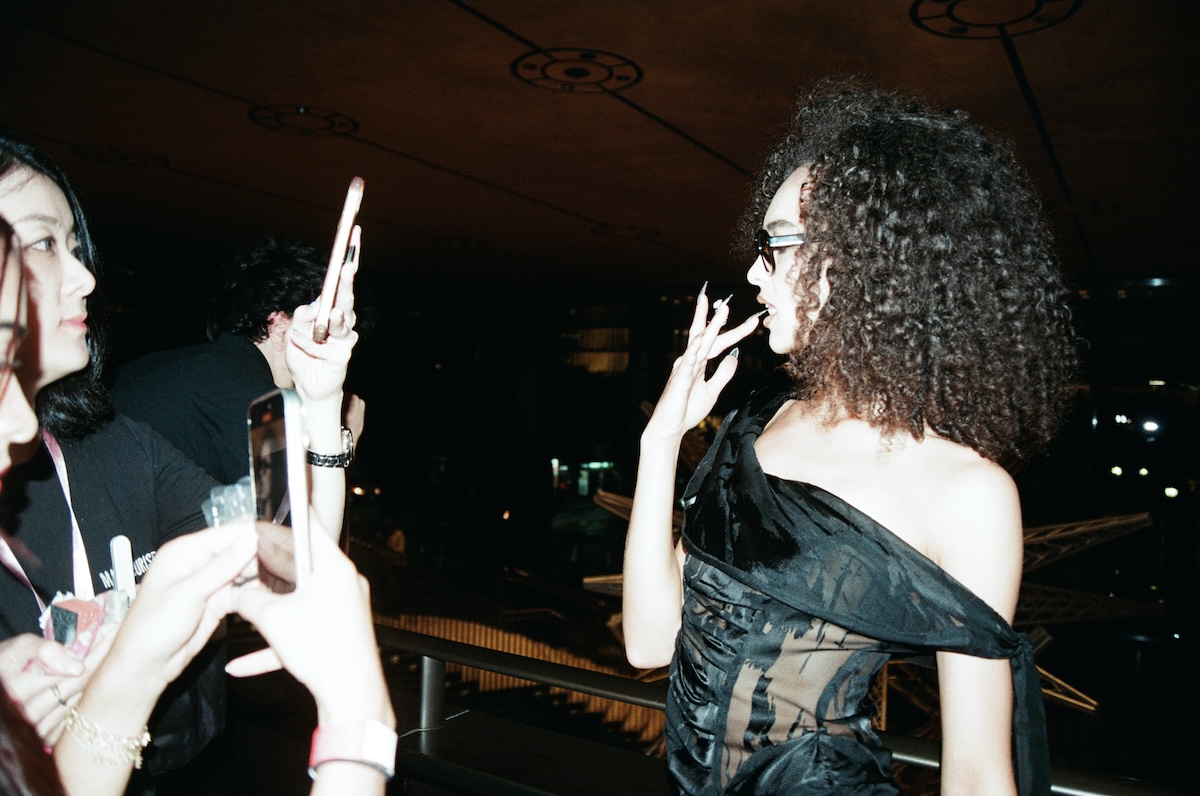

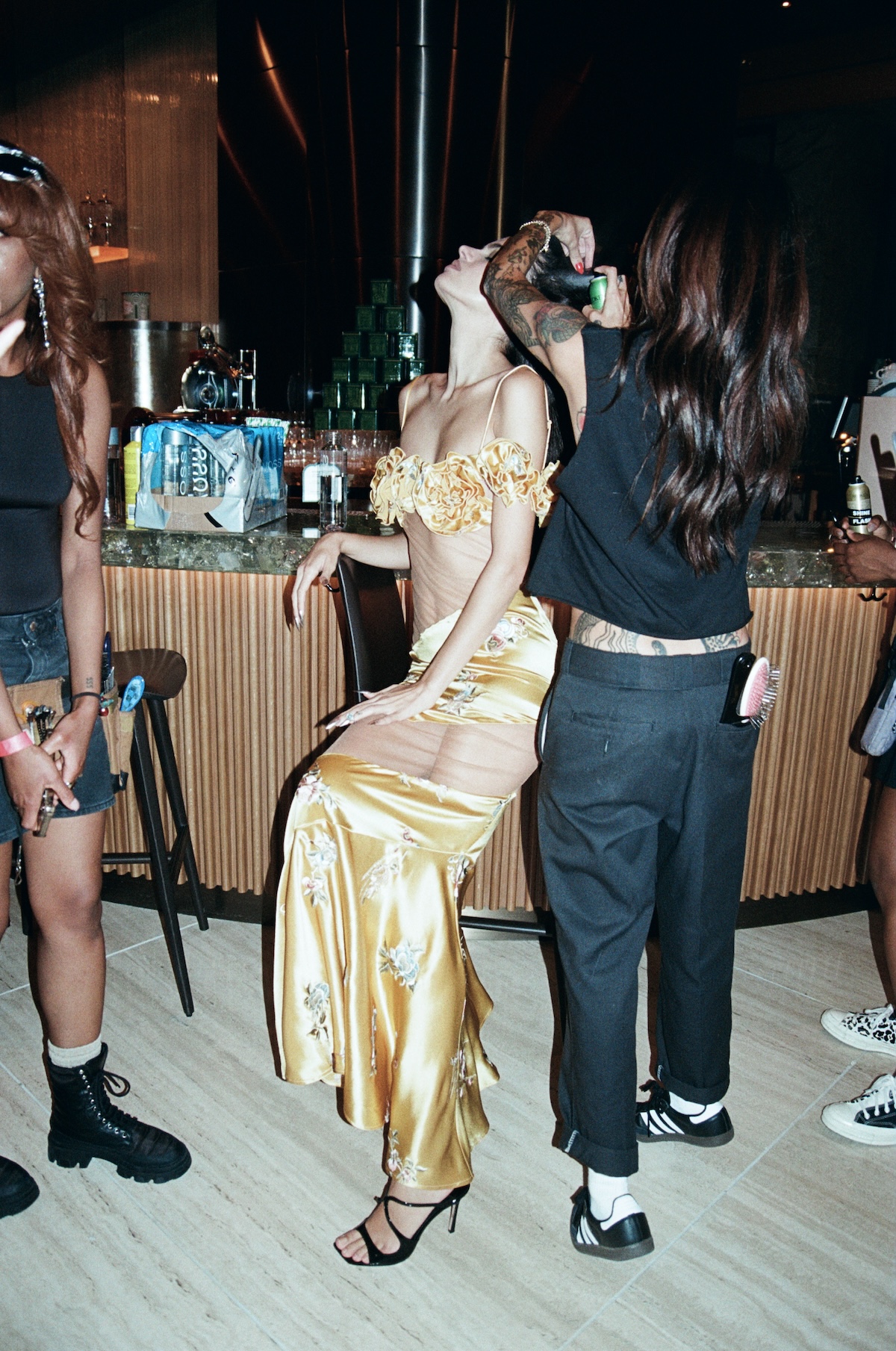

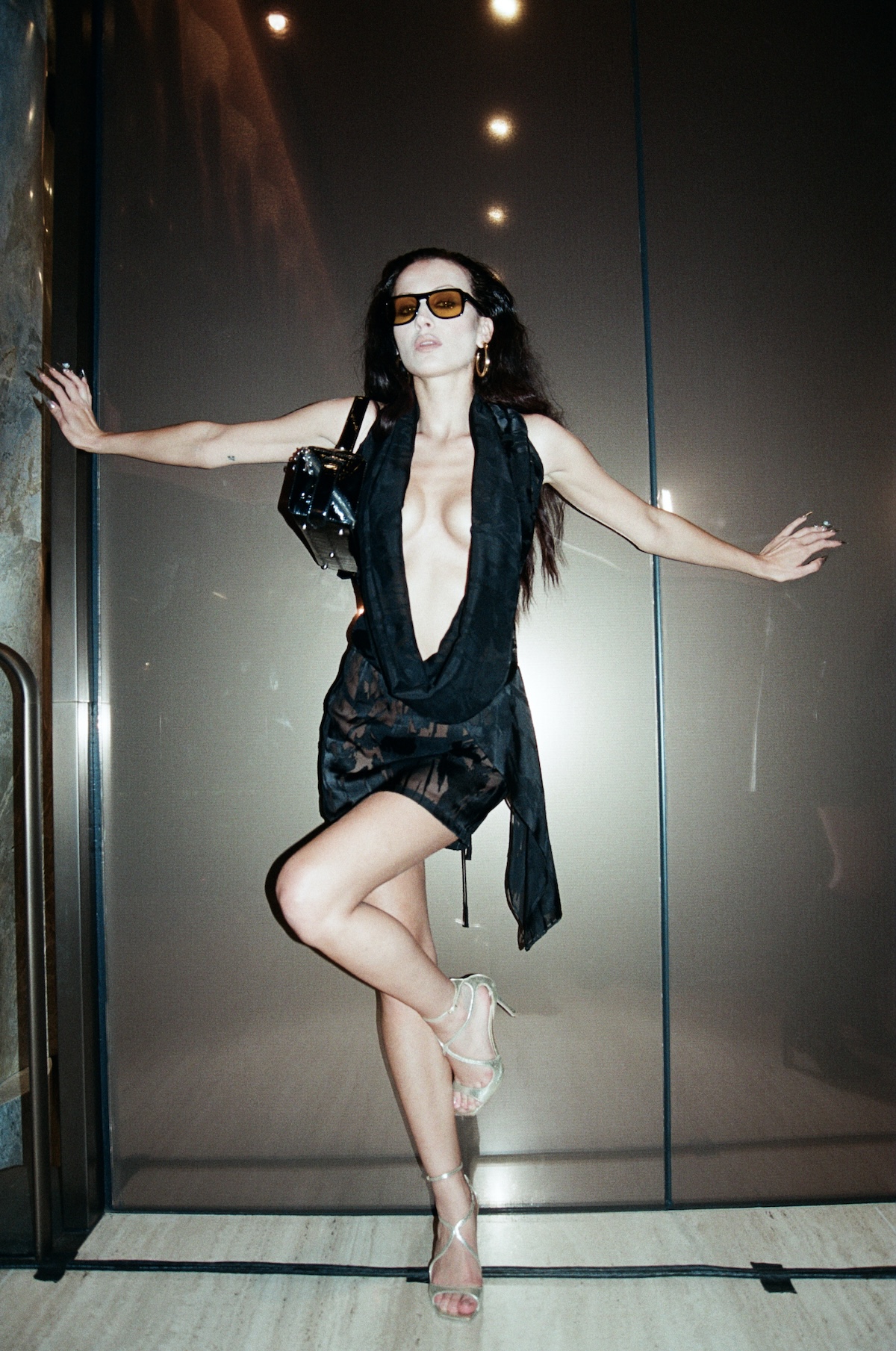

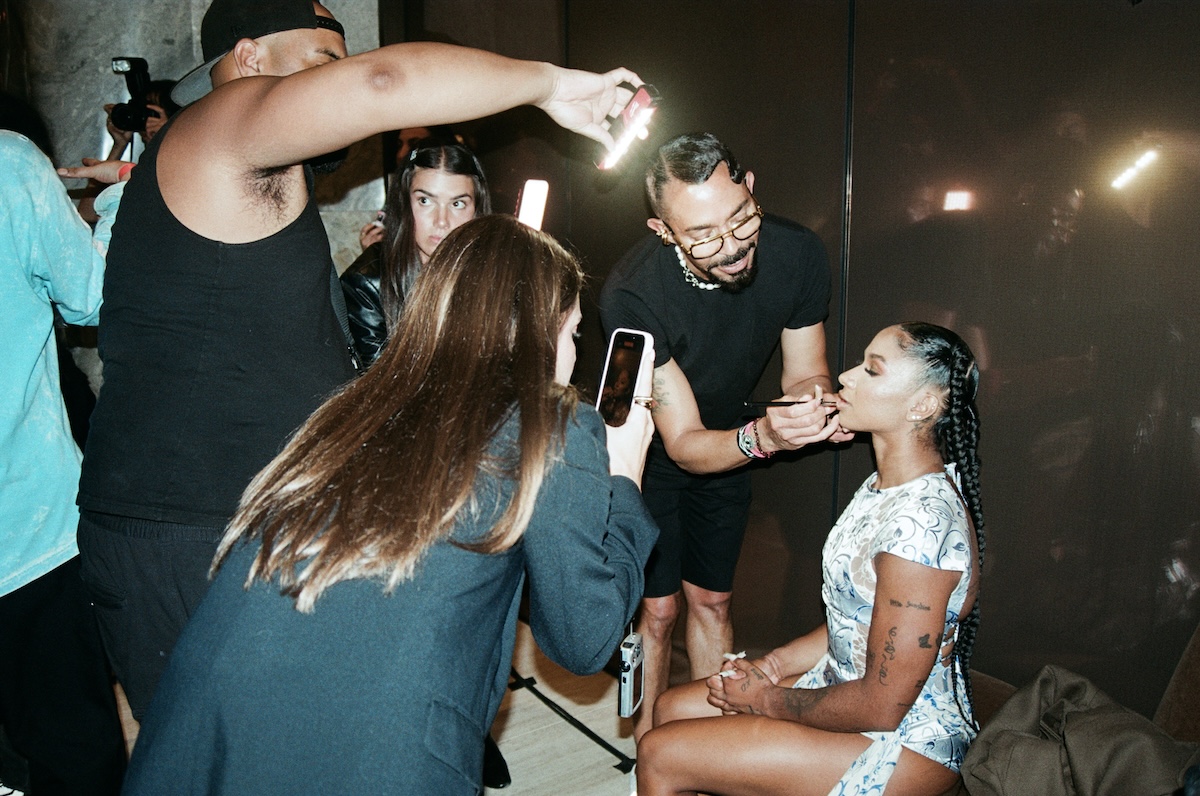
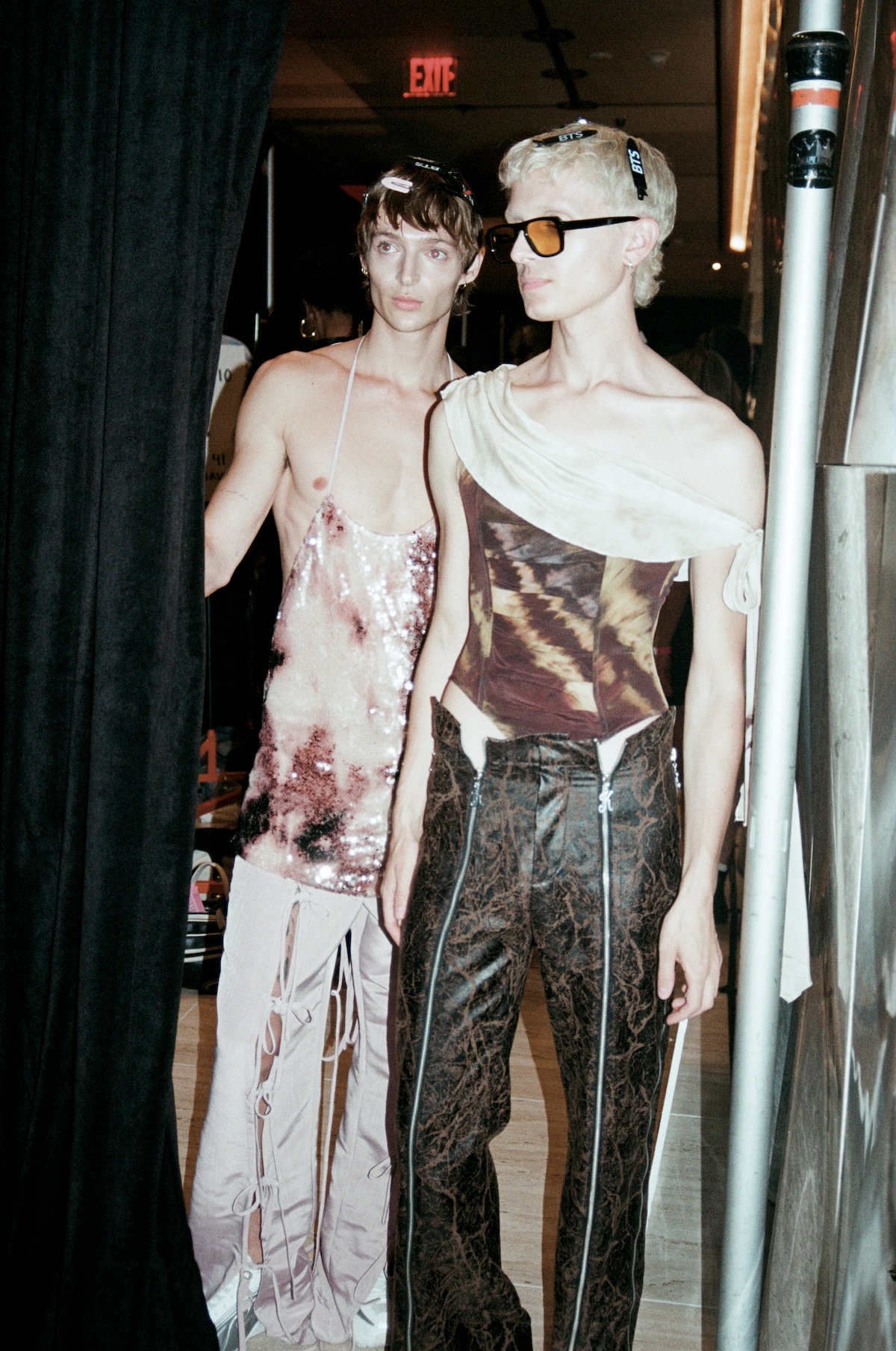
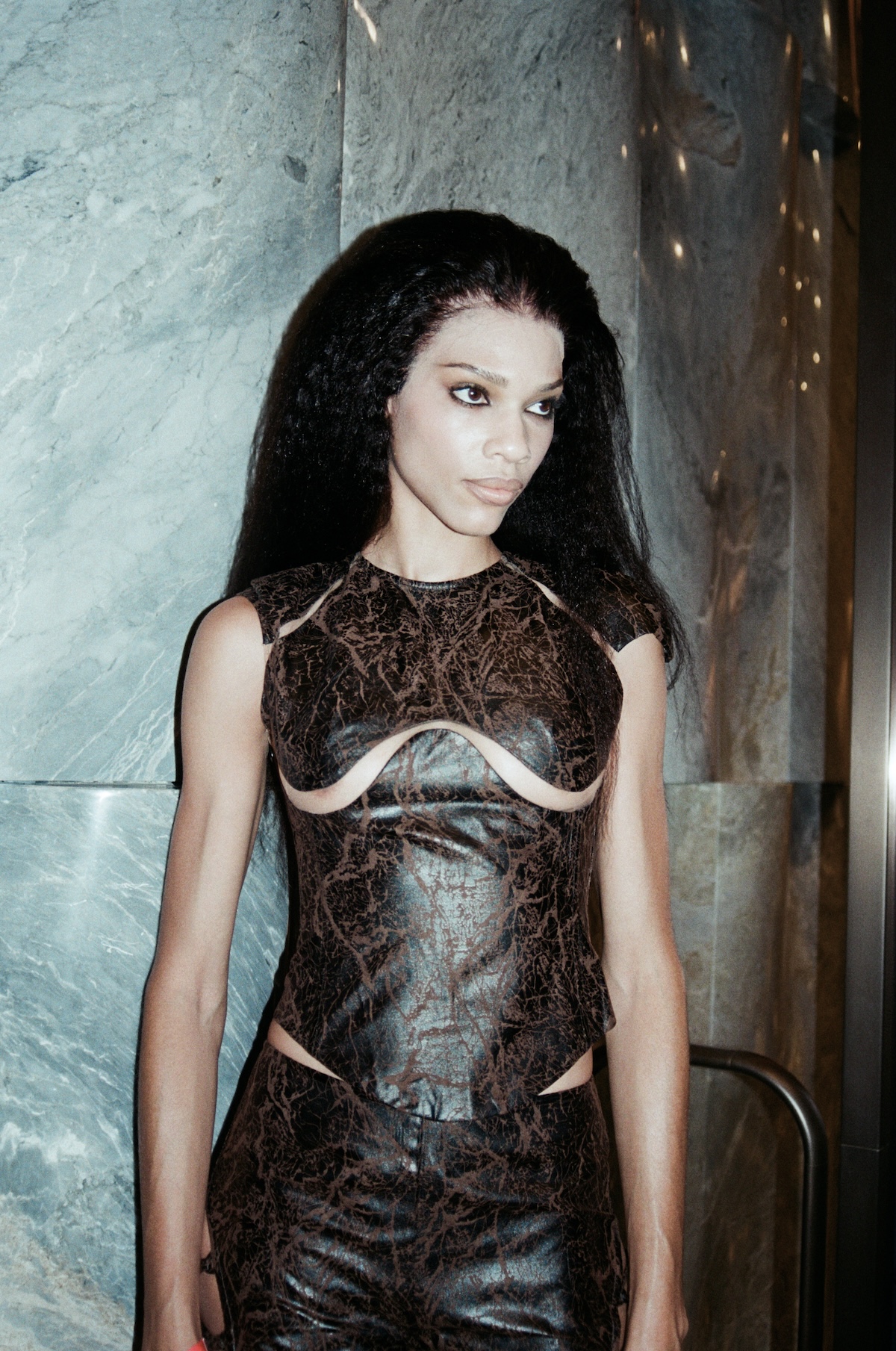
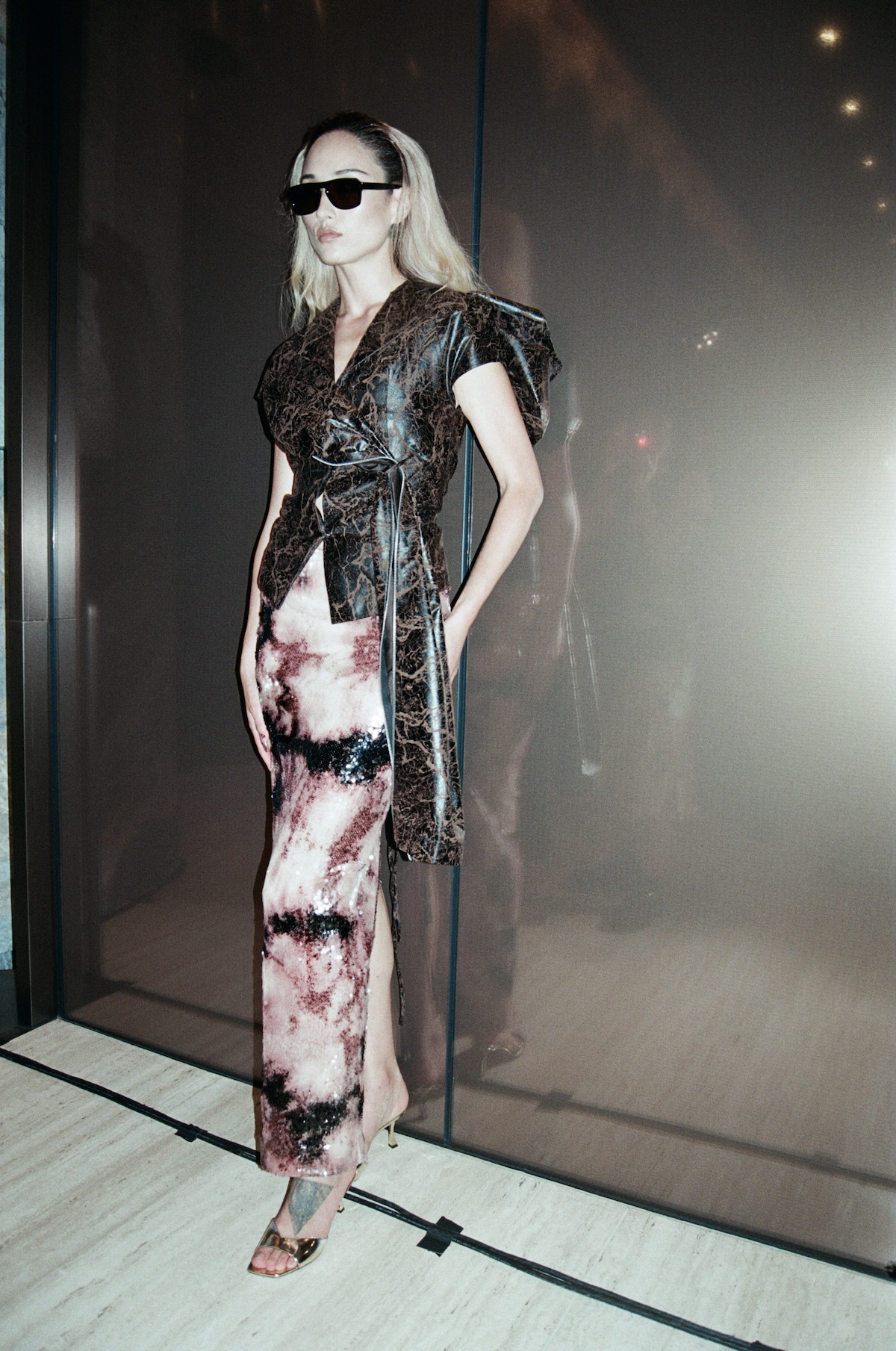
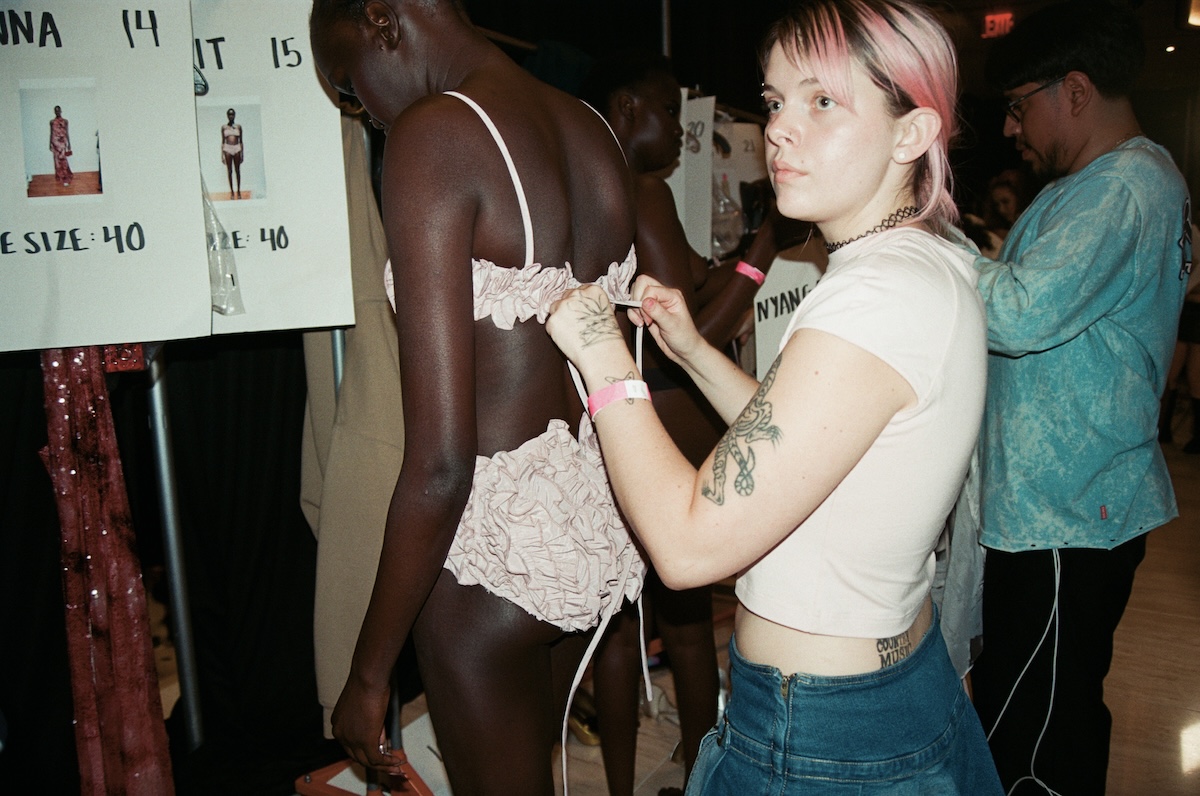
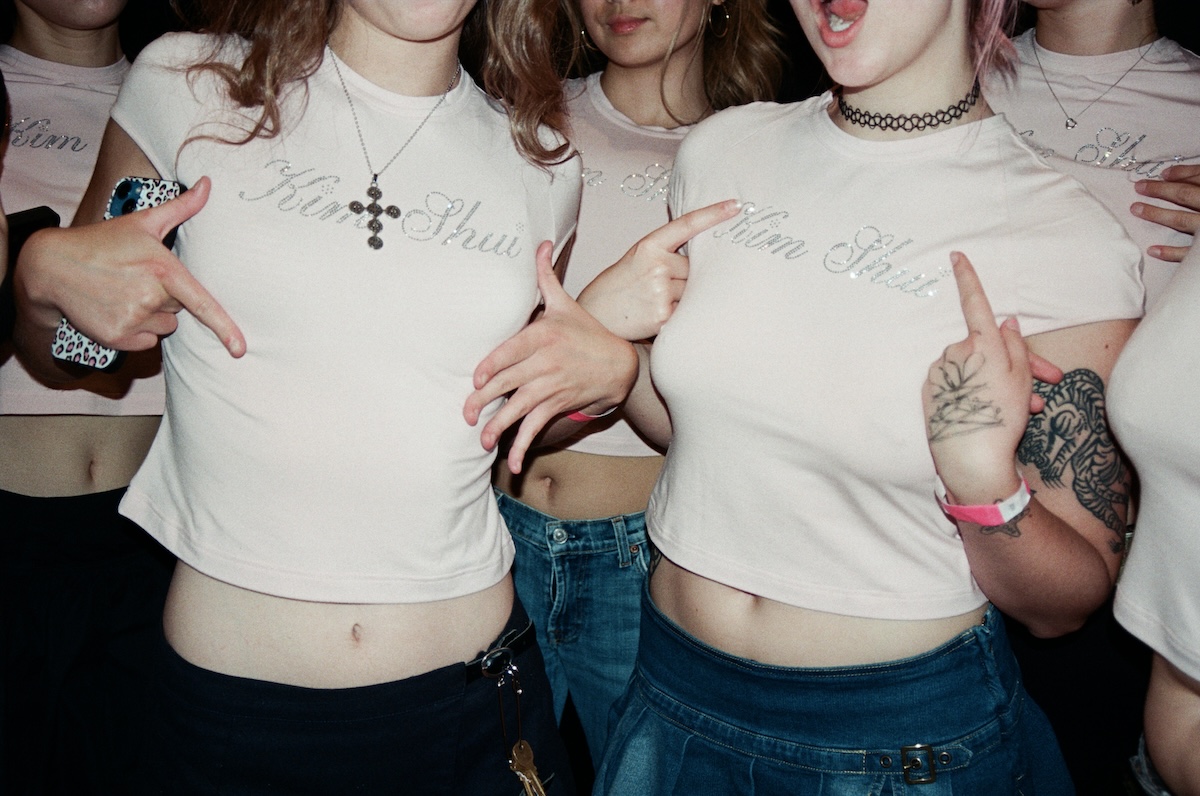
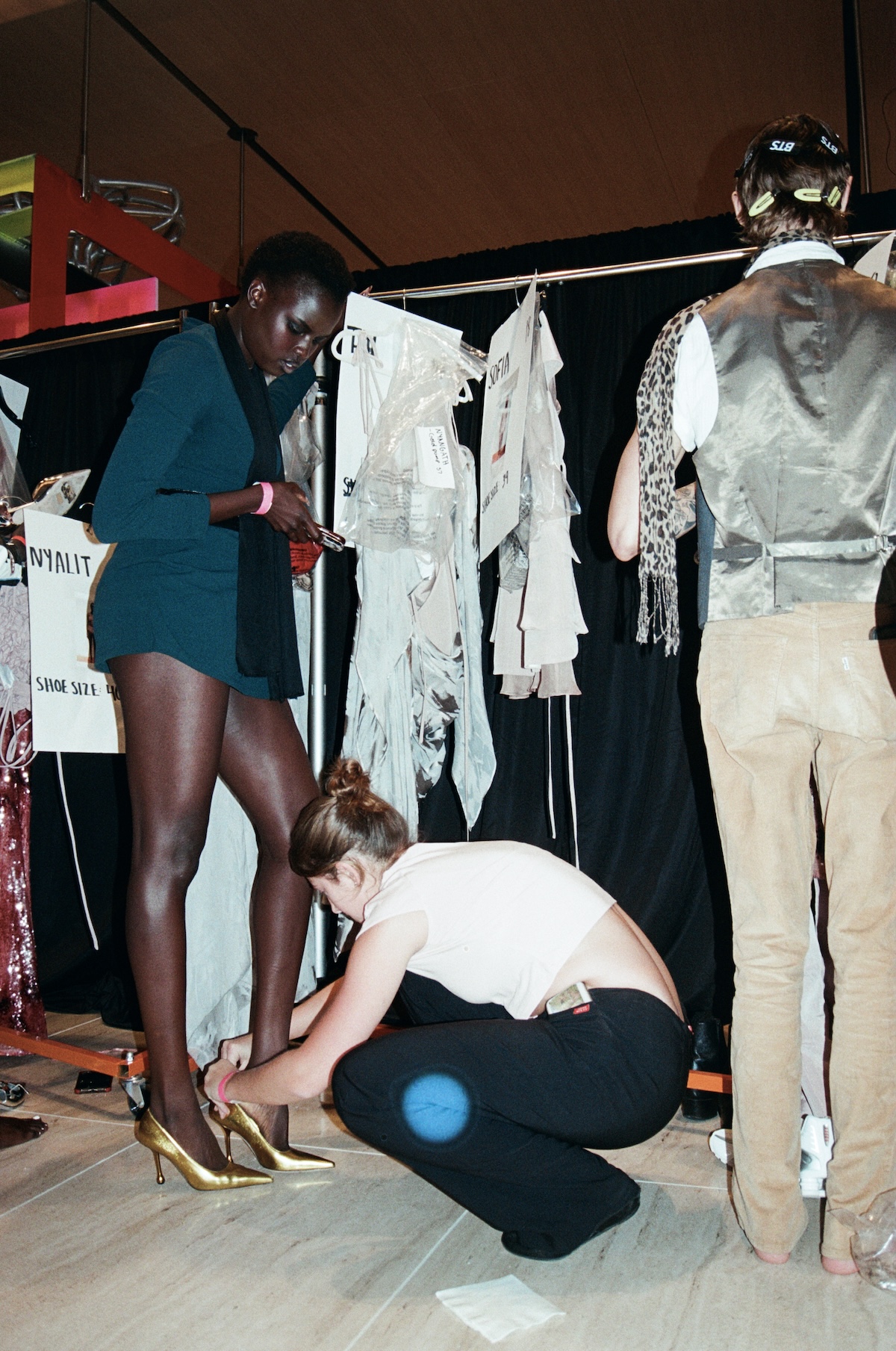
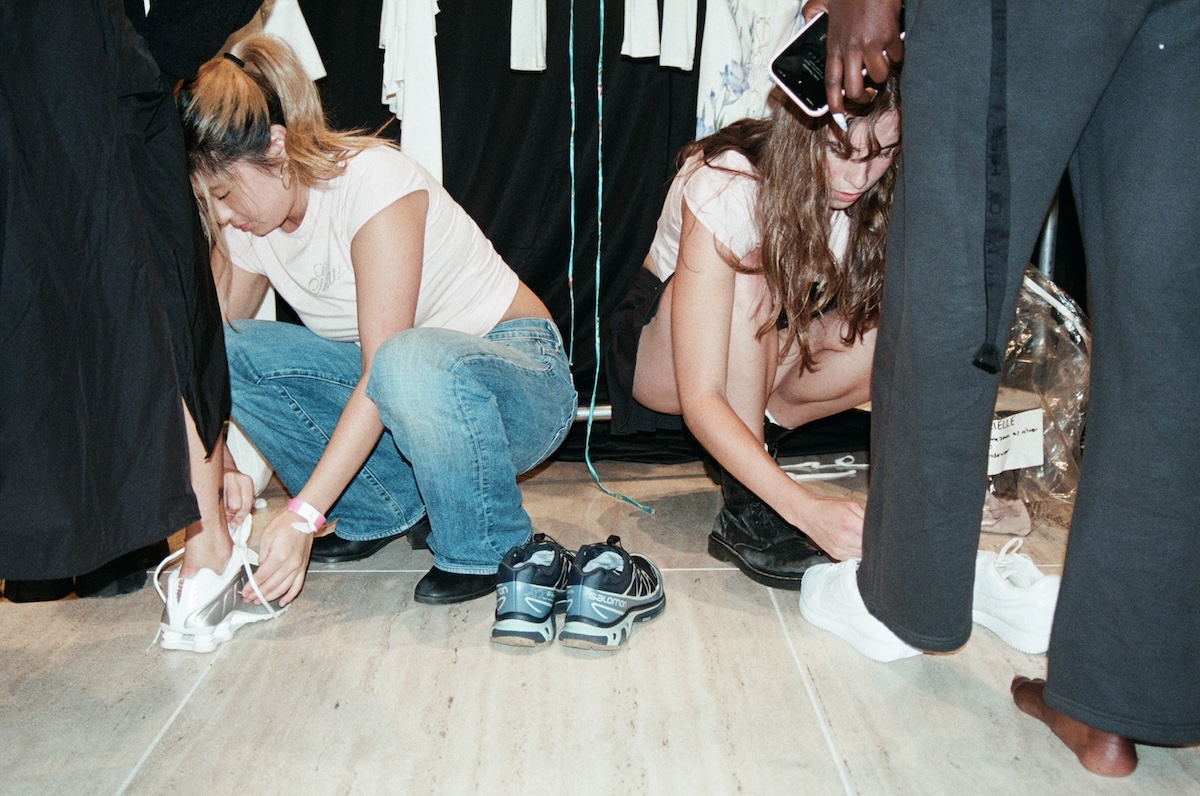
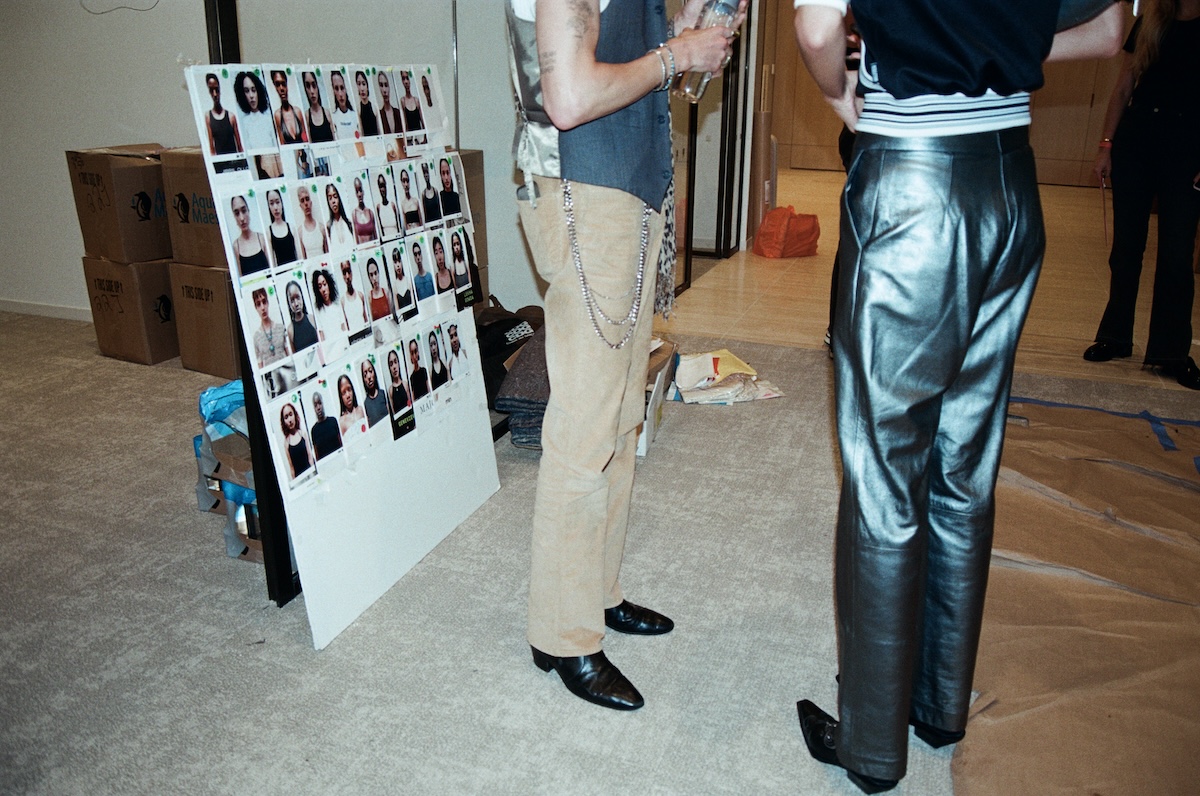
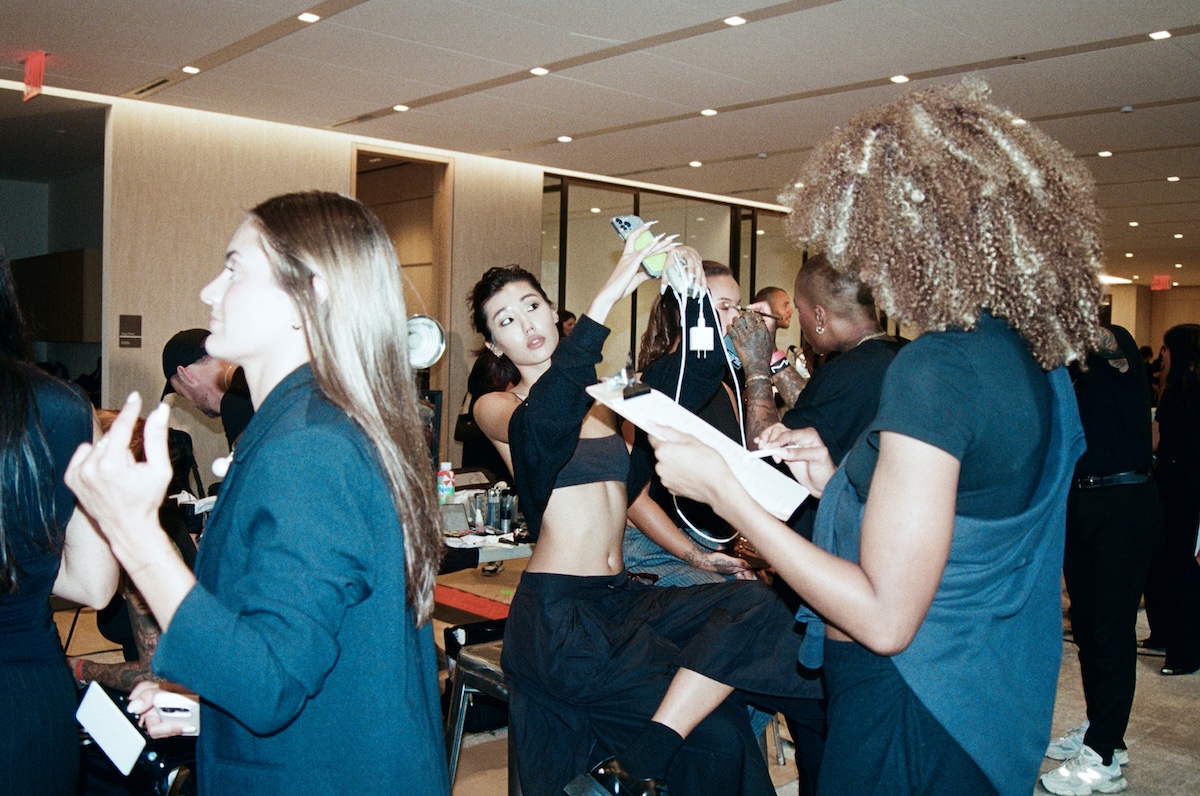
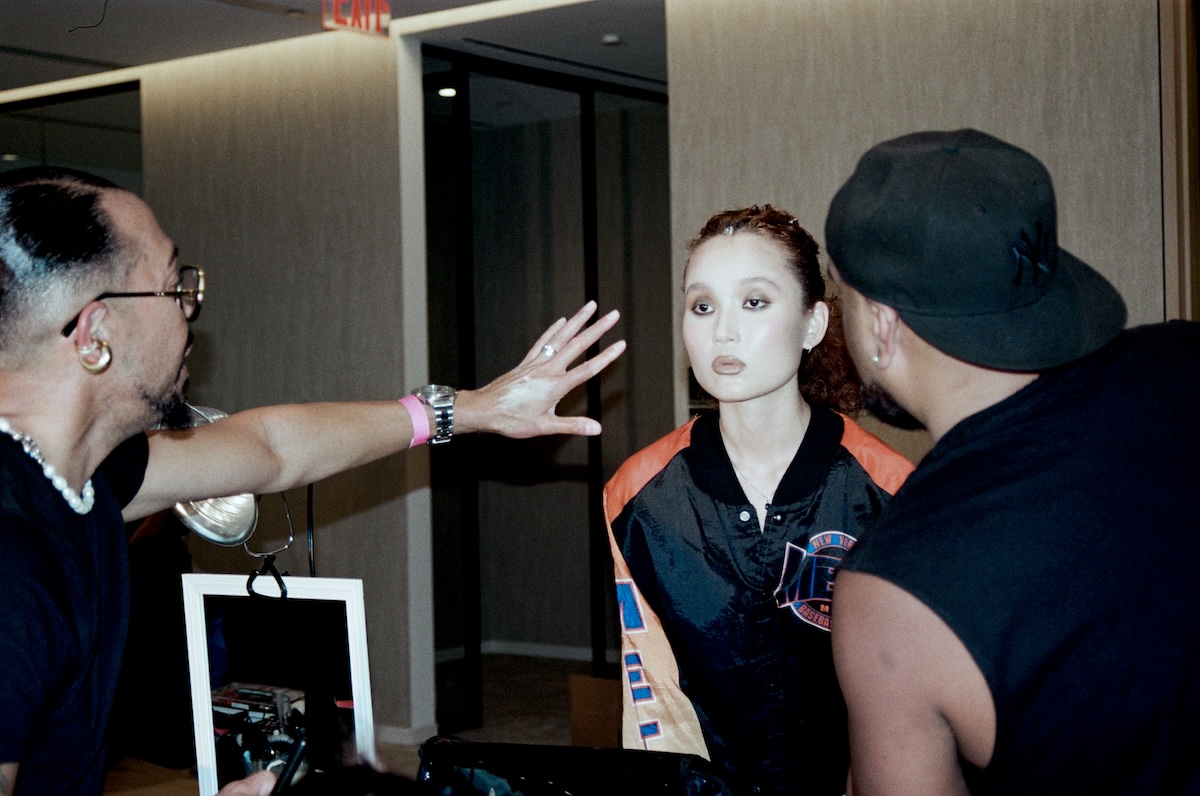
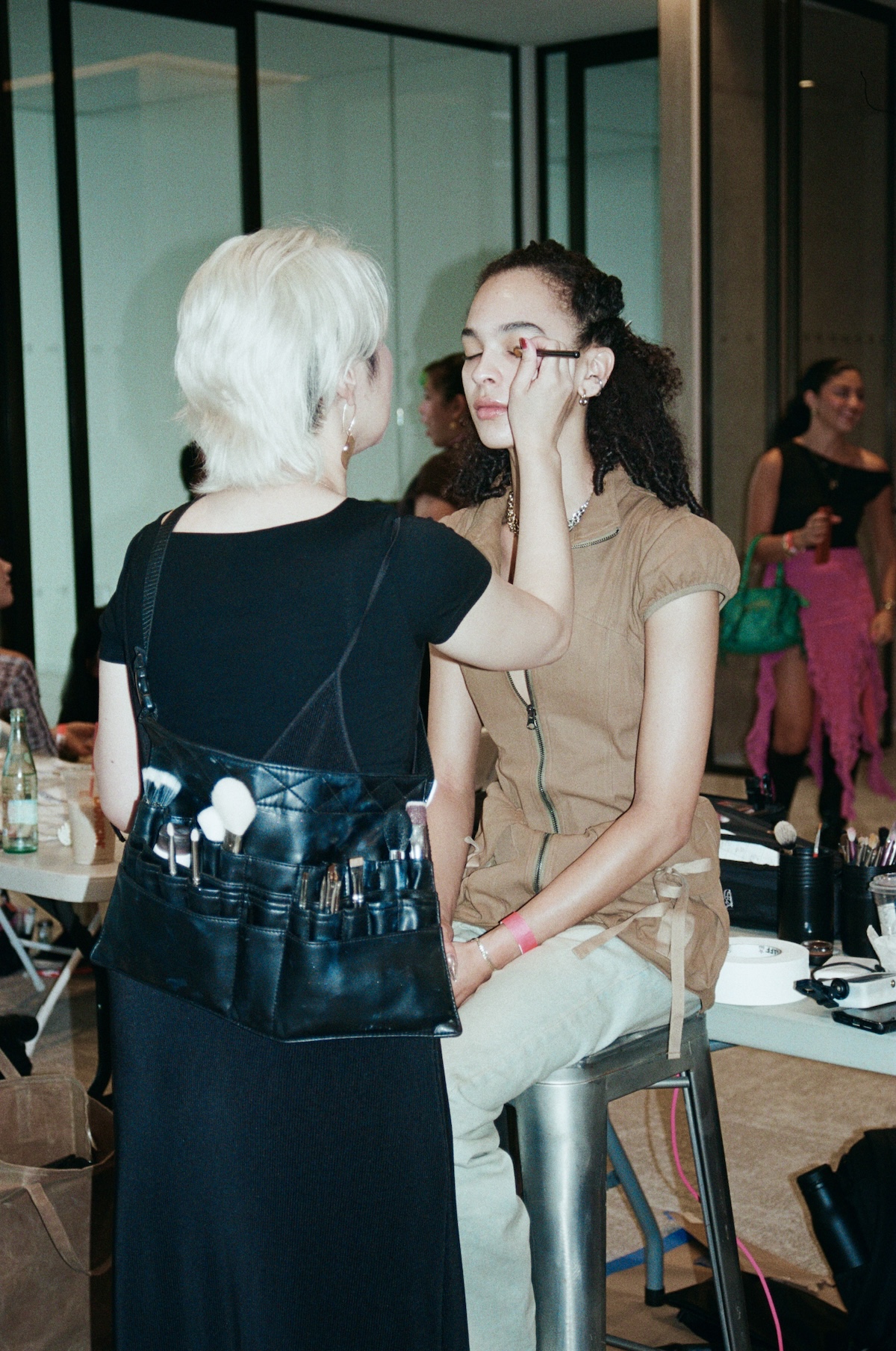
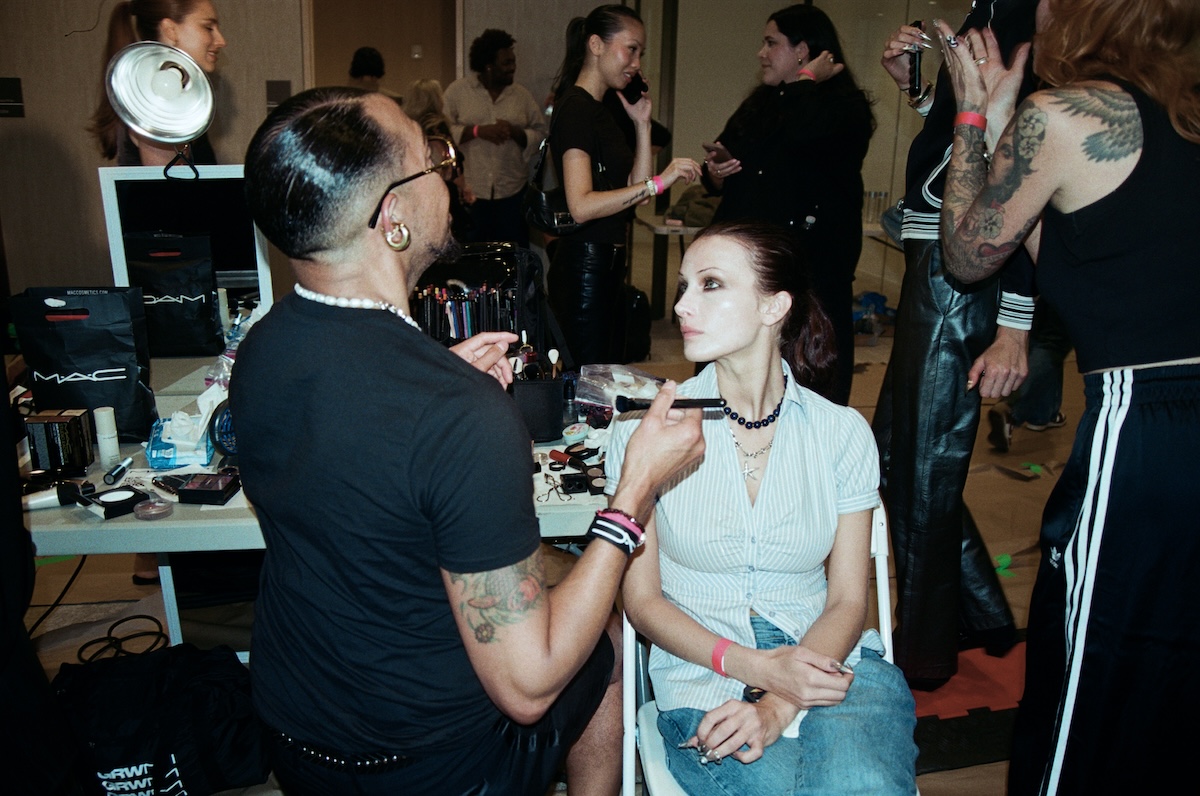
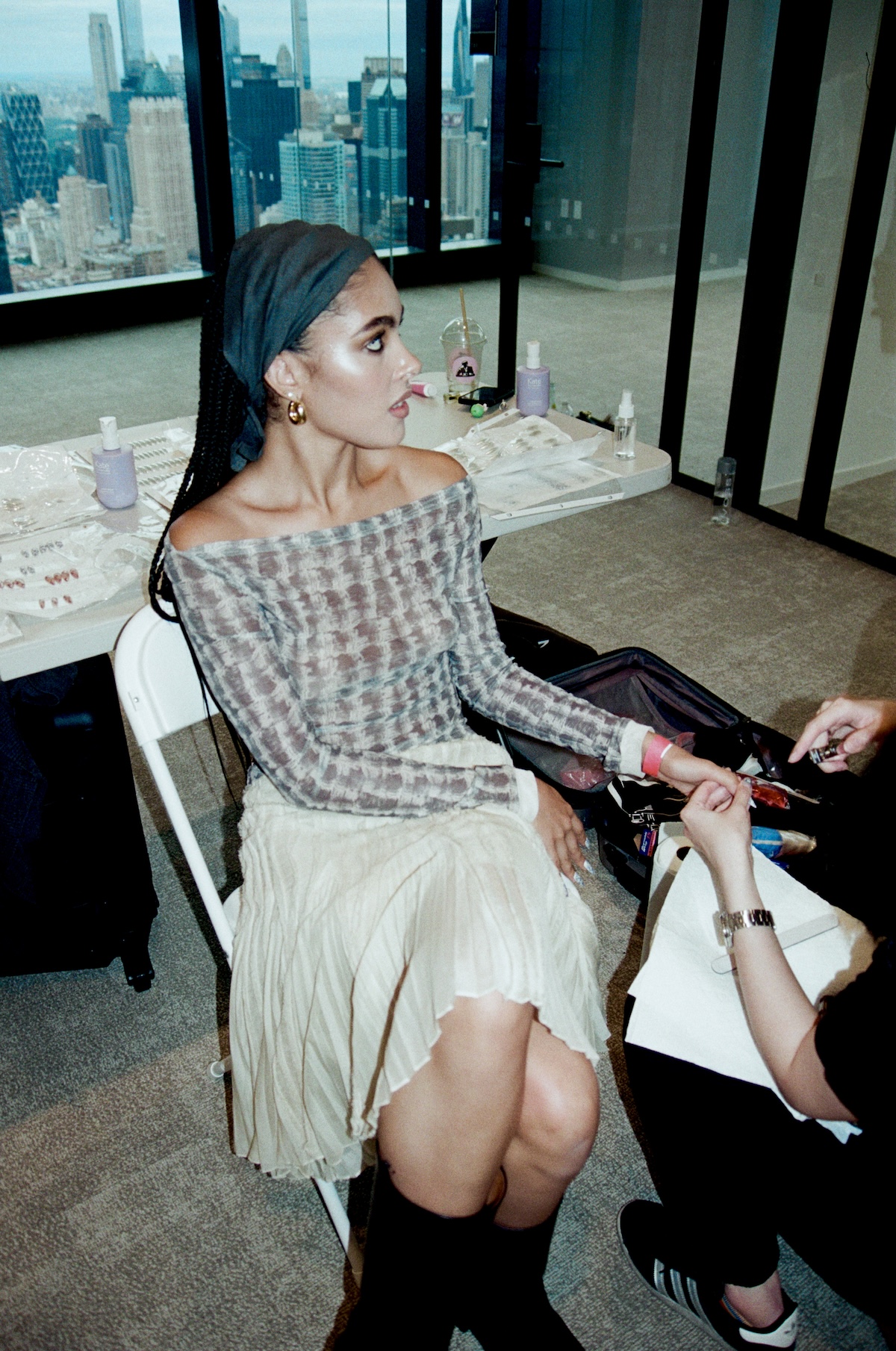

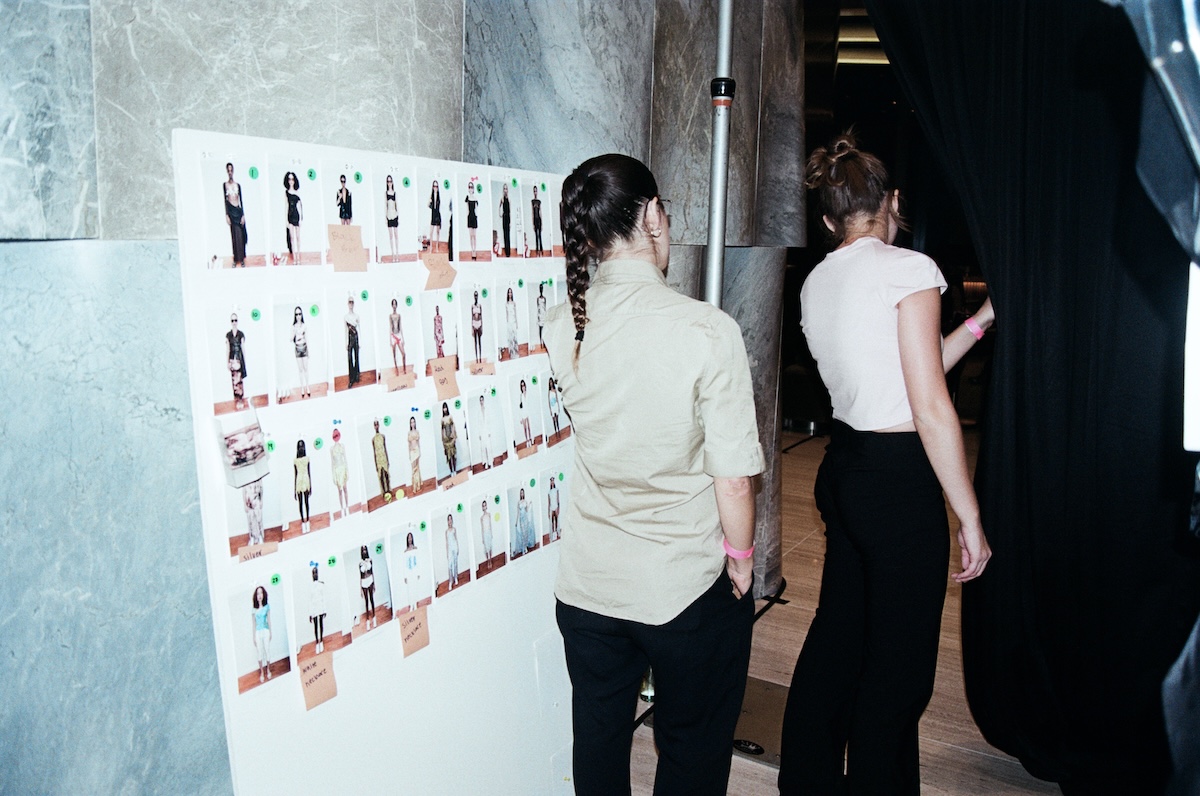
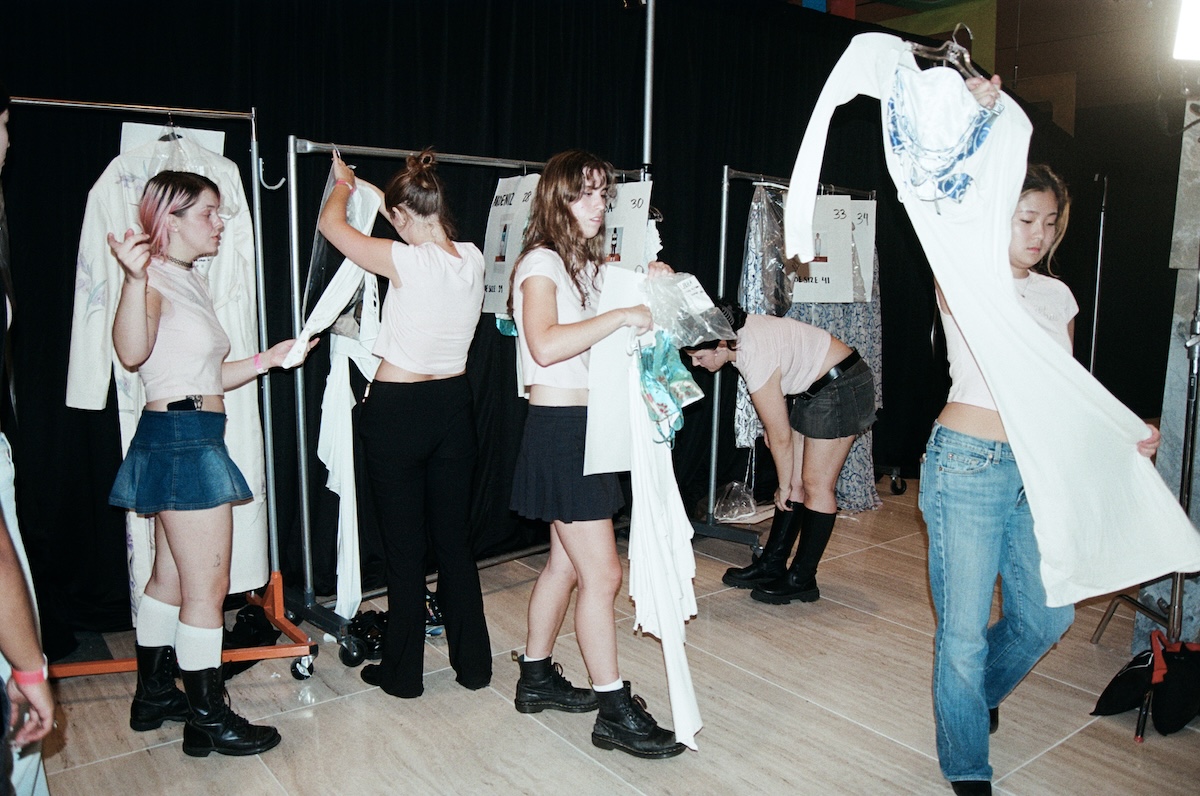


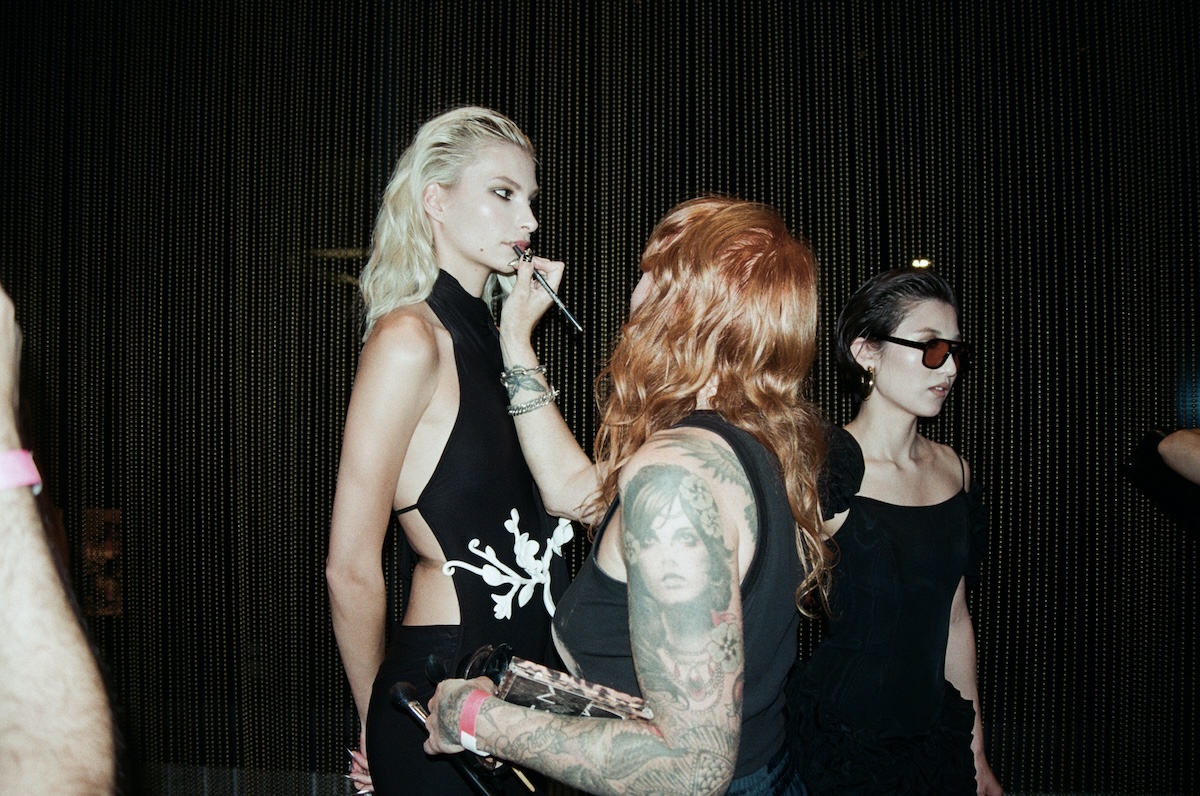

Kim Shui
By Kayla Curtis Evans, office contributing writer
Backstage photos by Taryn Segal
Kim Shui has hit her stride when it comes to displaying the female form and the power of femininity boldly and proudly. Her collections often portray the push and pull of the female experience — empowered within our own bodies, yet controlled by the parameters that surround us. But in a Kim Shui look, one can be free. For the designer’s Spring/Summer 2025 collection, she celebrated the power of resilience, a quality that all women wield fiercely.
Informed by Kintsugi, the ancient Japanese craft of reconfiguring broken ceramic pottery using gold resin, the range navigated the ideas of strength and fragility. Many of the collection’s pieces — asymmetrical dresses, matching pant sets, long flowing skirts and matching sets — mirrored this art form, displaying fabric fragments pieced together with white lace. Other ensembles that showed off nature-inspired textures or prints were inspired by Joan Fontcuberta’s Kintsugi book. Additional motifs, such as structural elements, were influenced by Matthew Barney’s terracotta sculptures.

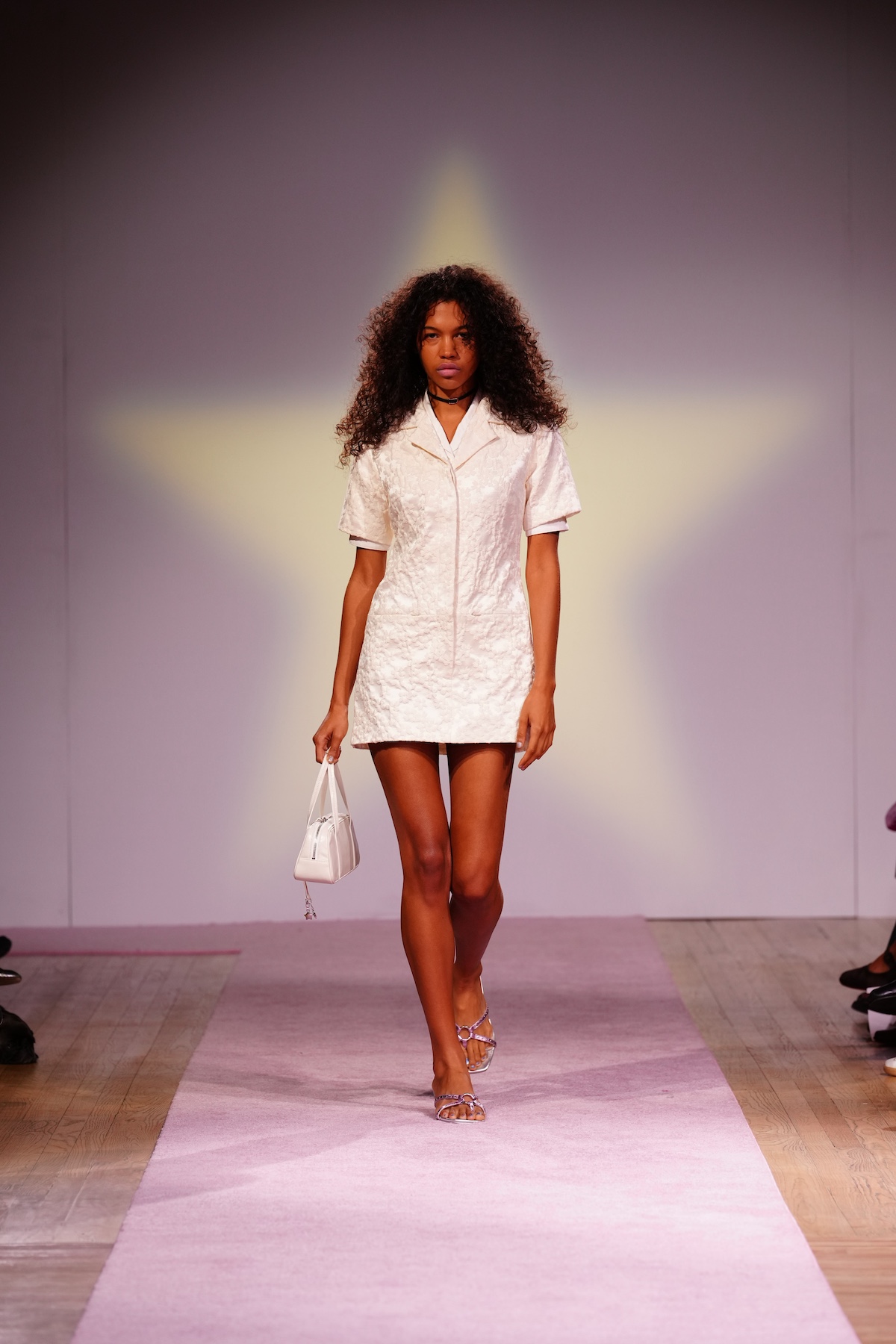

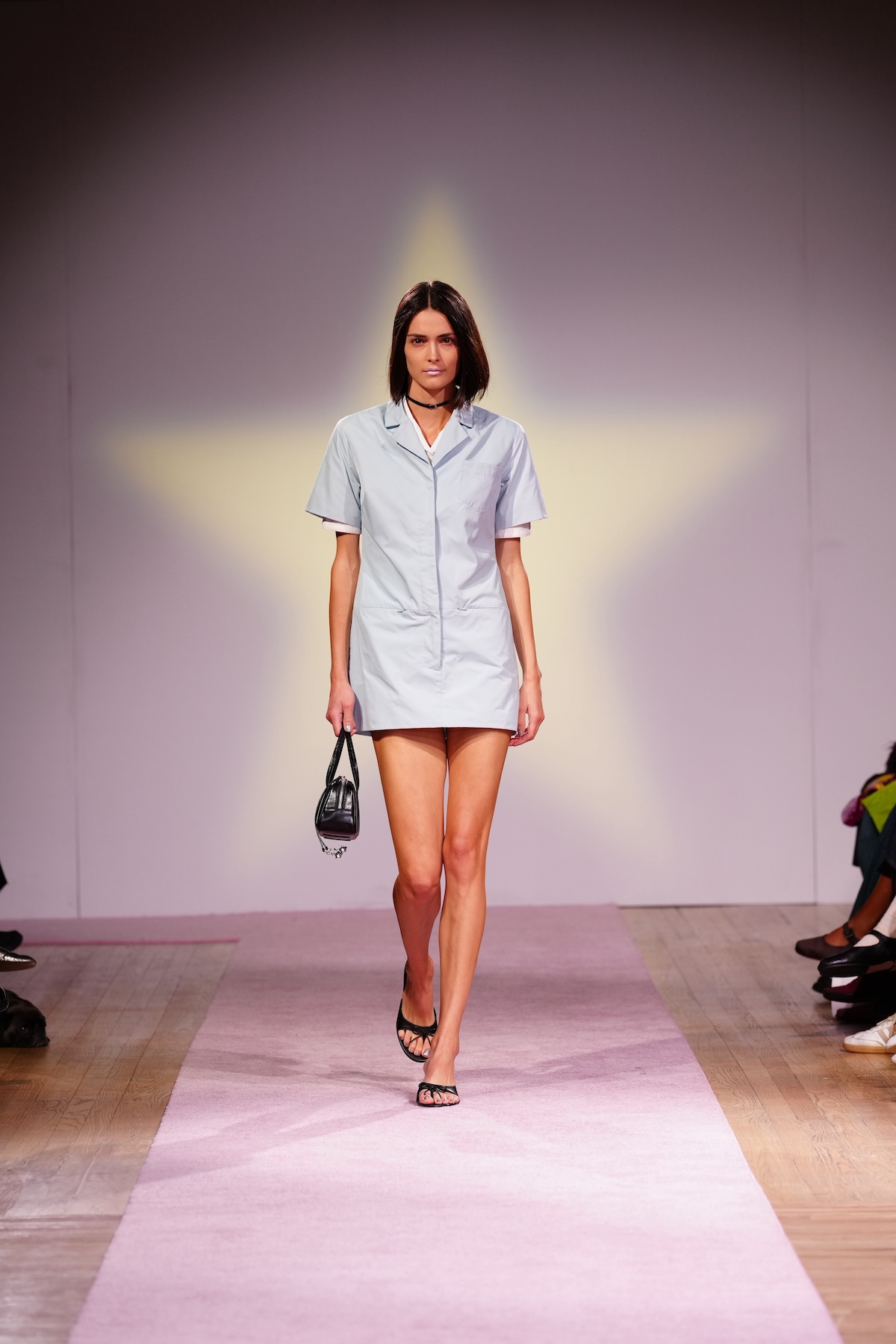

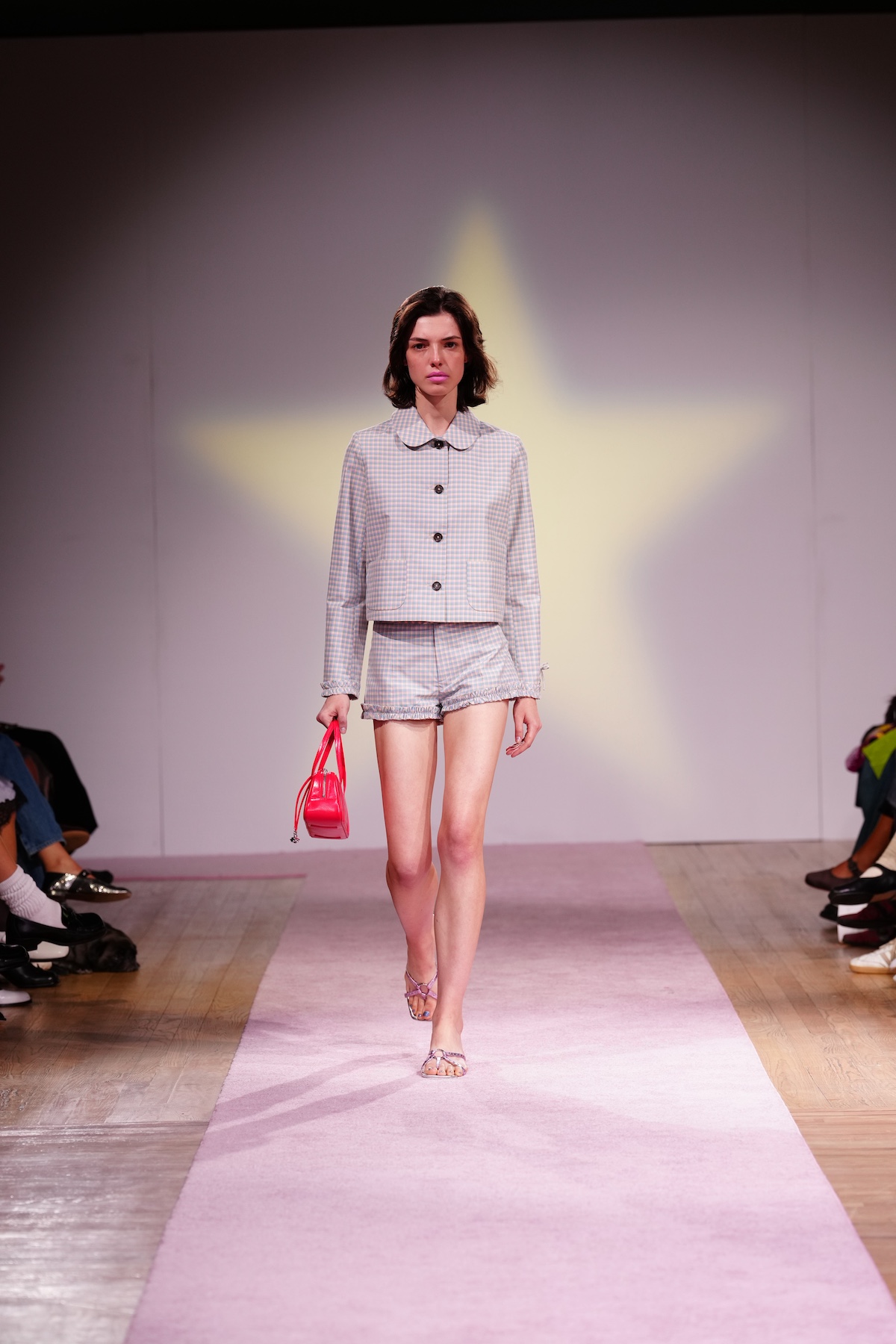



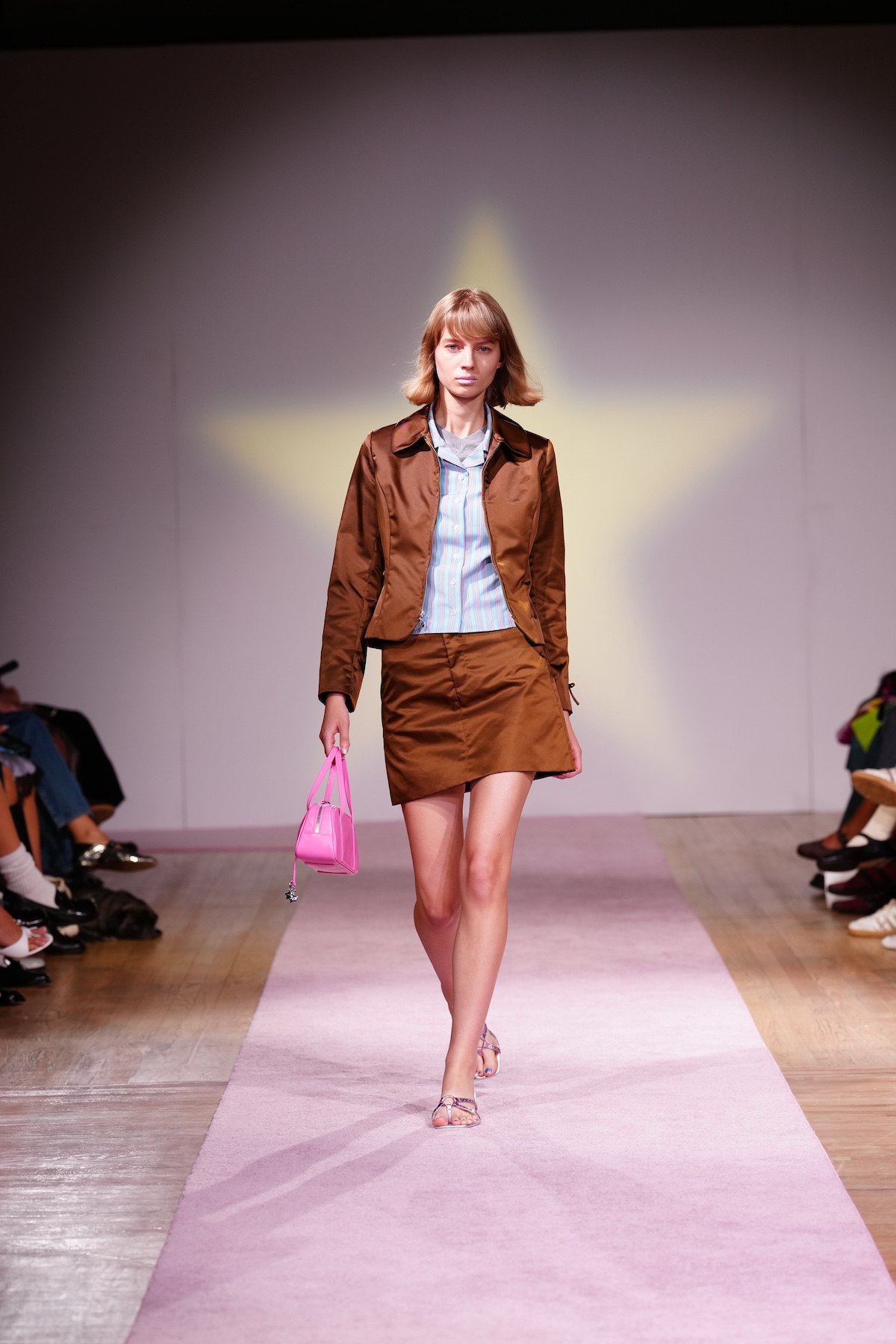
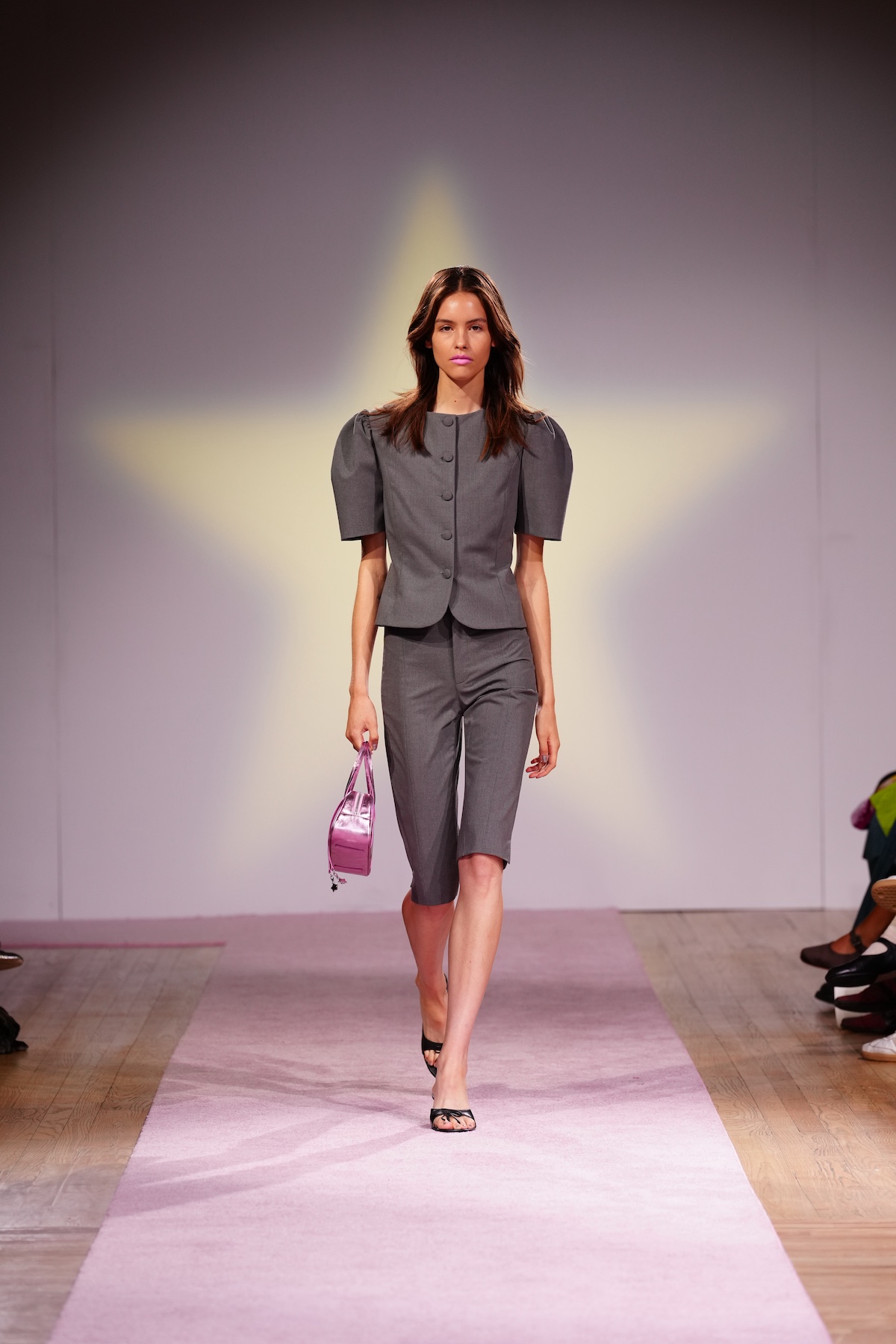

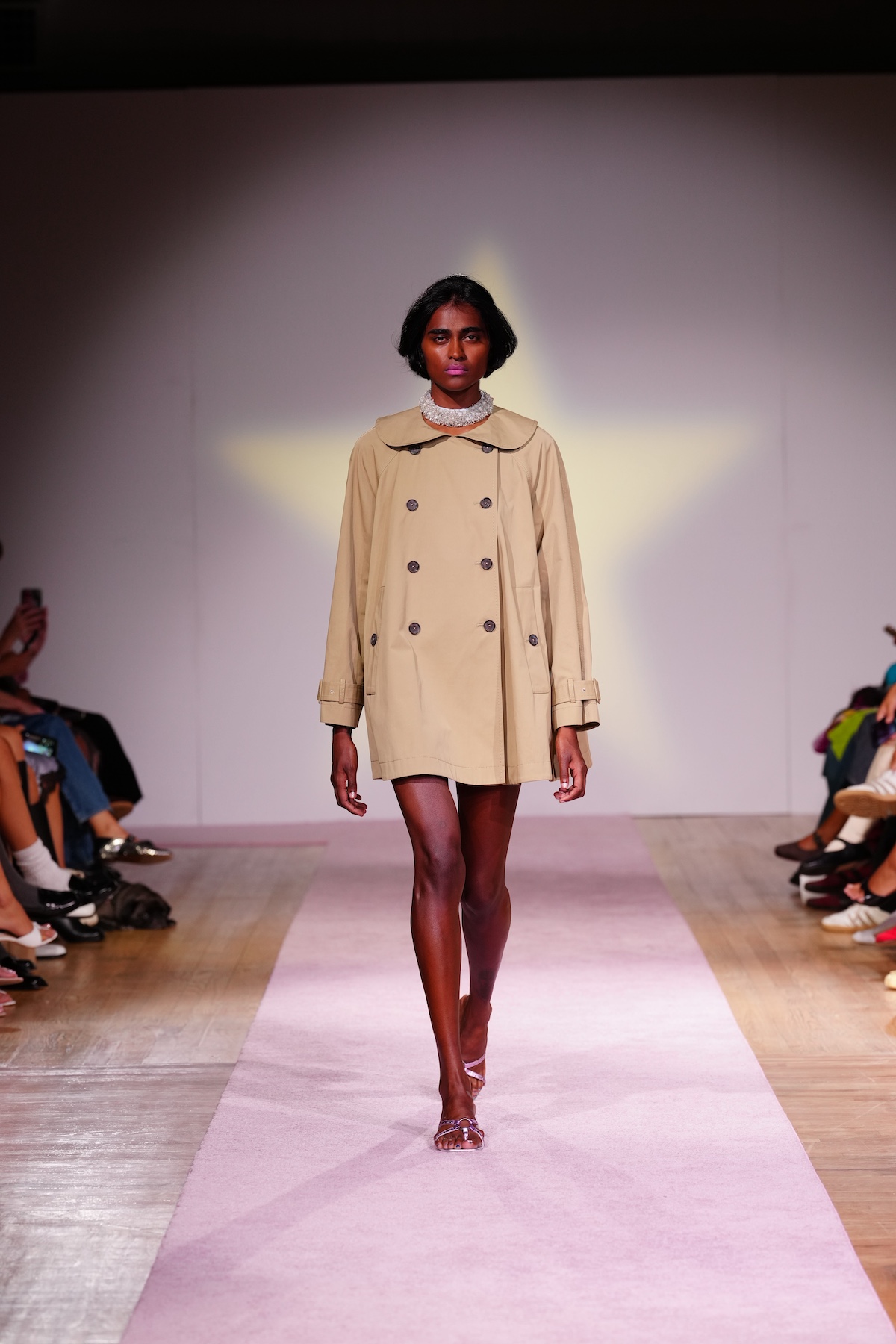
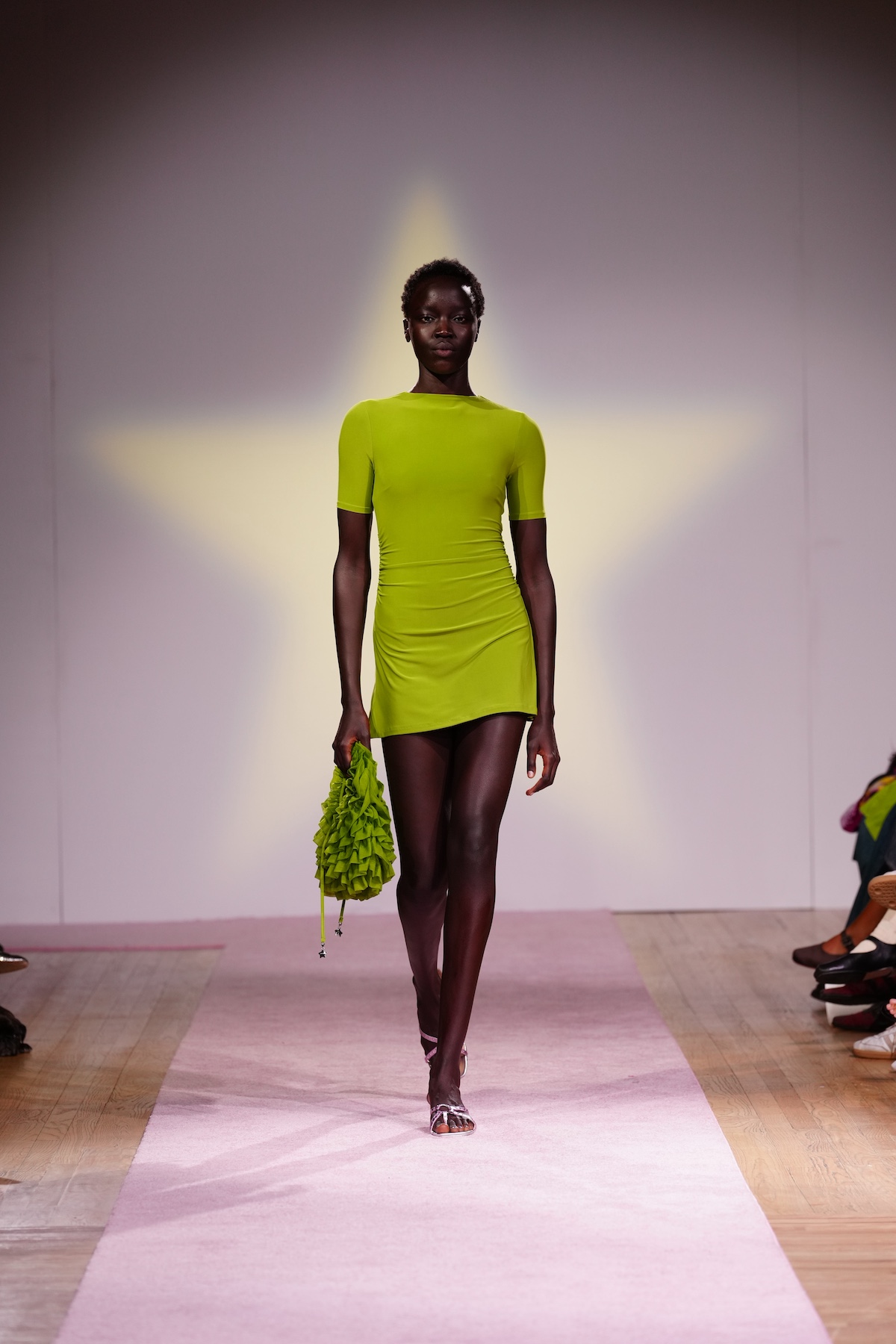
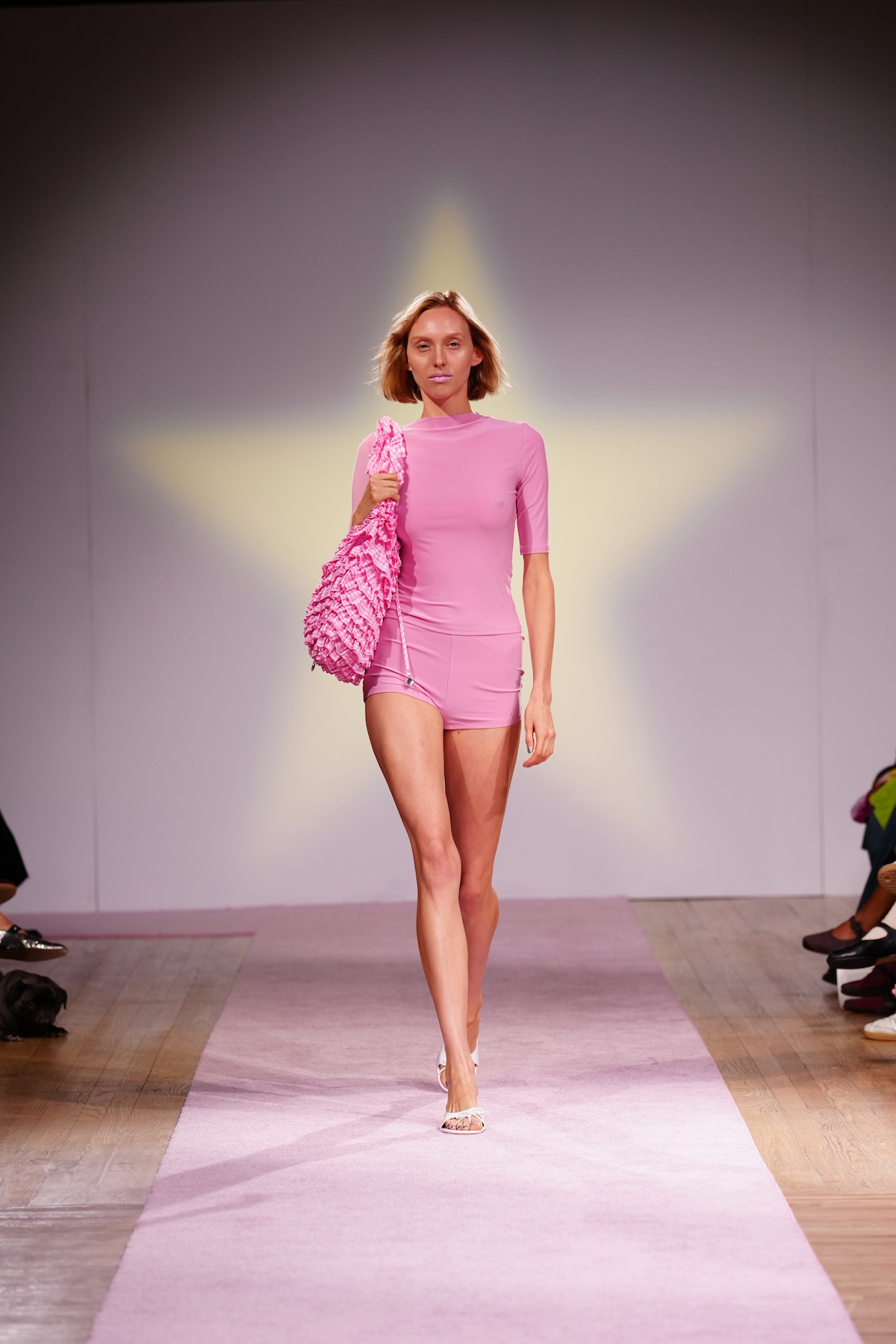



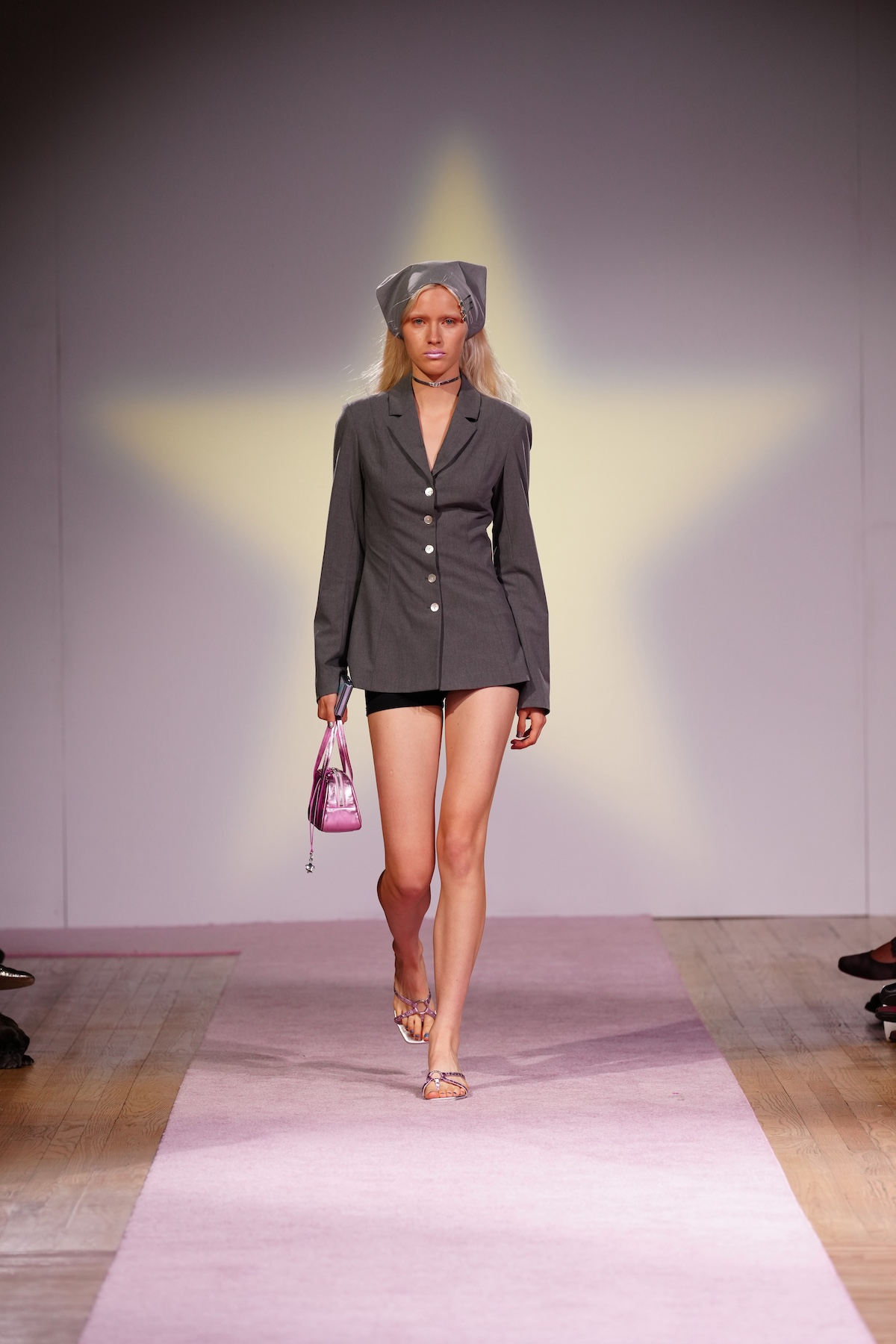
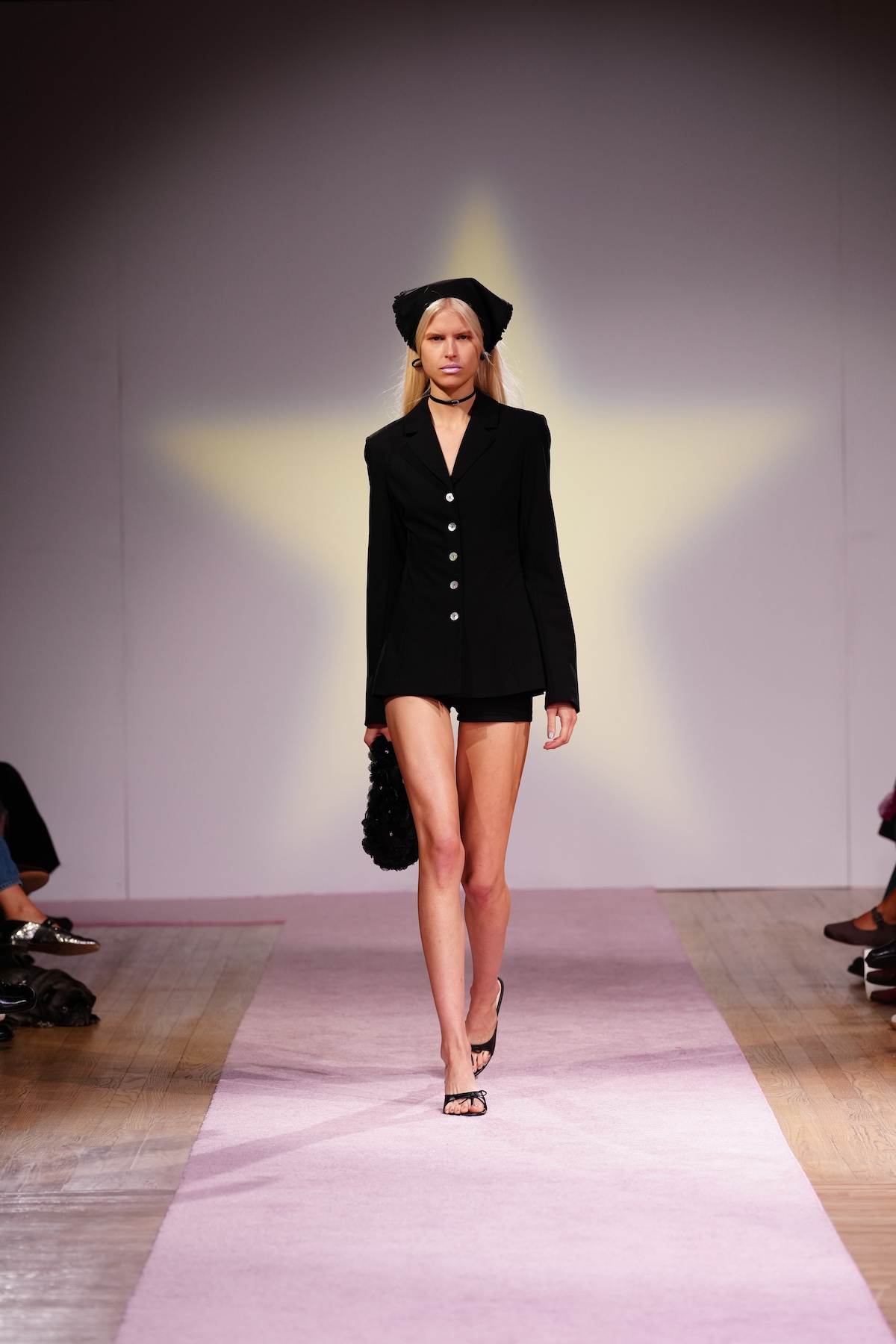
Sandy Liang
By Kayla Curtis Evans, office contributing writer
Photos by Filippo Fior courtesy of Sandy Liang
Sandy Liang SS25 brought a wave of nostalgia. Following her usual style codes — refined tailoring with a touch of childlike whimsy — the collection brought forth the matching sets and pre-styled mini dresses we all know and love, but this time, with a twist. The idea of a modern-day spy-girl inspired the womenswear designer; her look can keep up with her many adventures and on-the-go lifestyle. Nylon and satin co-ord sets in vibrant pastel and jewel tones graced the runway, along with intricate mini dresses, a new court shoe, and petite handbags accented with dainty bows. The runway featured Sandy’s signature star accent, highlighted by a grand spotlight and a light pink runway carpet. To complete the experience, guests were met with a boba tea truck outside of the show — a longtime dream the designer executed through a collaboration with HeyTea.
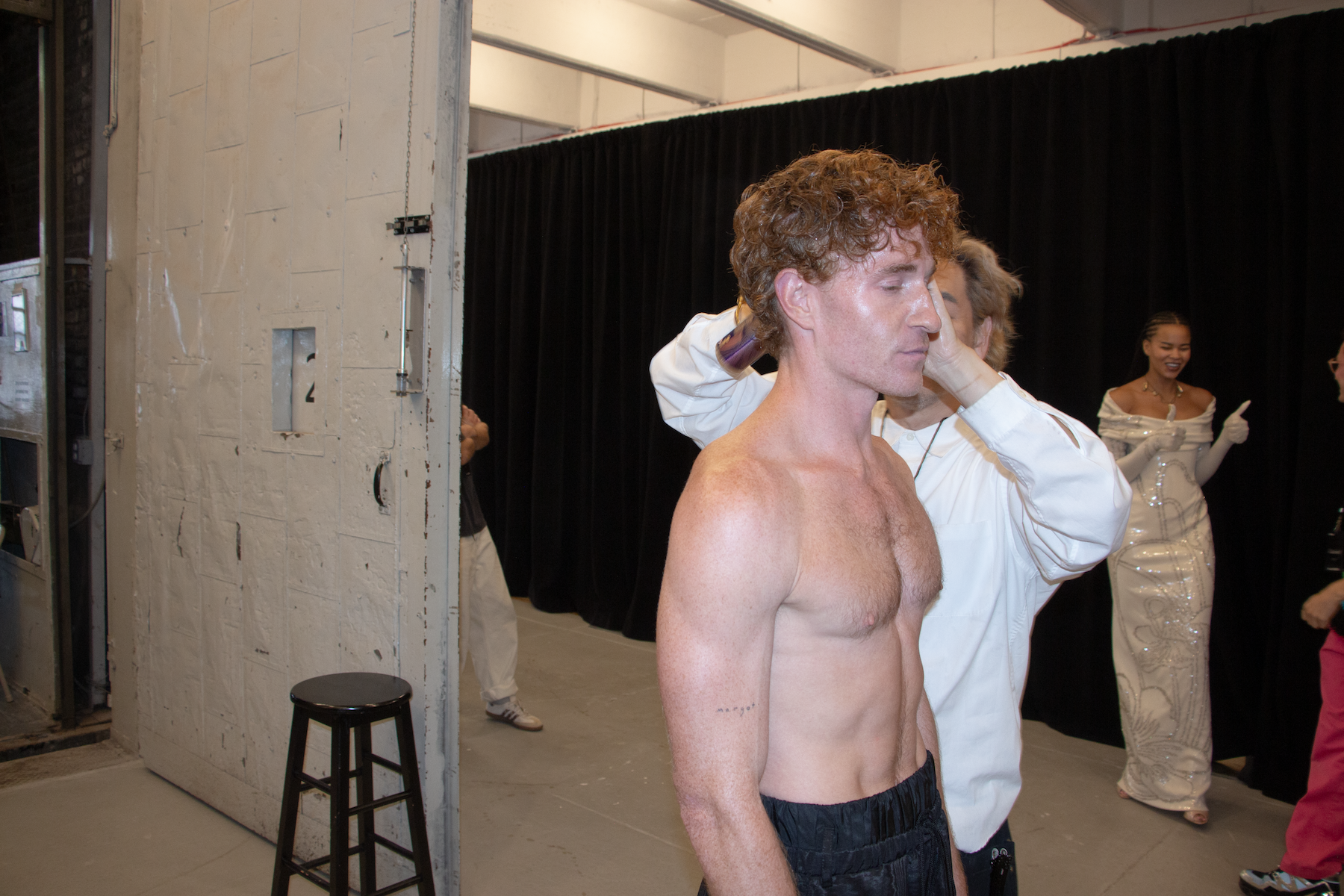
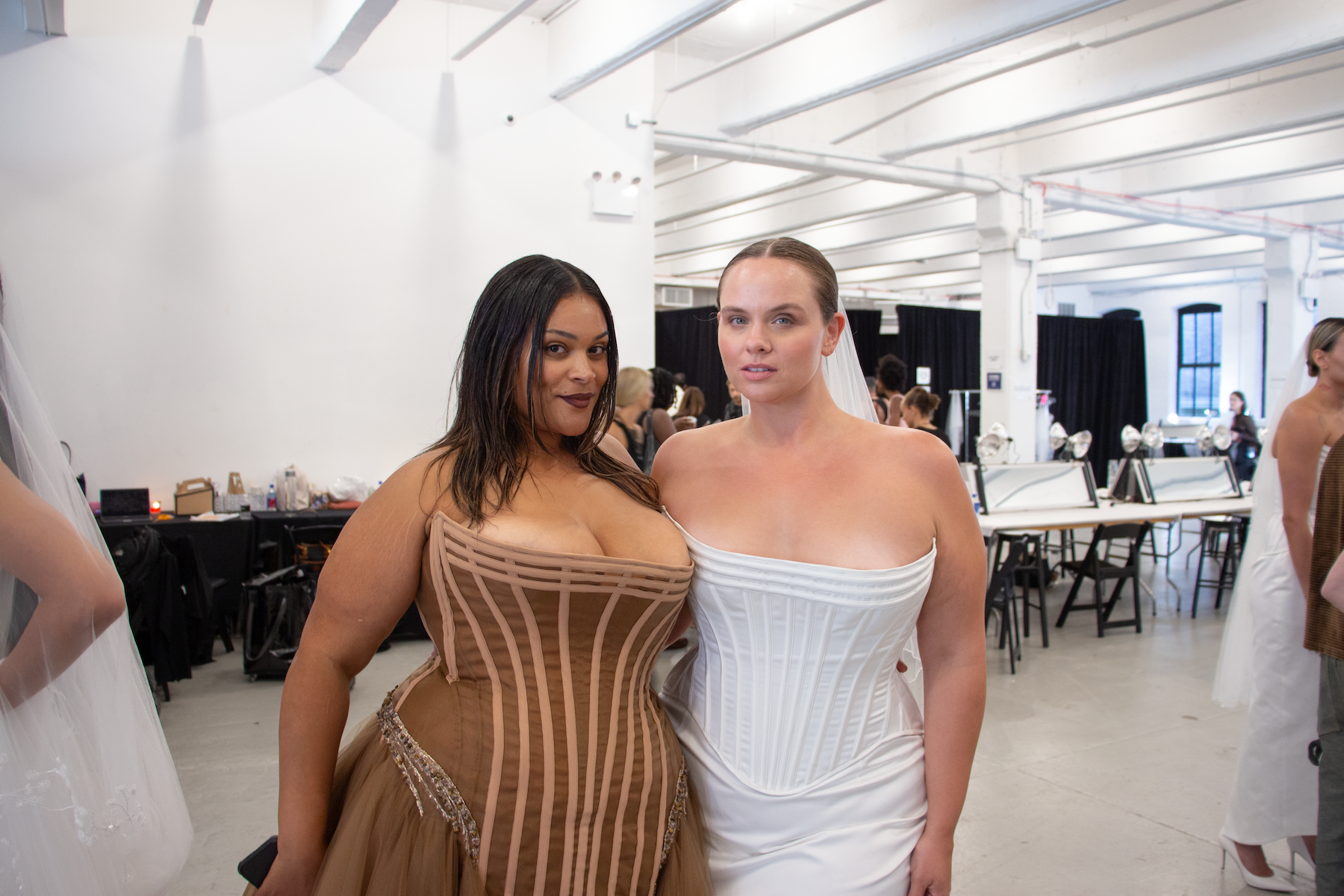
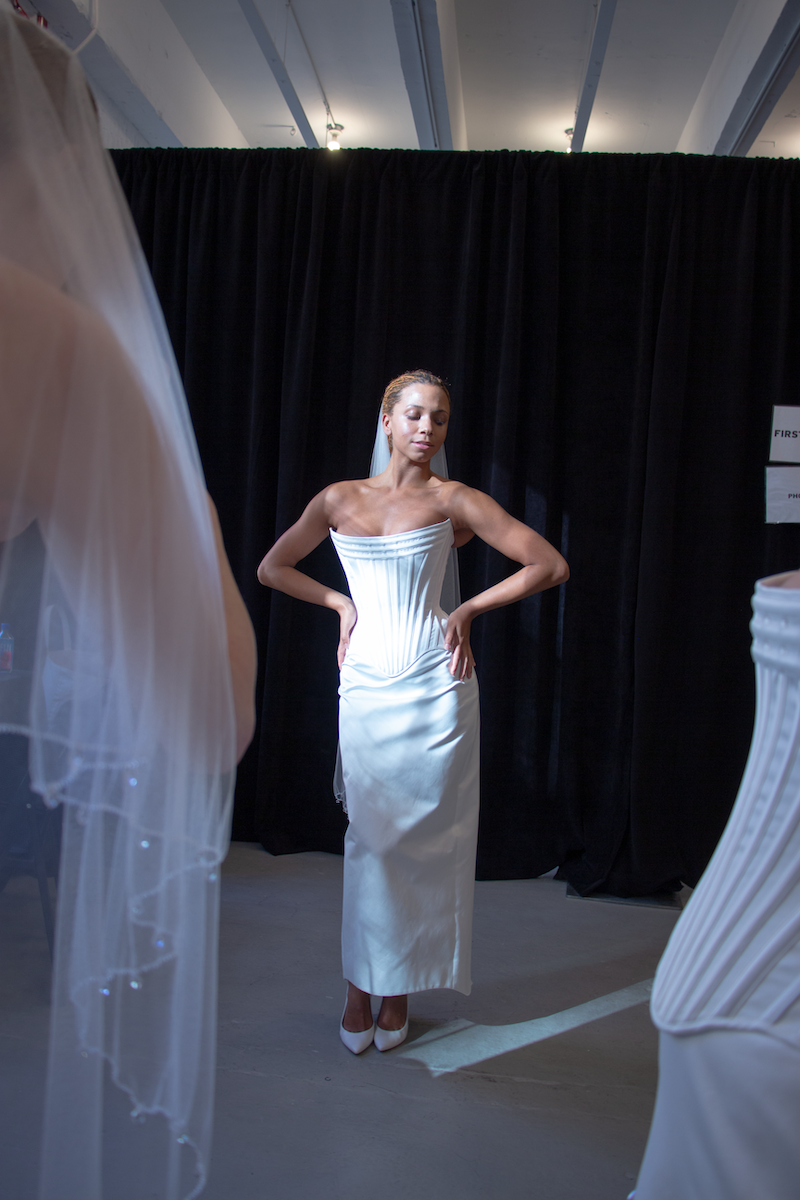
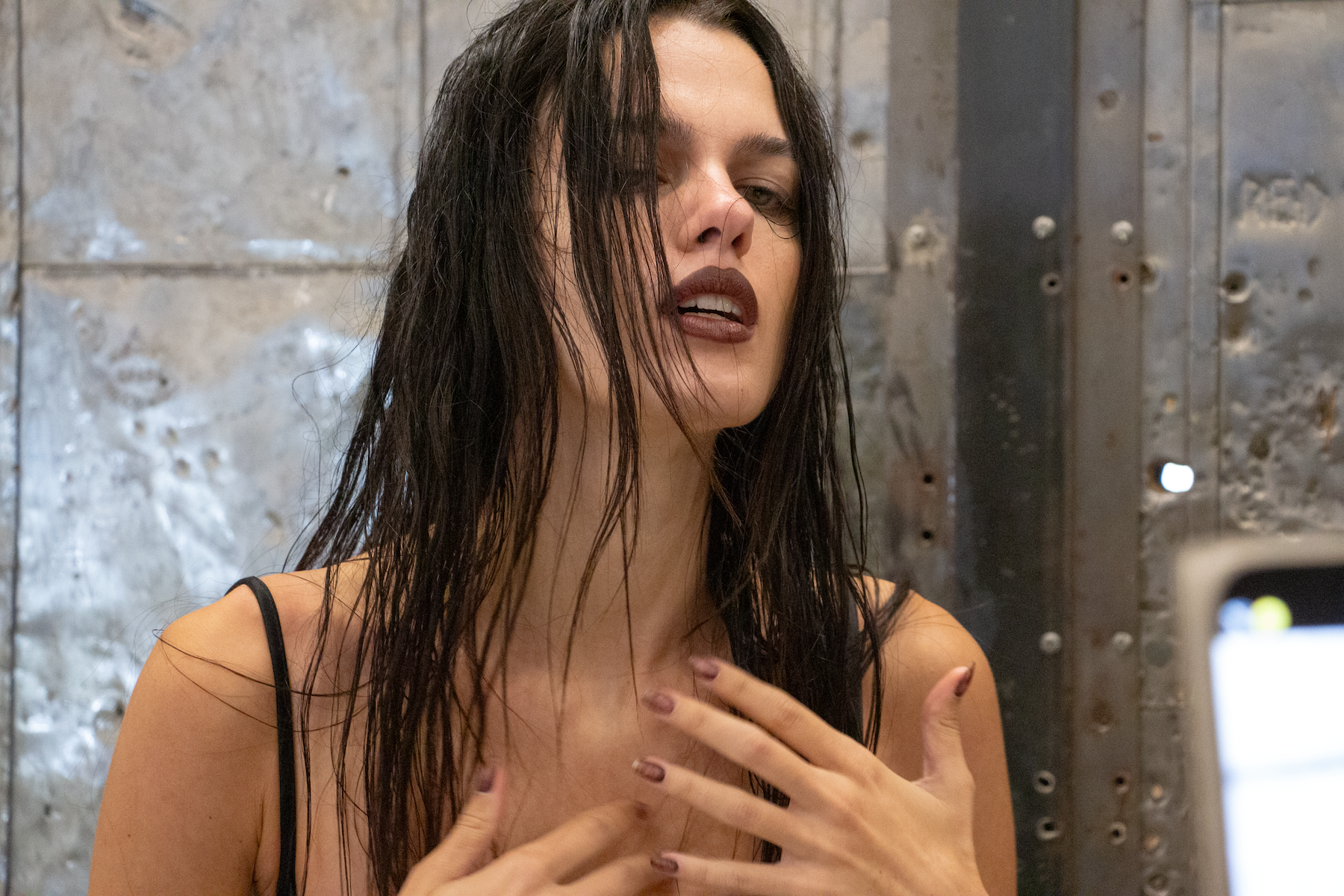
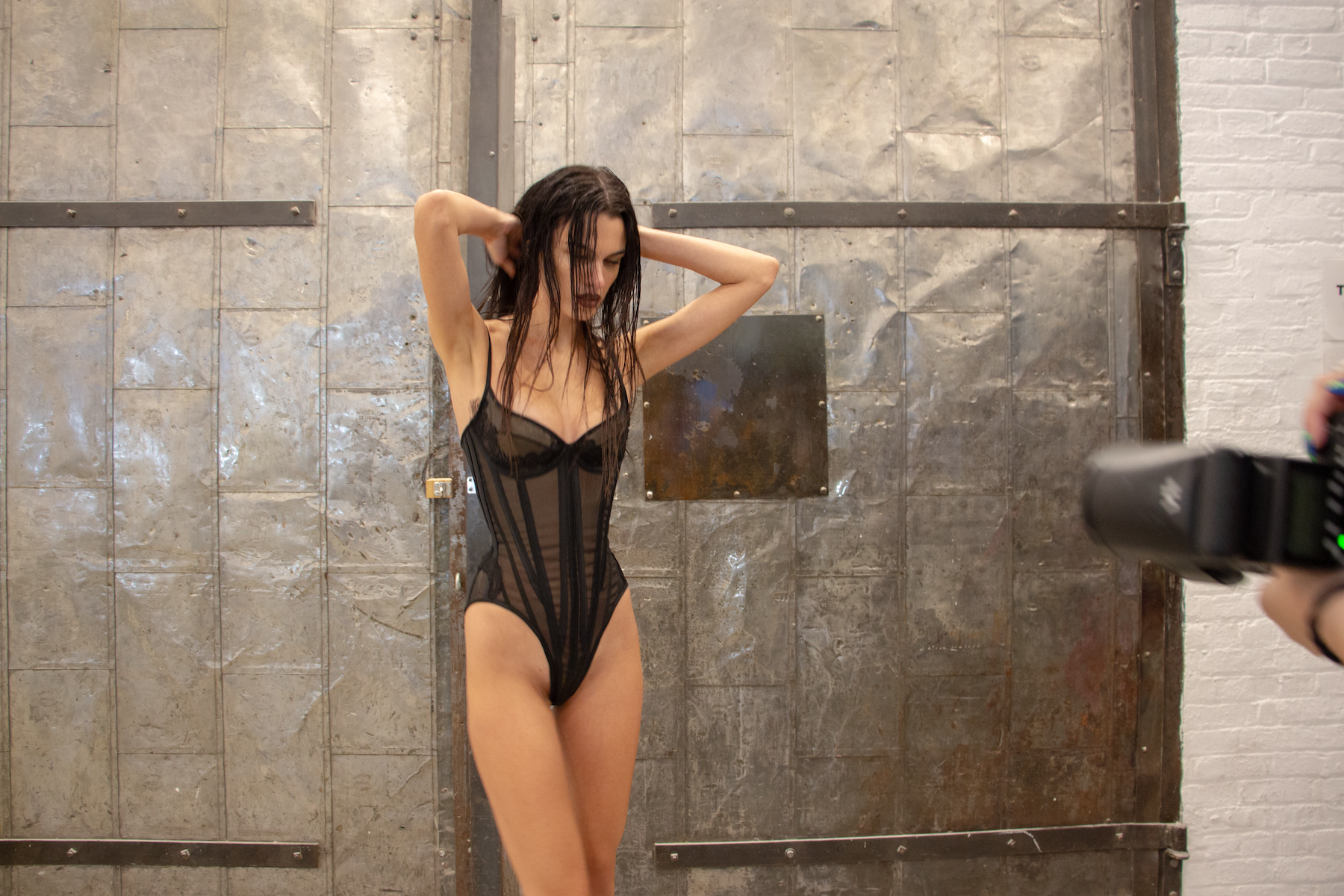

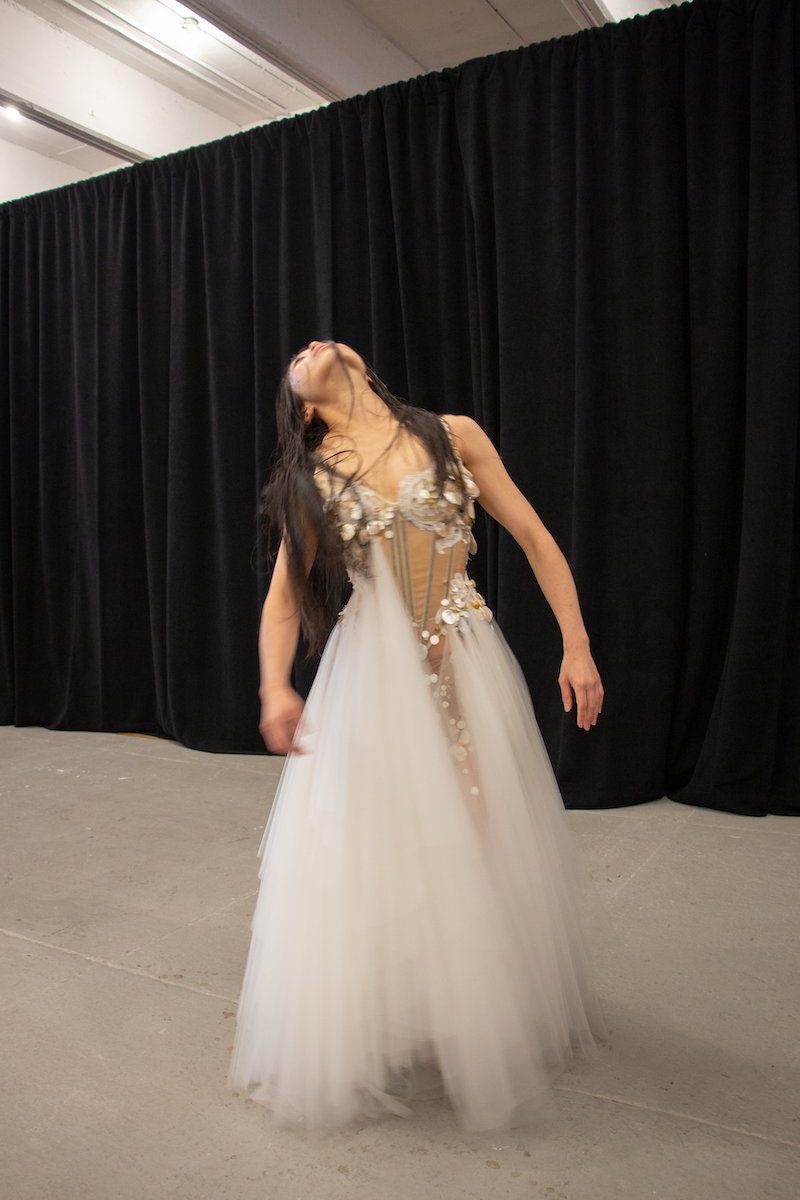
Wiederhoeft
By Kayla Curtis Evans, office contributing writer
Photos by Walker Andrews
For Wiederhoeft’s Spring/Summer 2025 collection titled, “Dearly Loved Children and Warriors of the Living Breath,” the audience was inserted into a fairytale scene — the typical Wiederhoeft runway experience. But this time around, Jackson Wiederhoeft reflects upon the idea of temporality and the last five years of the label. “We create temporary and also lasting impressions upon these bodies,” the show’s notes read, “We cinch and we pinch and we blow the house down.”
On the note of cinching, signature Wiederhoft elements came into play within the range, including form-fitting corsetting and breathtaking floor-length gowns. As the show progressed, a story of the forgotten unfolded. One solitary model sat in the middle of the room, gazing upon the others who paraded out in a range of sequined frocks, bodysuits that emphasized the human form, and classic Wiederhoeft bridal-inspired ensembles. As the presentation neared its end, the singular model remained alone — the lights dimmed, and the show came to a close.
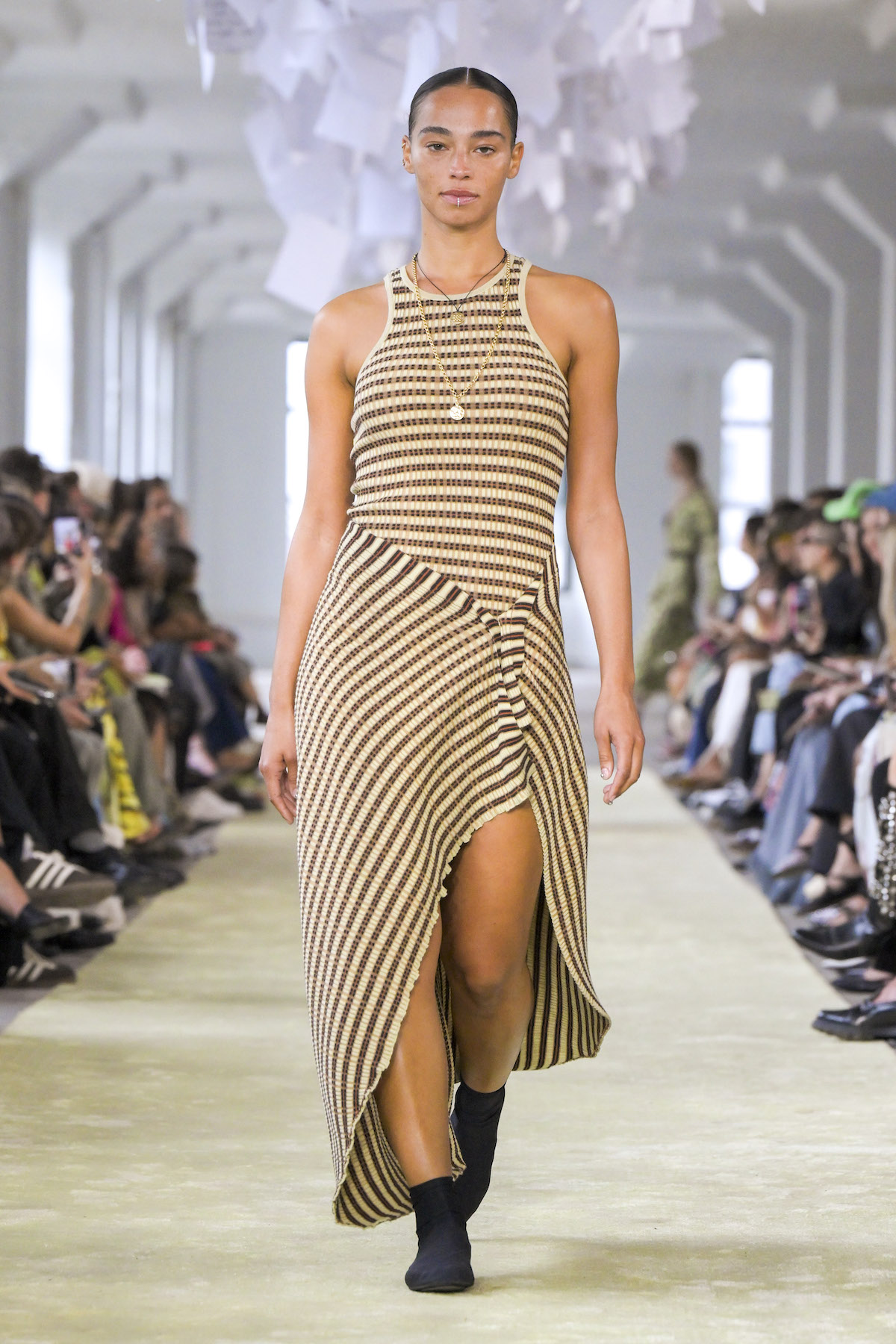
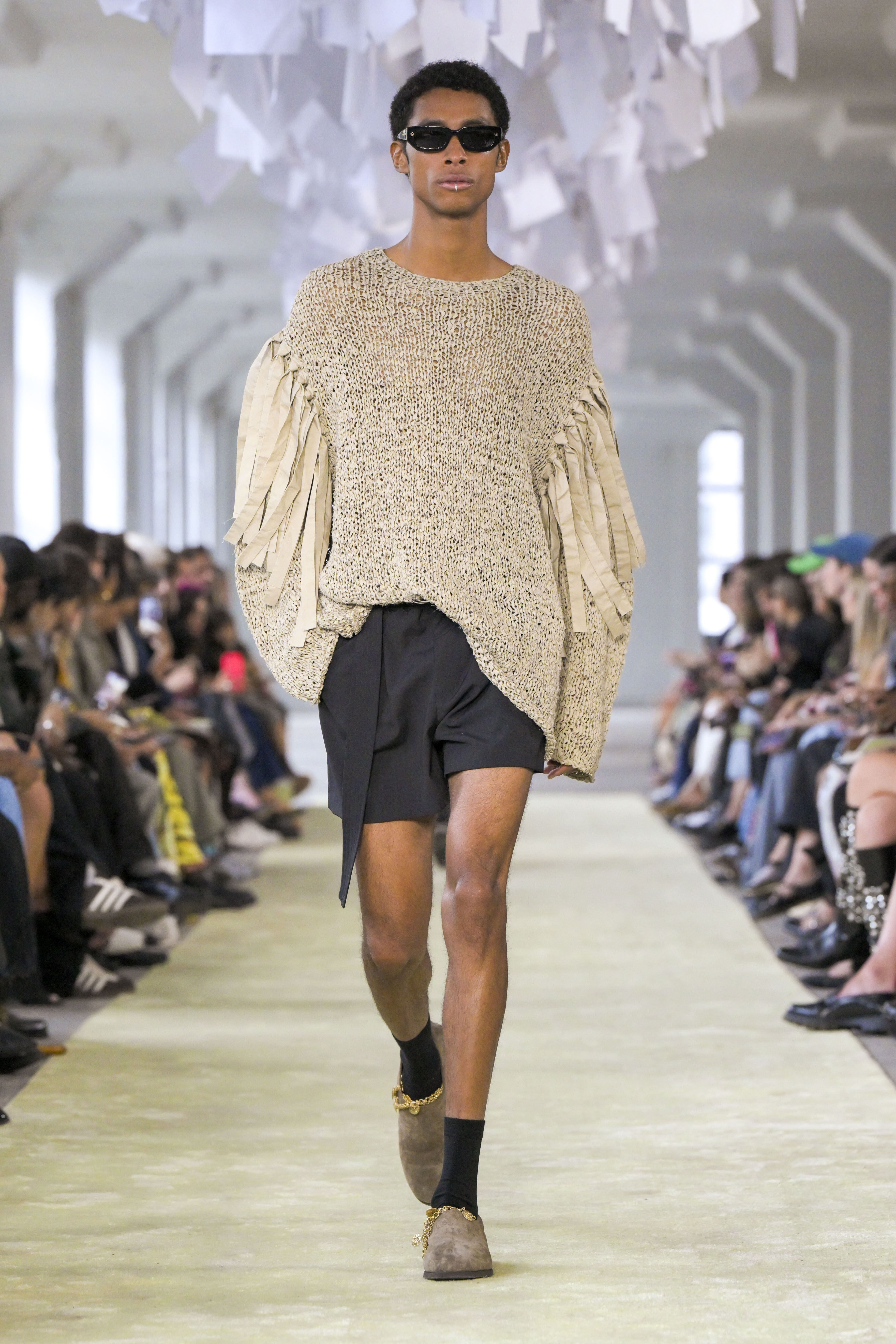
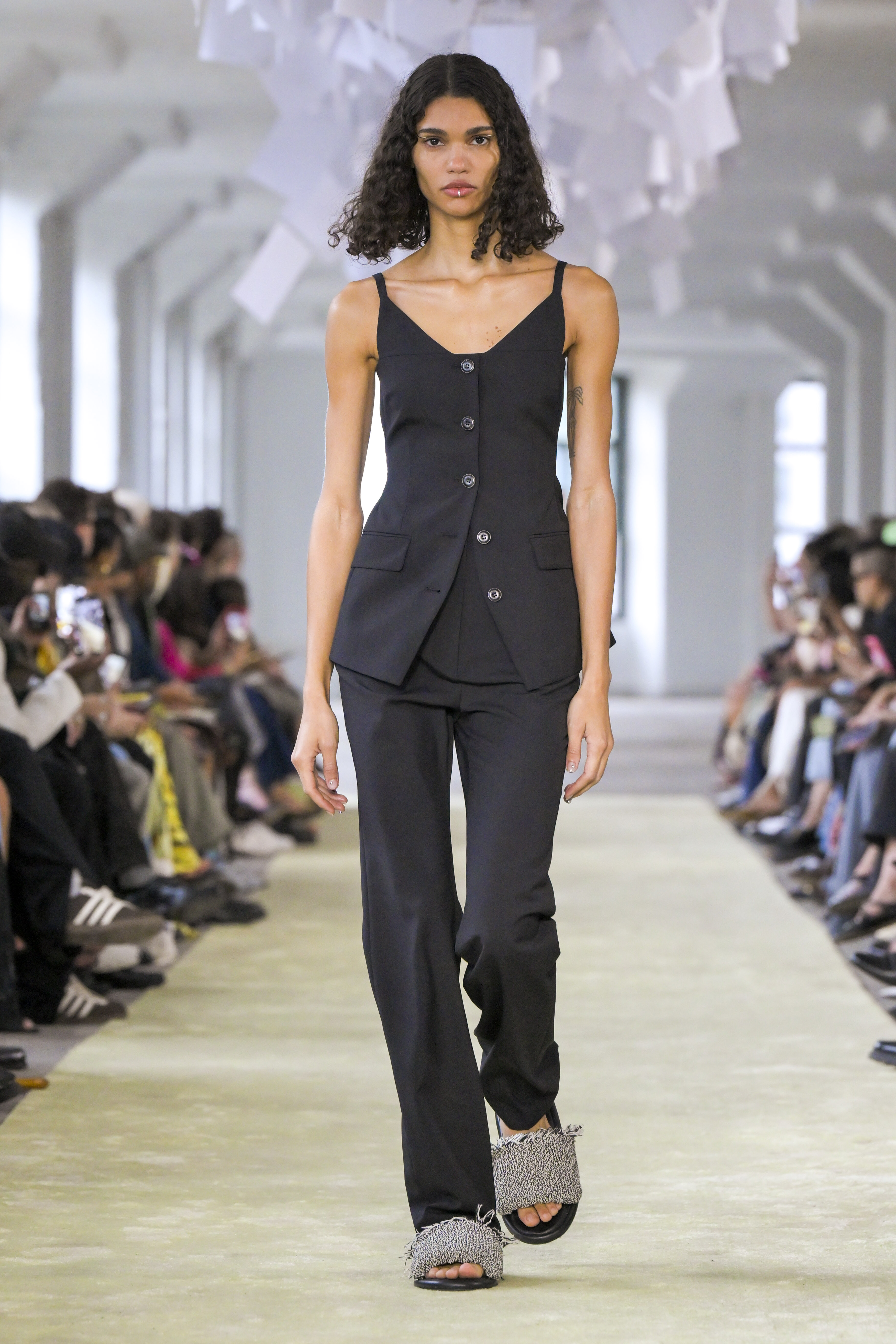

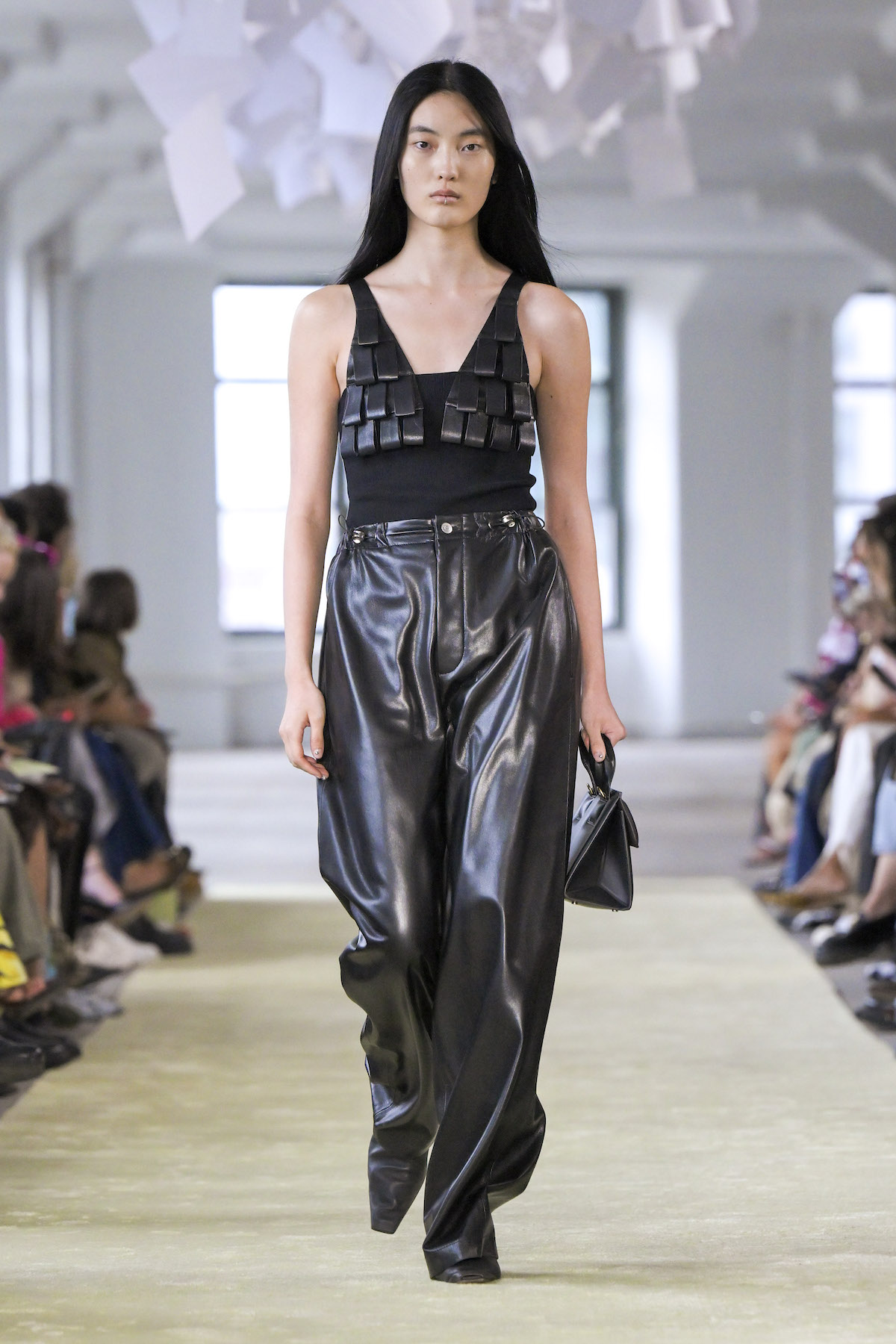
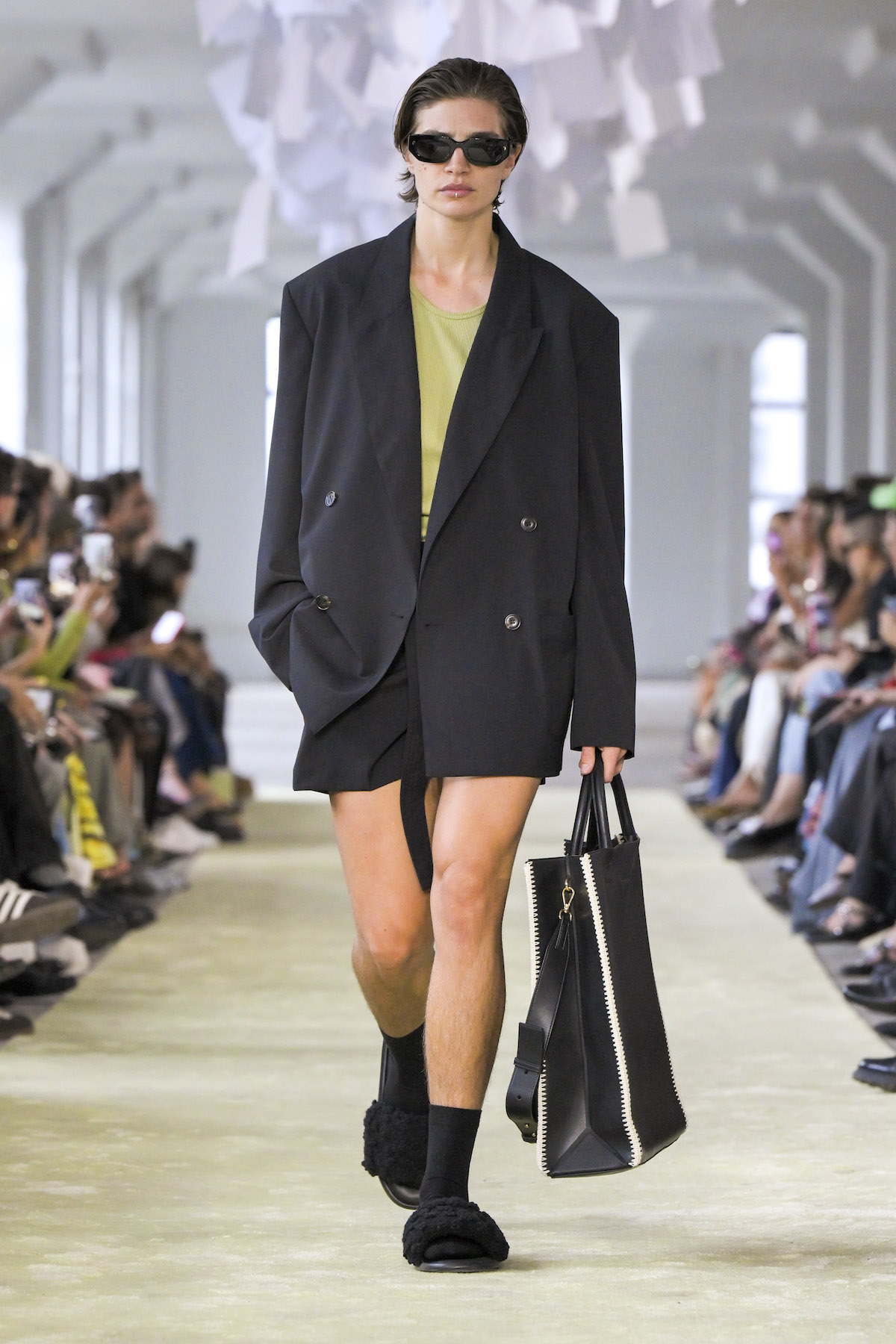
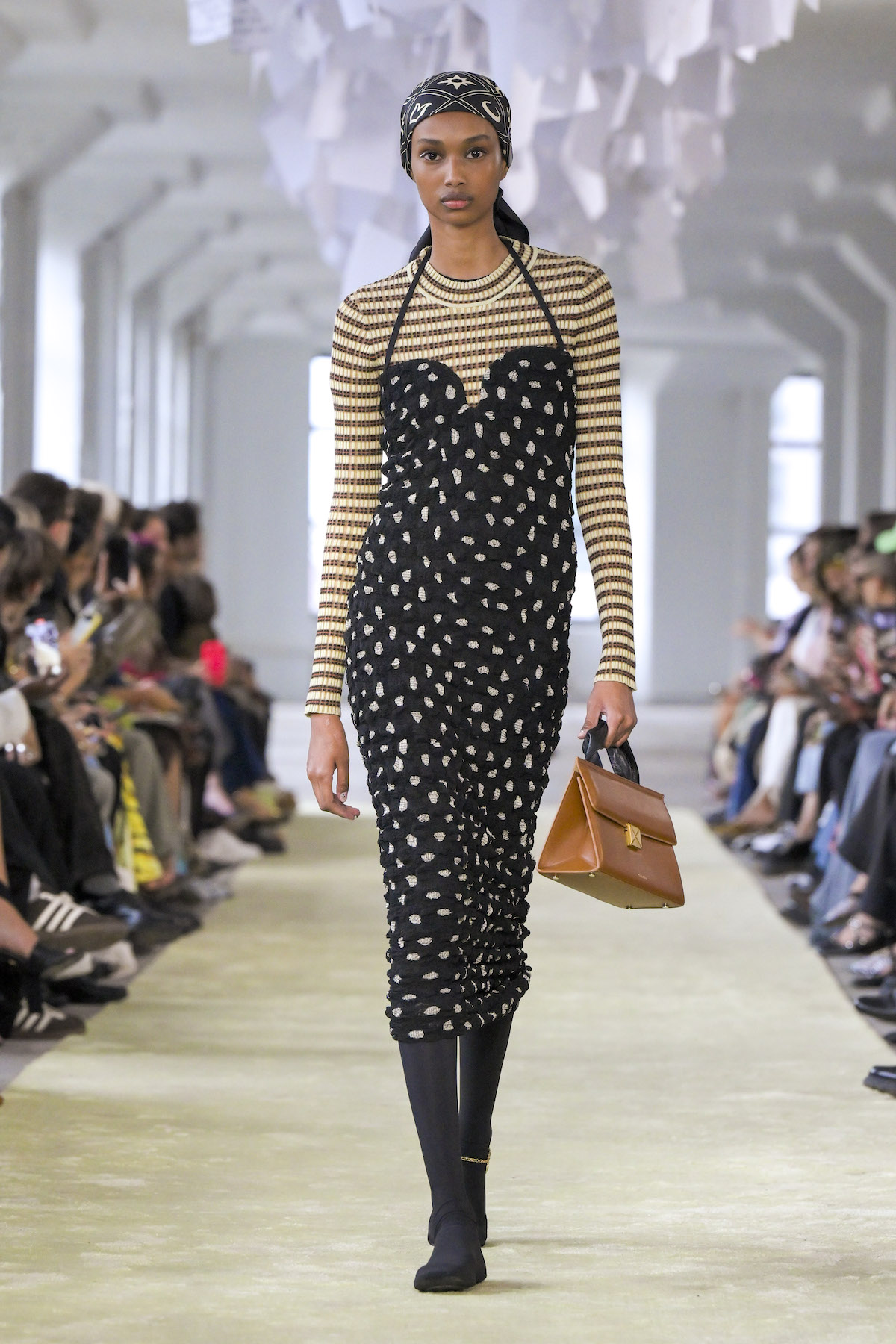
Nanushka
By Sam Falb, office contributing writer
Photos courtesy of Nanushka
In the blink of an eye (literally) a wash of silver could be seen splashed across the eyelids of one model walking down the Nanushka runway for its “Paper” SS25 collection. The brand’s arrival in New York was accompanied by a bevy of playful accents, deep inspiration from art history and design books, and a new take on poplin fringe and metallic pleats. For its 20th anniversary, designer Sandra Sandor chose to look inward to the design codes that make Nanushka, her childhood nickname, its quintessential self: “It was imperative to highlight the human touch process of design,” she said. This meant satin and rib jersey fabric blocking, which experimented with bodily fluidity, as well as playing with ratios and proportions. The cavernous downtown show-space saw the paper theme visualized in large tufts and sheets hanging down from the ceiling in a continuous line parallel to the runway. As guests left, they were treated to a comprehensive photo album of sorts, which charted the past two decades of the brand’s growth with personal photos, sketches, and a celebratory mood of exhalation.

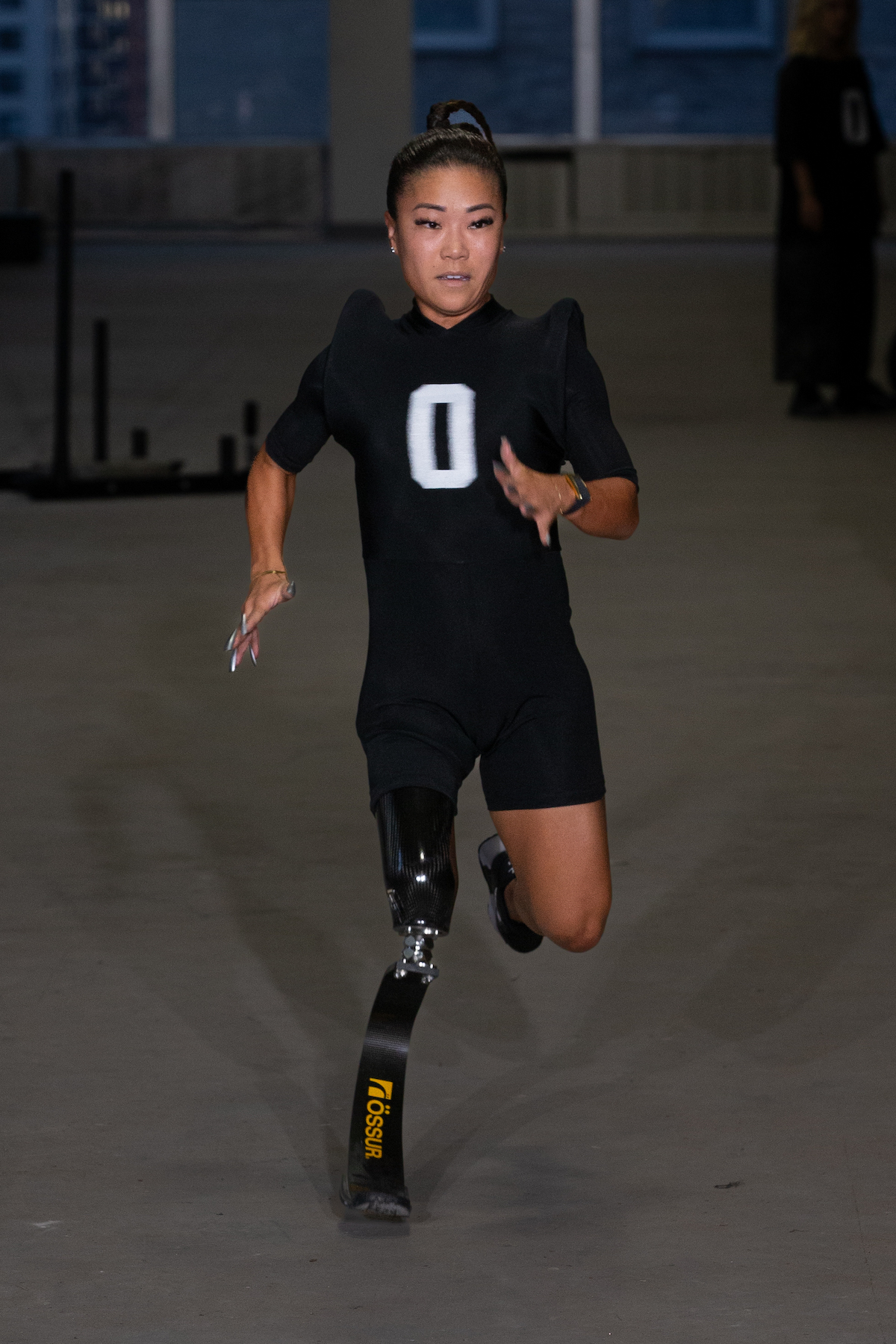
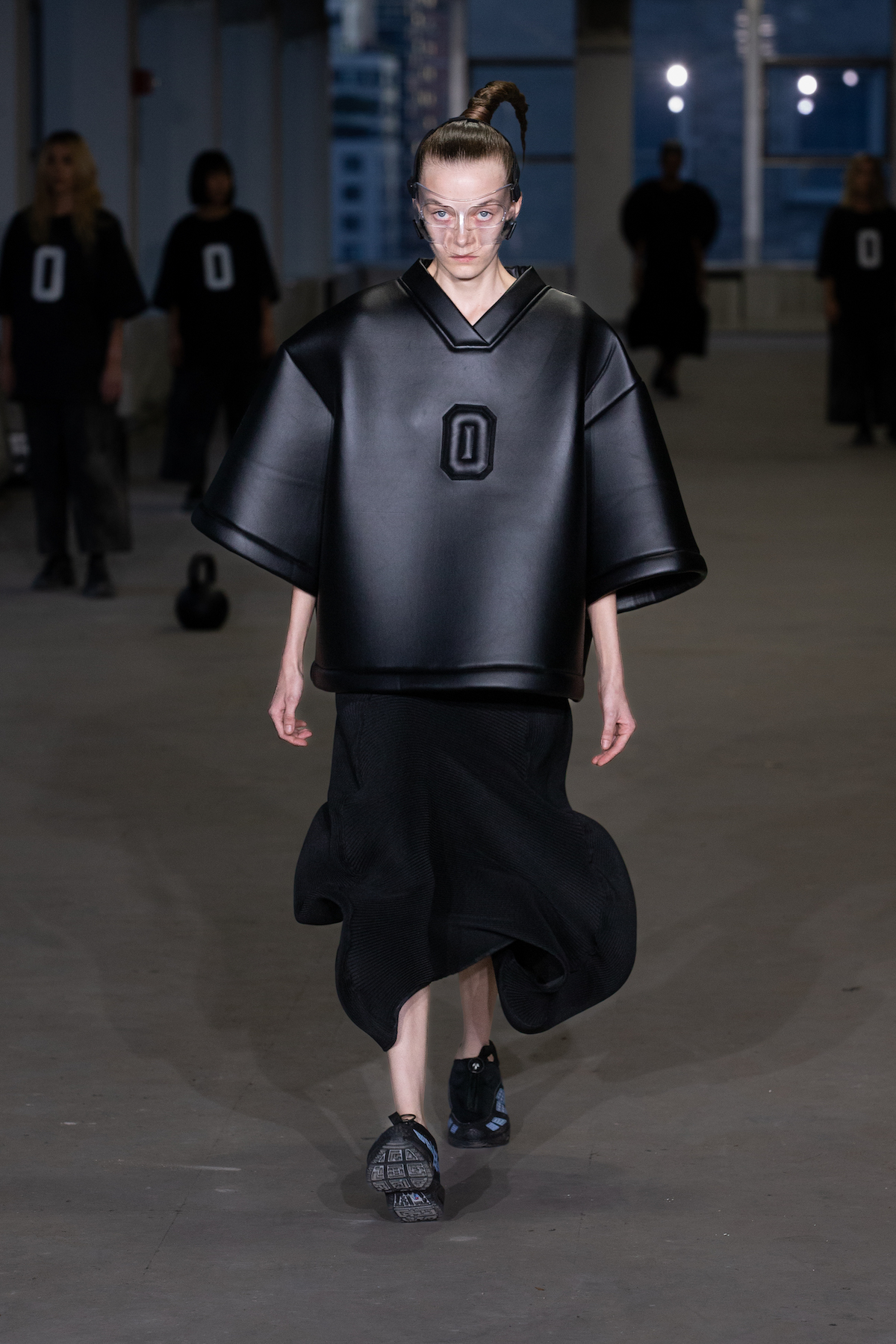

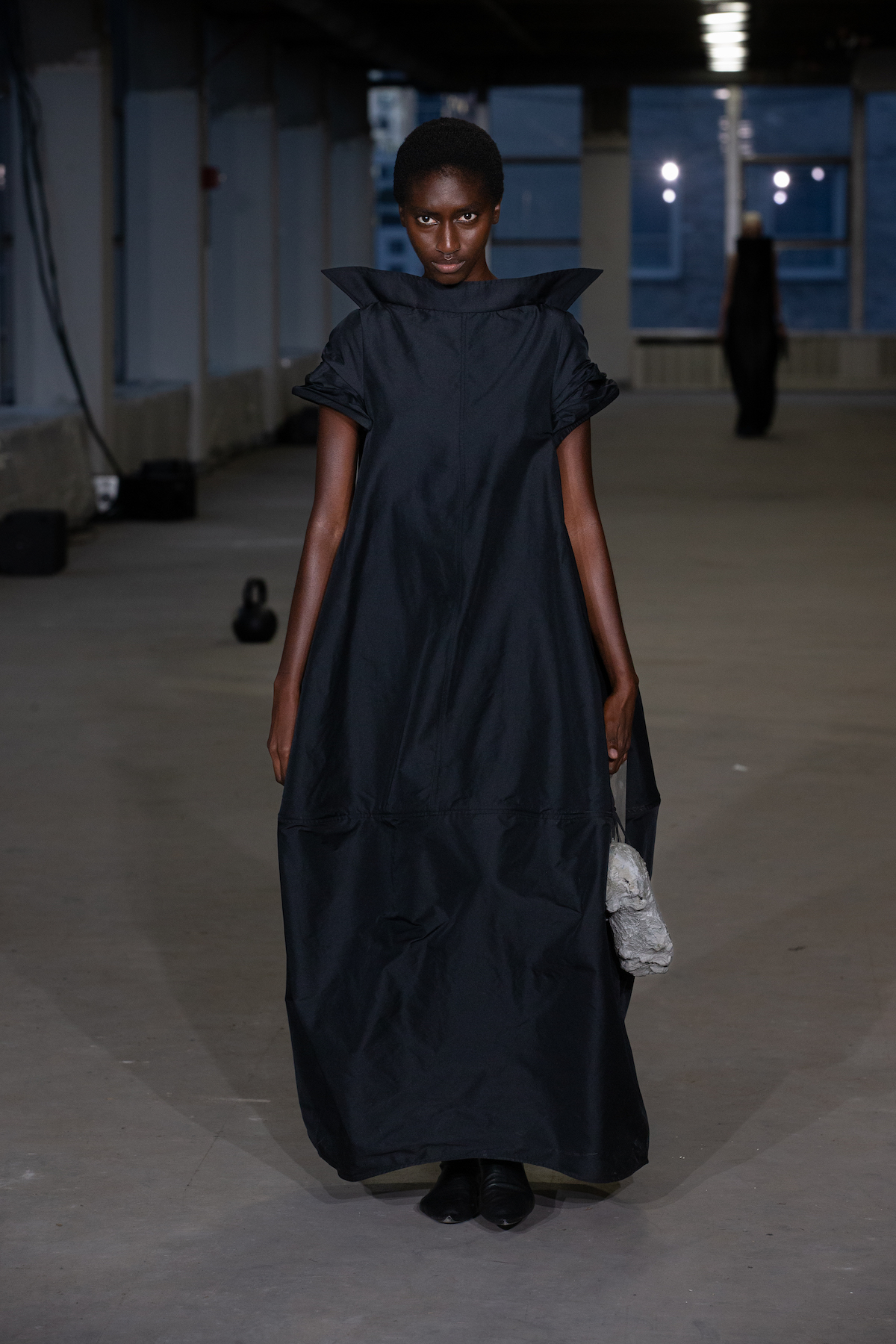

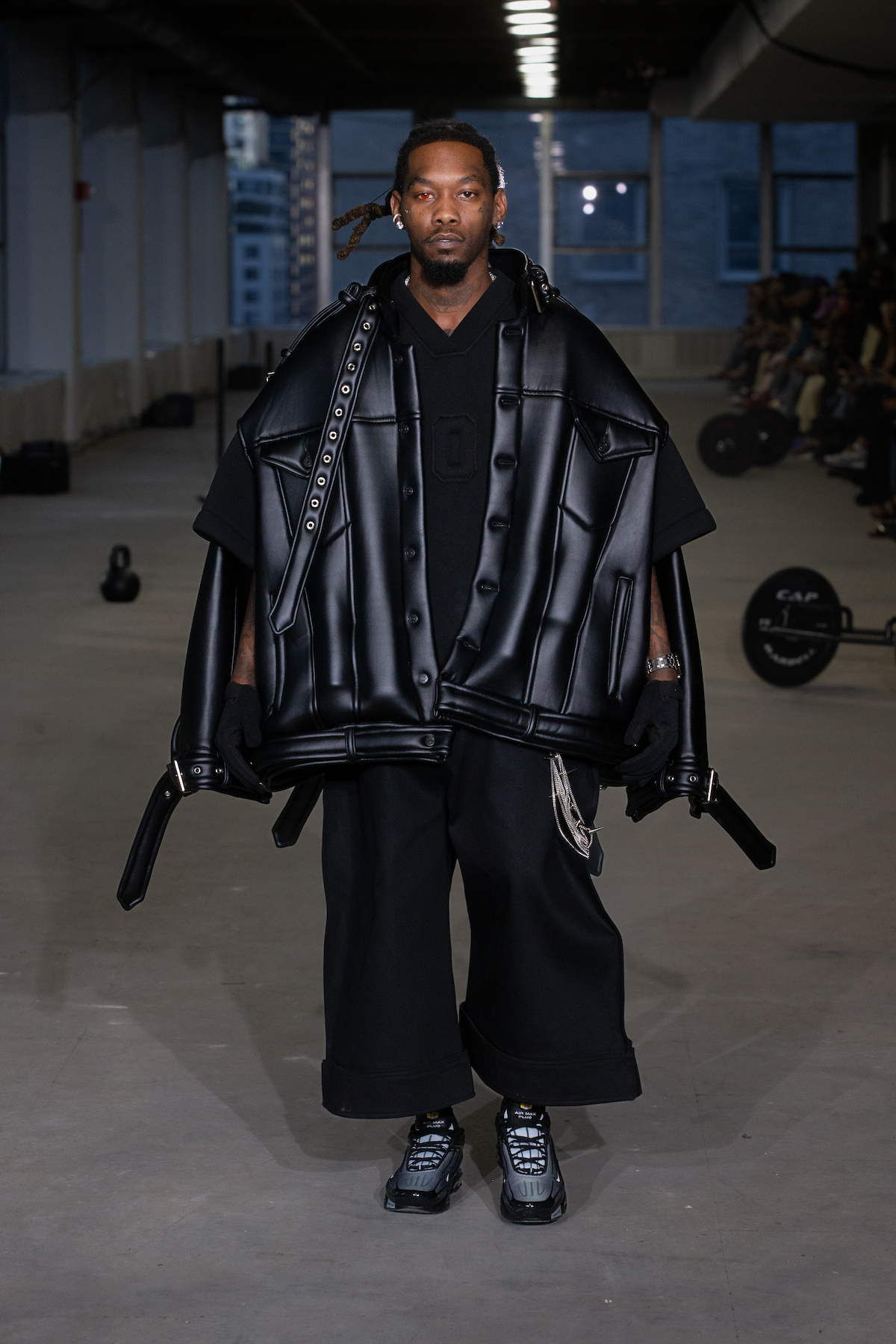
Melitta Baumeister
By Sam Falb, office contributing writer
Photos courtesy of Melitta Baumeister
You don’t often see a garment releasing steam out of its stitches, but at Melitta Baumeister, that was table stakes. A larger-than-life silver dress walked the runway in explosive proportions, while hair, slicked back into the slickest of long, braided spikes, stood on guard for the gathered audience at the designer’s first NYFW show. “I love draping and sculpting things using speed and acceleration, that felt very interesting to me,” Baumeister shared after the show. Paralympic runner Scout Bassett further illustrated the theme of athleticism in a special appearance – an opening sprint down the runway in the designer’s gear. Not to be missed were the classic cone-shaped hats dotted on attendees, varied models, and even some of the public relations team, which have become synonymous with the brand. An attention to the richest, brightest color (or) the deepest black was also on hearty display, with two variations of yellow: electric and lemony, as well as soft and creamy, across shoes, dresses, and bags.
